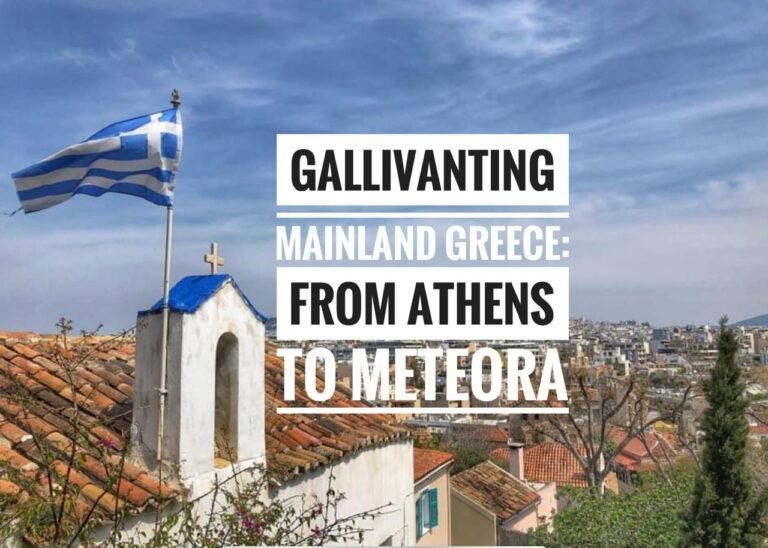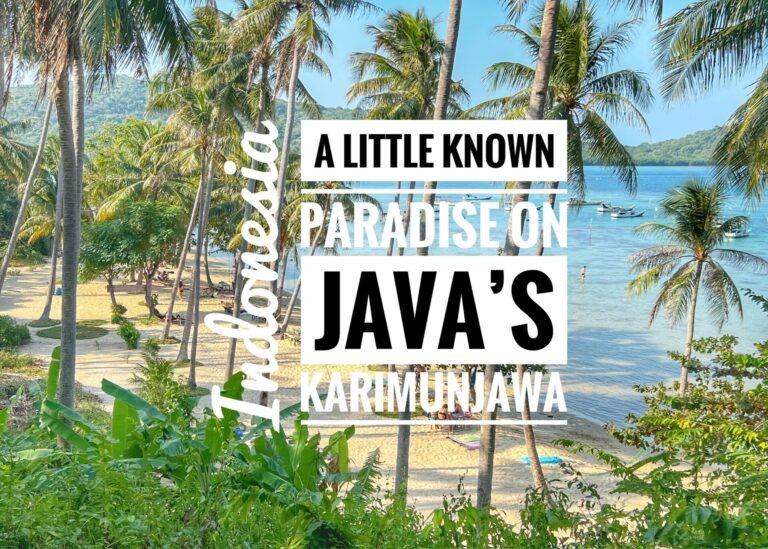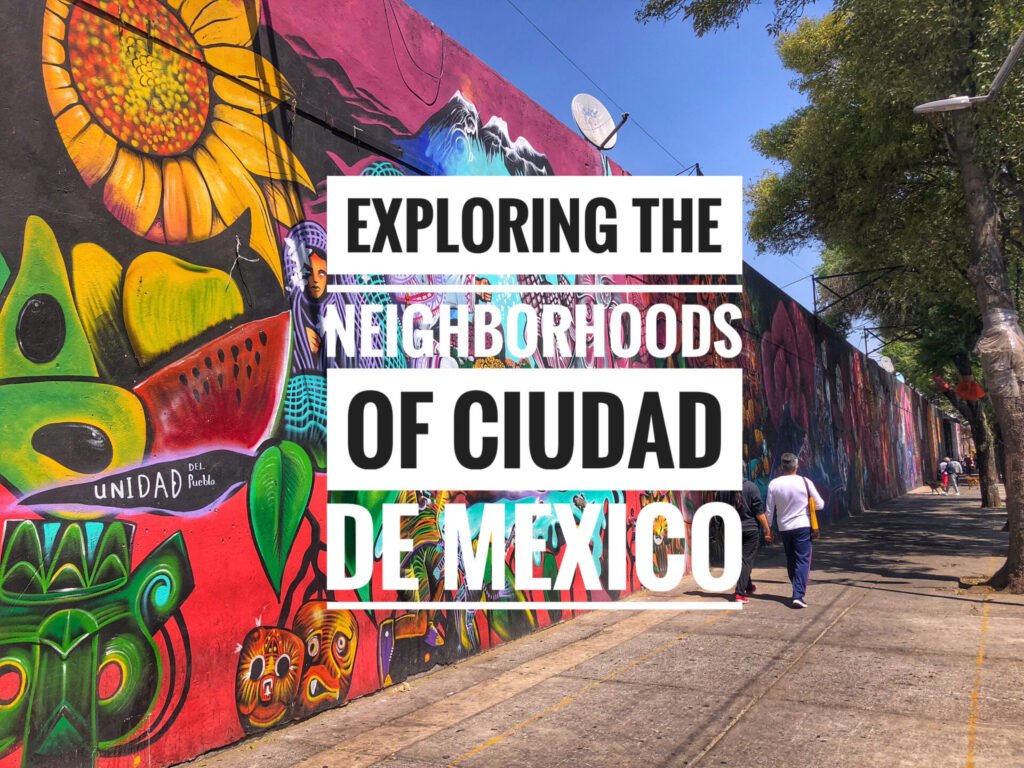
Mexico City. This fifth largest world city at 23 million, often conjures up fear among many people…of crime, of chaos, of congestion of crust-moving. (Yes, there are a lot of earthquakes, of which we even experienced several small tremors during our short time there). But, in fact, this dynamic city has morphed significantly into a true treasure, even since Greg first saw it 22 years ago.
It features an exploding foodie scene, easy-to-use and cheap public transport, trendy and historical neighborhoods, and world-class museums. In short, this megapolis uniquely founded on a lakebed in 1325 should never be skipped on a trip to Mexico. In our two weeks, we were glad to soak in a smattering of the neighborhoods, including the historic center, Polanco, Jamaica, Condesa, Roma, Chapuletepec Park, andCoyoacán. That said, it would take years and lots of contacts with locals to truly capture the full essence of this magnificent city.
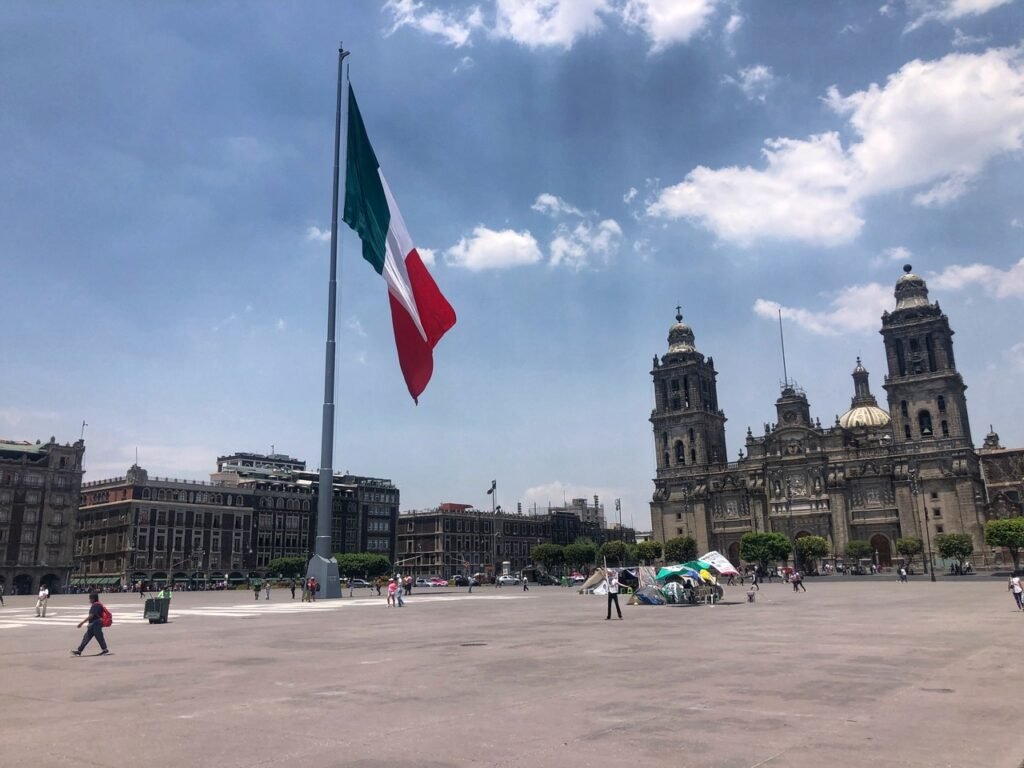
El Centro
The pulsing heart of Mexico City is the Zócalo, which has been a gathering place for Mexicans since Aztec times, and at one time, was one of the biggest squares in the world. It is flanked by the Metropolitan Cathedral to the north, and the National Palace to the east, as well as many other historic buildings. A colossal Mexican flag occupies the center, which is ceremoniously lowered and raised each day. For scale, you can see pint-sized Mandy in black pants and a white shirt to the right of the flag.

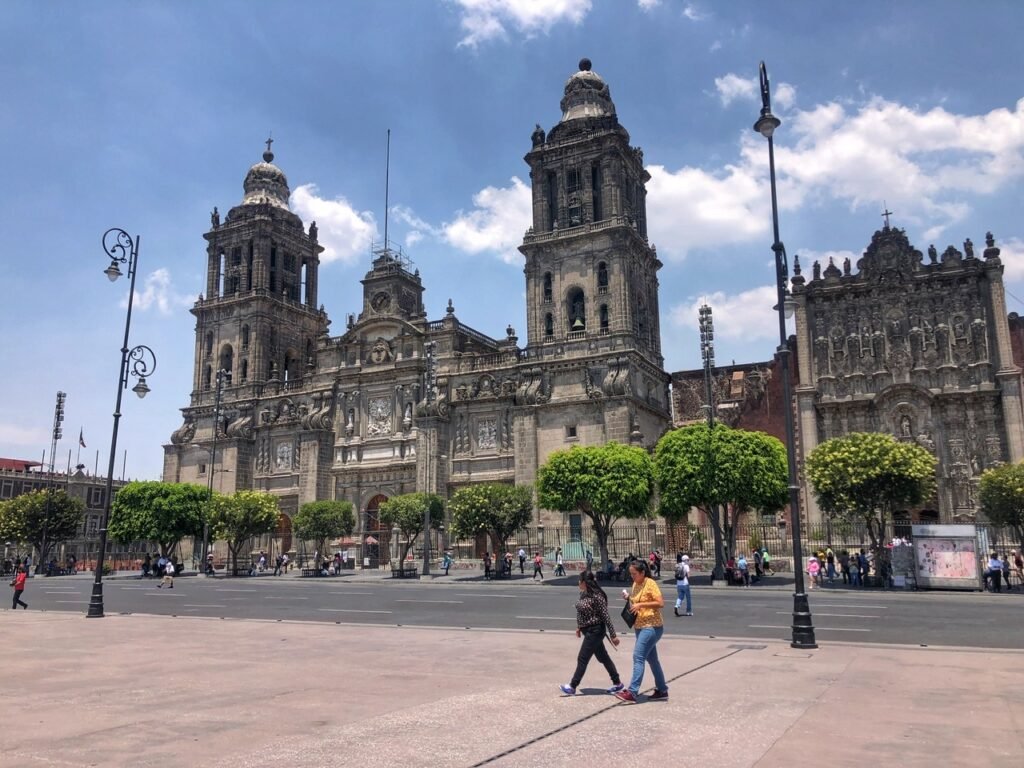
The astounding flag in the Zocolo measures 50 by 28.6 meters (164 by 94 feet) and weighs a whopping 230 kilograms (507 pounds.) (Wikipedia)
Nearby, the Metropolitan Cathedral was piled majestically atop the former Aztec sacred precinct near the Templo Mayor, starting in 1573. It was built shortly after the Spanish conquest of Tenochtitlan (what used to be Mexico City).

The National Palace is the executive government of Mexico and the official residence of the president. It has been a palace for the ruling class of Mexico since the Aztec Empire and much of the current palace’s building materials are from the original one that belonged to the 16th-century leader Moctezuma II.
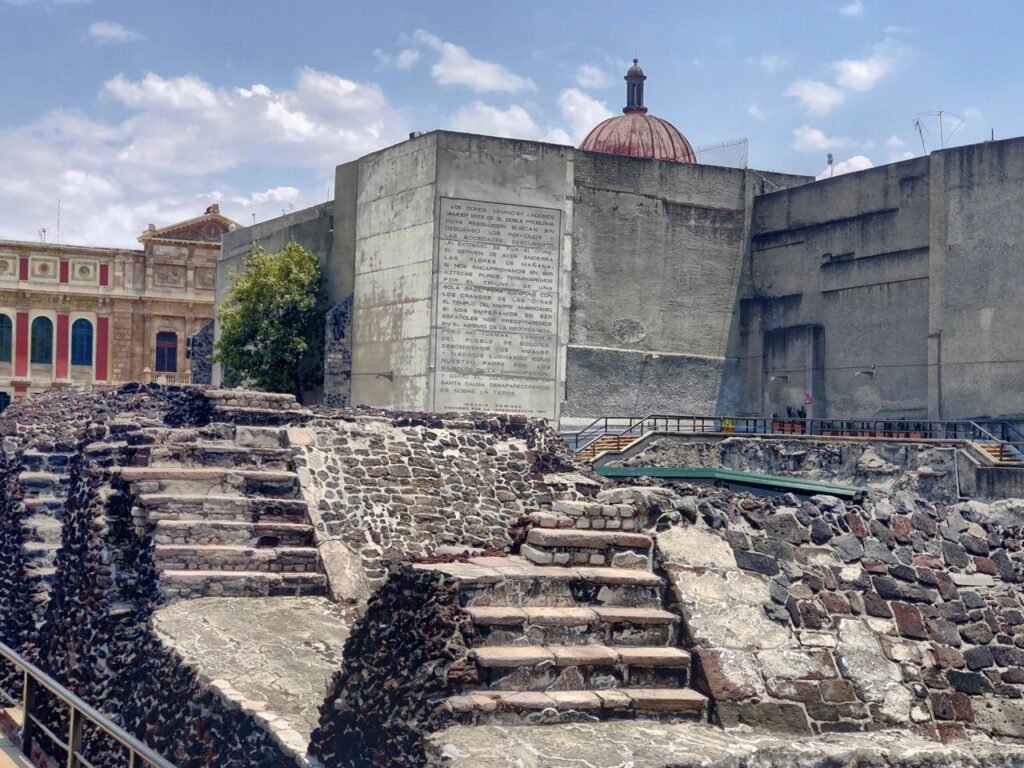
Only steps from the Zocalo, this is what remains of the Templo Mayor pyramid constructed first in 1325. This was the main temple of the Mexica people before the Spanish destroyed it to make way for their fancy cathedral. The stones were pillaged and redistributed, which is why there is not much left. It was not until the early 20th century that it was rediscovered.
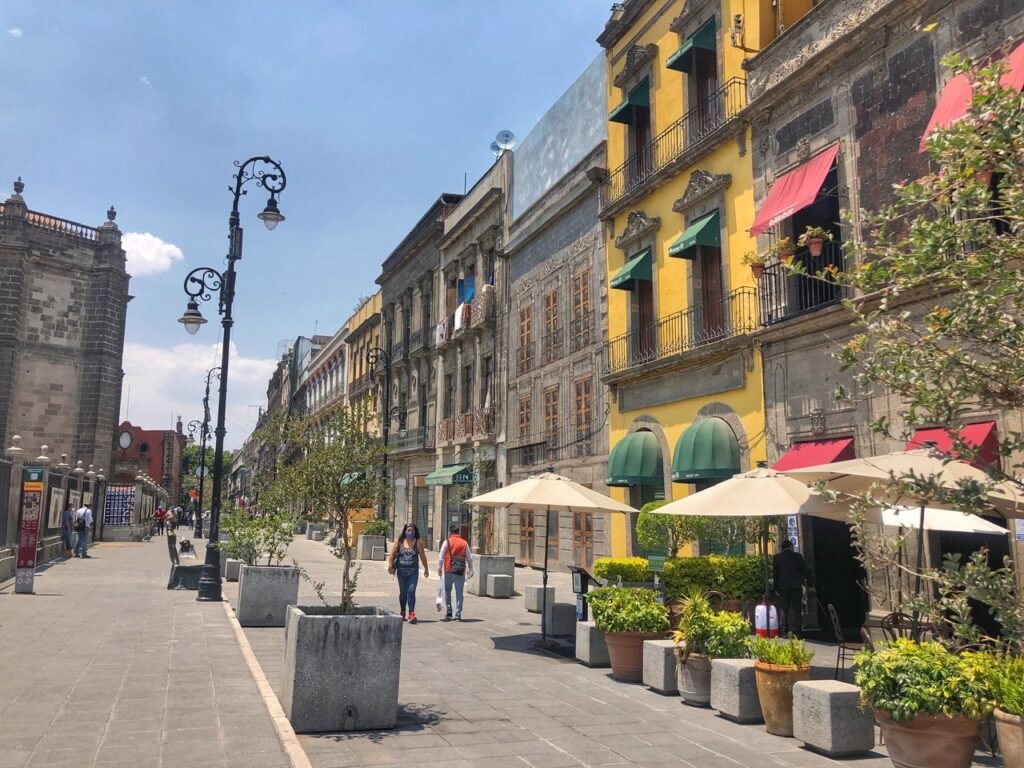
A street that caught our eye near the Zocalo.


Another beautiful church in the center, and a colorful building that caught our eye.
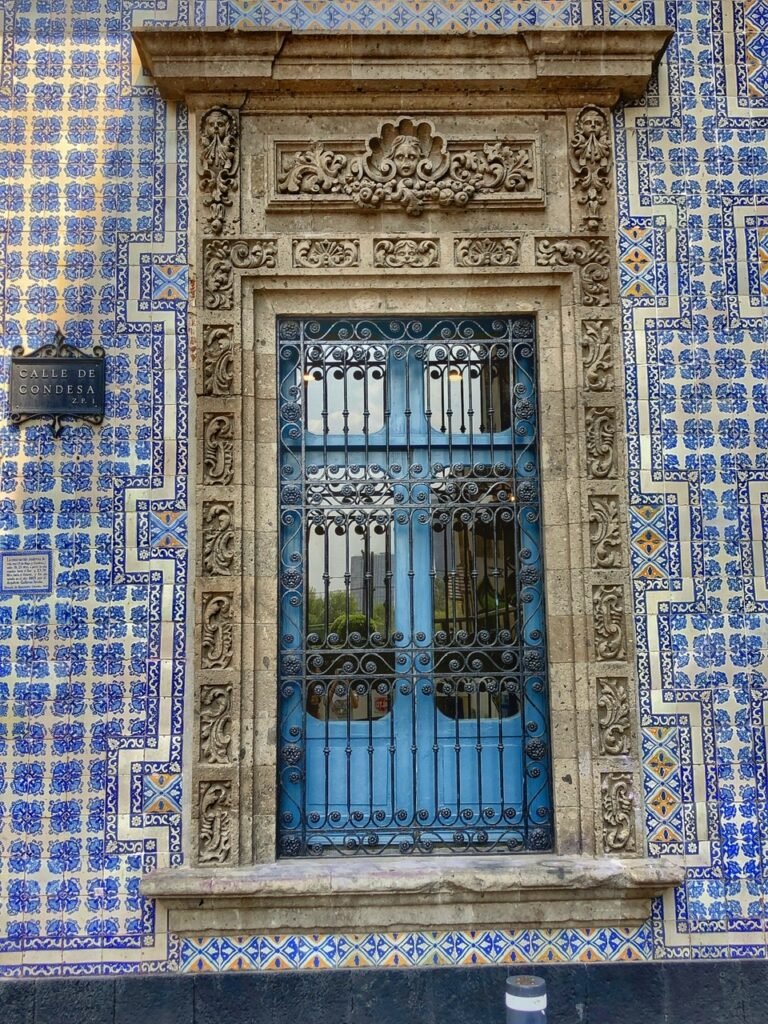
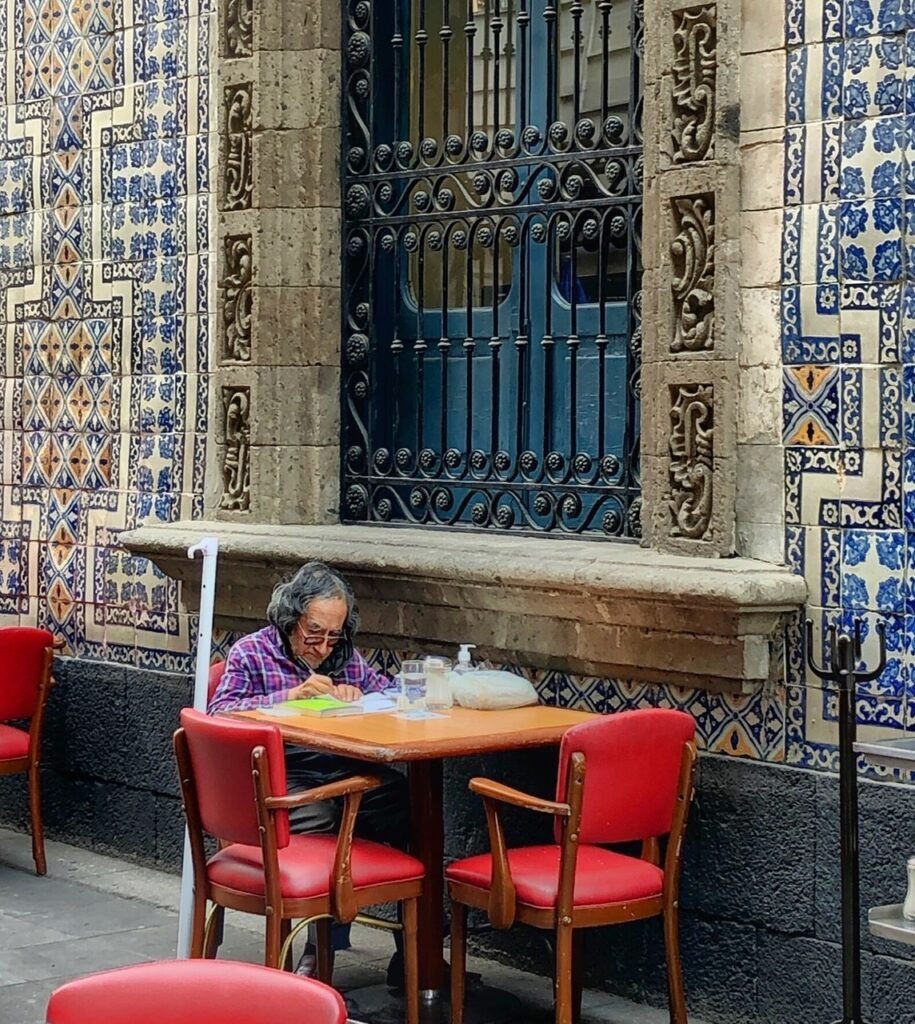
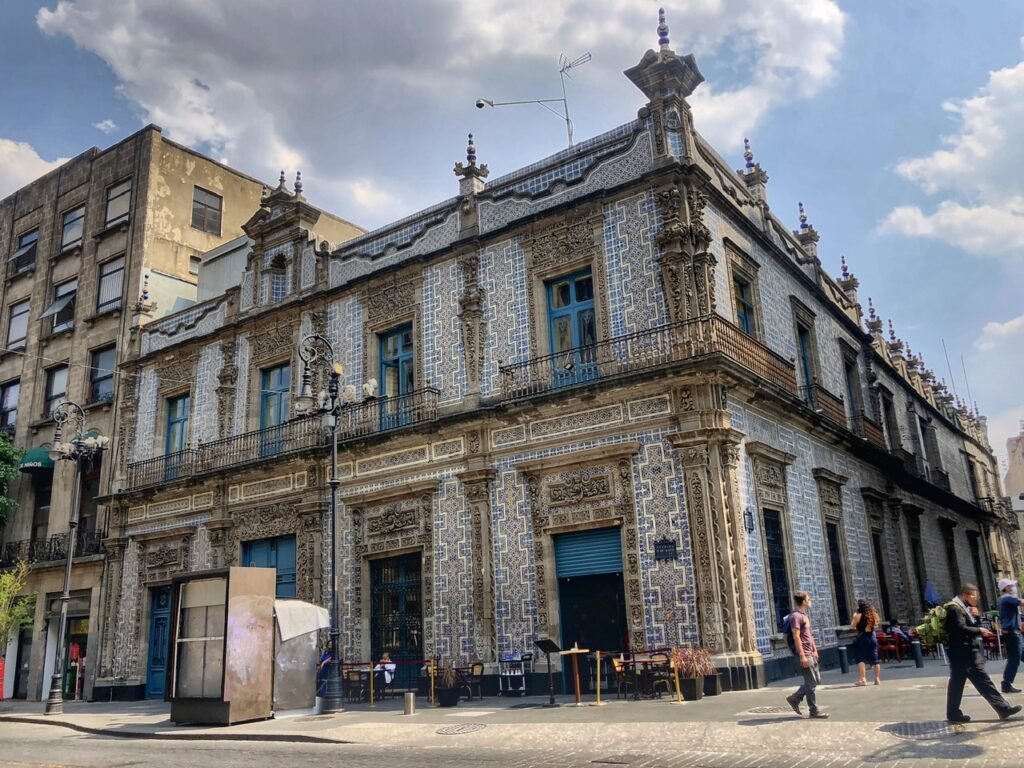
One of our favorite sites… The stunning Casa de los Azulejos or “House of Tiles” which is an 18th-century baroque palace built by the Count of the Valle de Orizaba family. It is now home to a popular restaurant. This man sitting there working was so adorable.
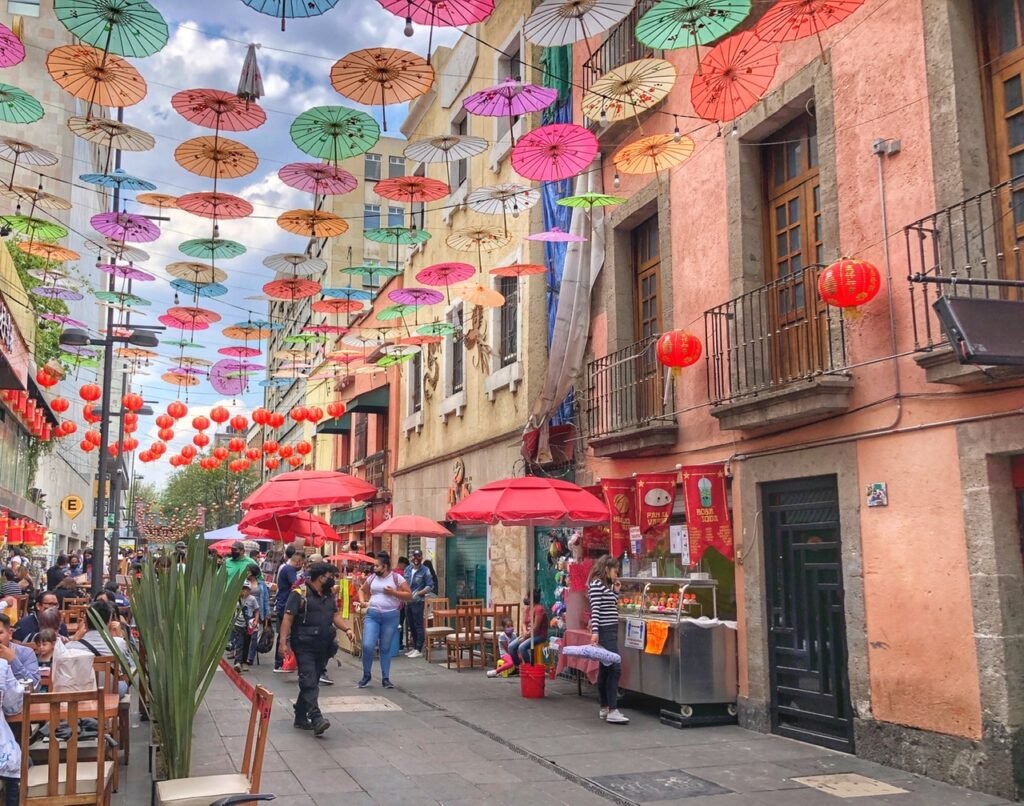
Our other favorite thing about the historic center was surprisingly the pedestrian-friendly Barrio Chino, aka Chinatown. It was small, but it was one of the most active and colorful ones we have seen, plus we got a nice dose of Chinese food which we hadn’t had in at least six months! The barrio was built by the migrants who arrived in Mexico during the second decade of the twentieth century. They were fleeing the Chinese prosecutions unleashed in Sonora and Sinaloa (other Mexican states) after being accused of spreading disease and living in unsanitary conditions.
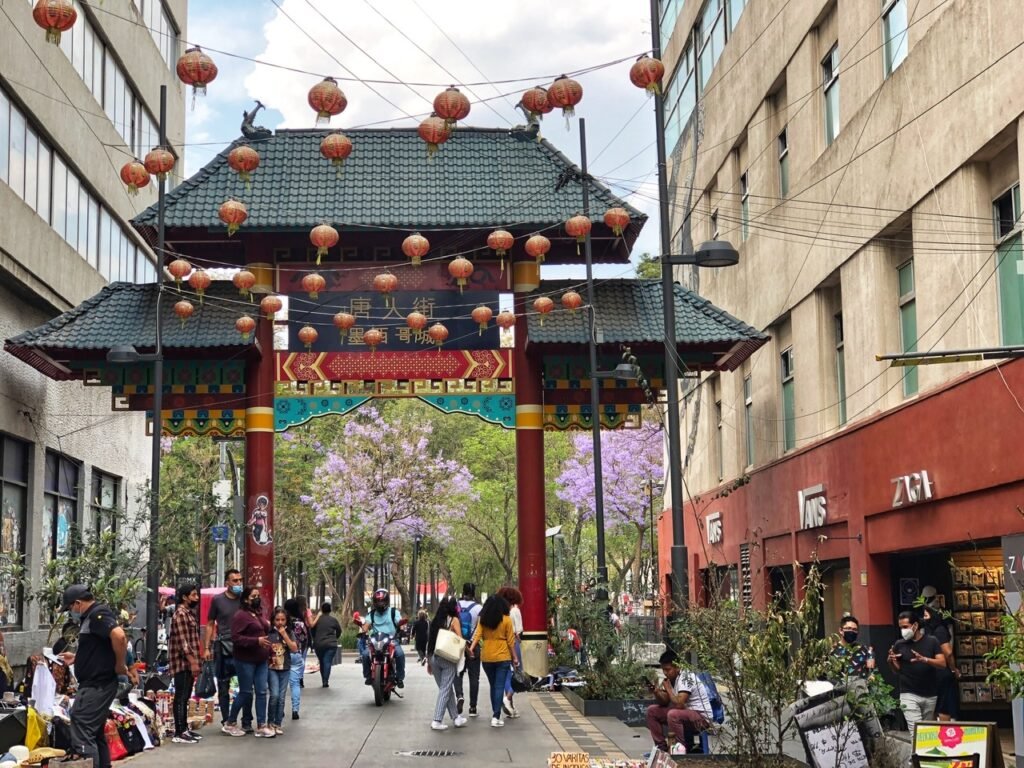
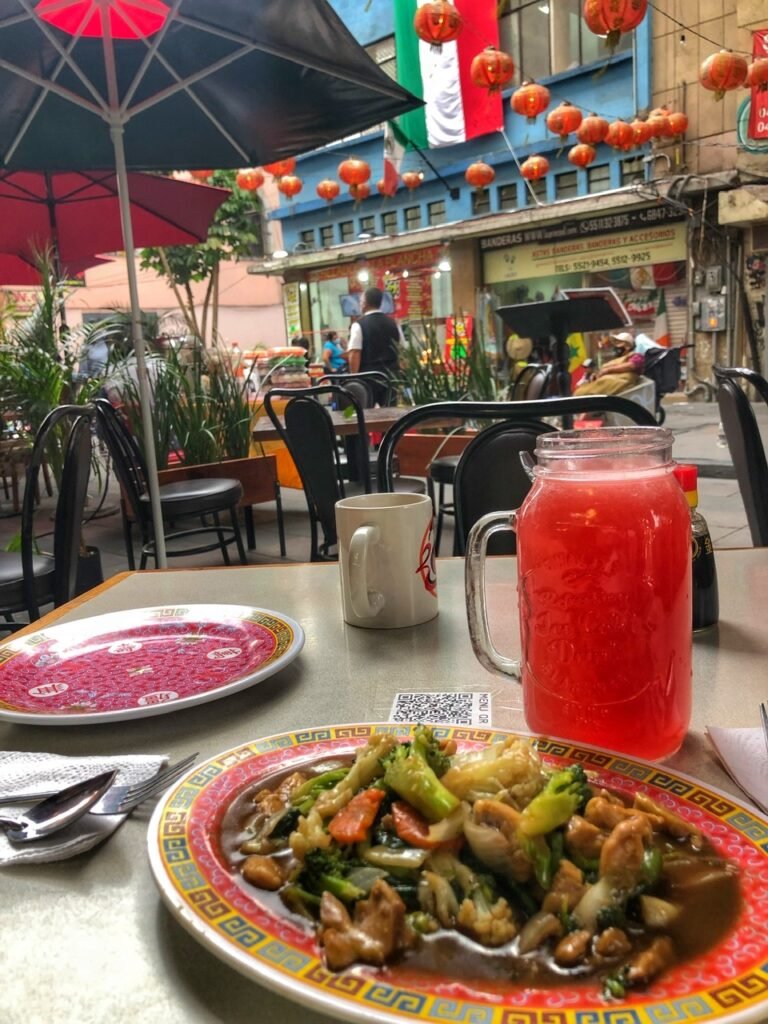
Walking through the gate of Barrio Chino…and suddenly being transported back to Asia!! We plopped down for some watermelon juice and Chinese food at Chung King. It tasted amazing to us after all the Mexican.
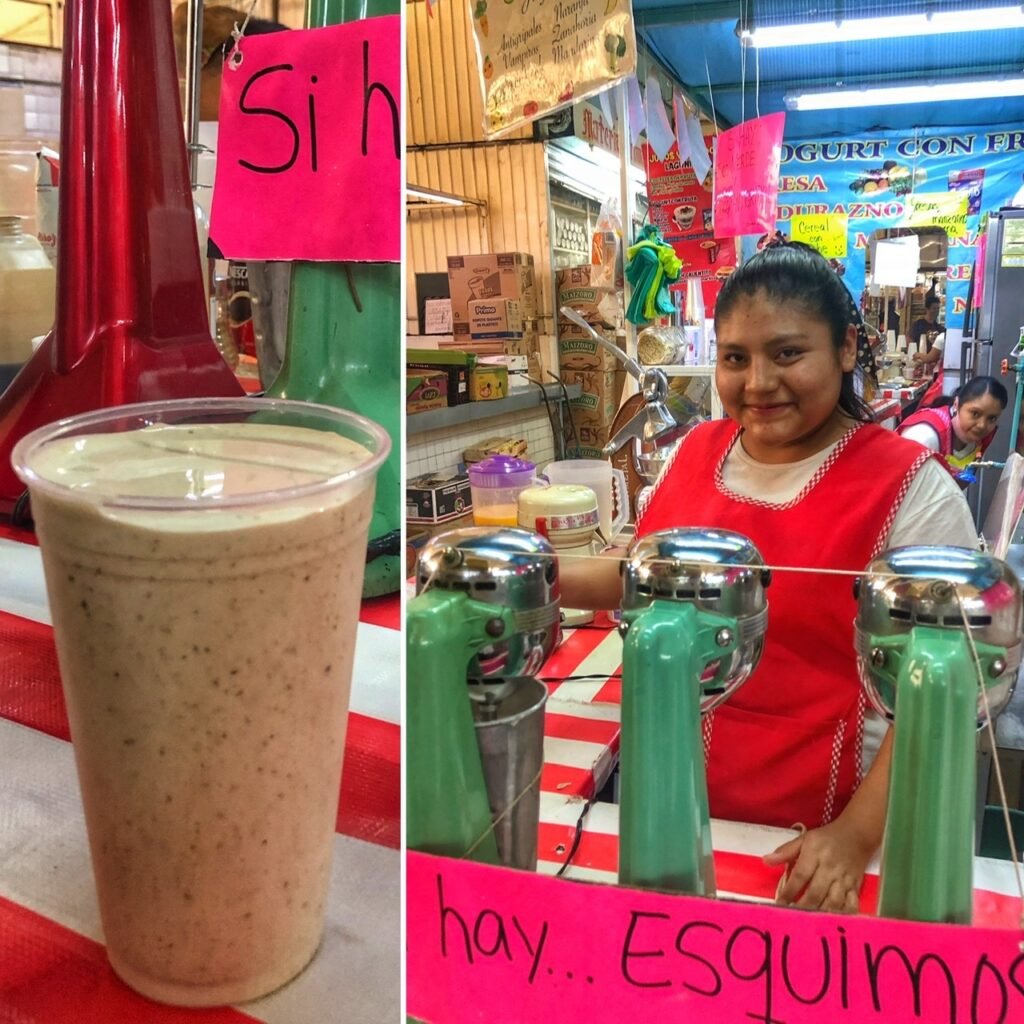
Pausing in Lagunilla Mercado for a Nescafé Mocha flavored esquimo. Esquimos are our new favorite treat made with evaporated milk, sugar, ice, your flavoring of choice, and garnished with cinnamon. So….perhaps it’s the product of what might happen if a smoothie and a milkshake had a baby? Muy delicioso!!!
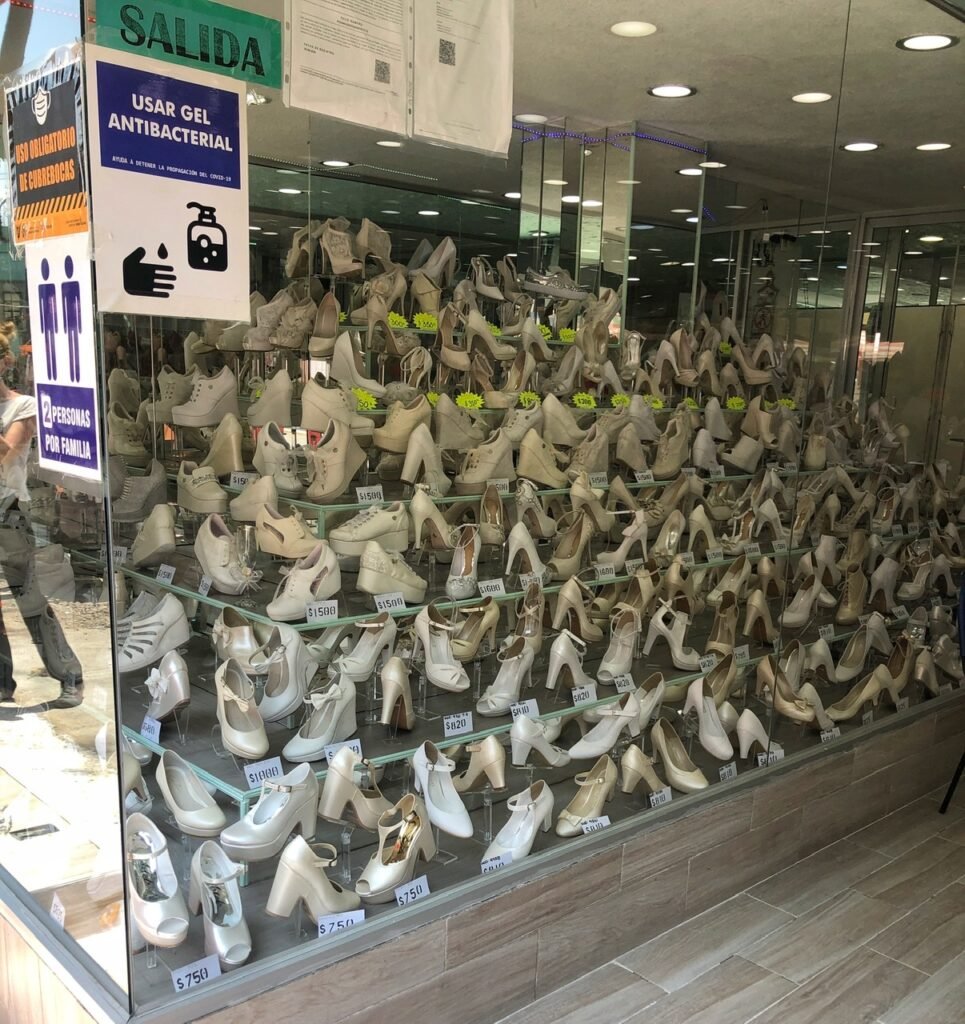
Wow! If you can’t find wedding shoes here, you might be SOL.
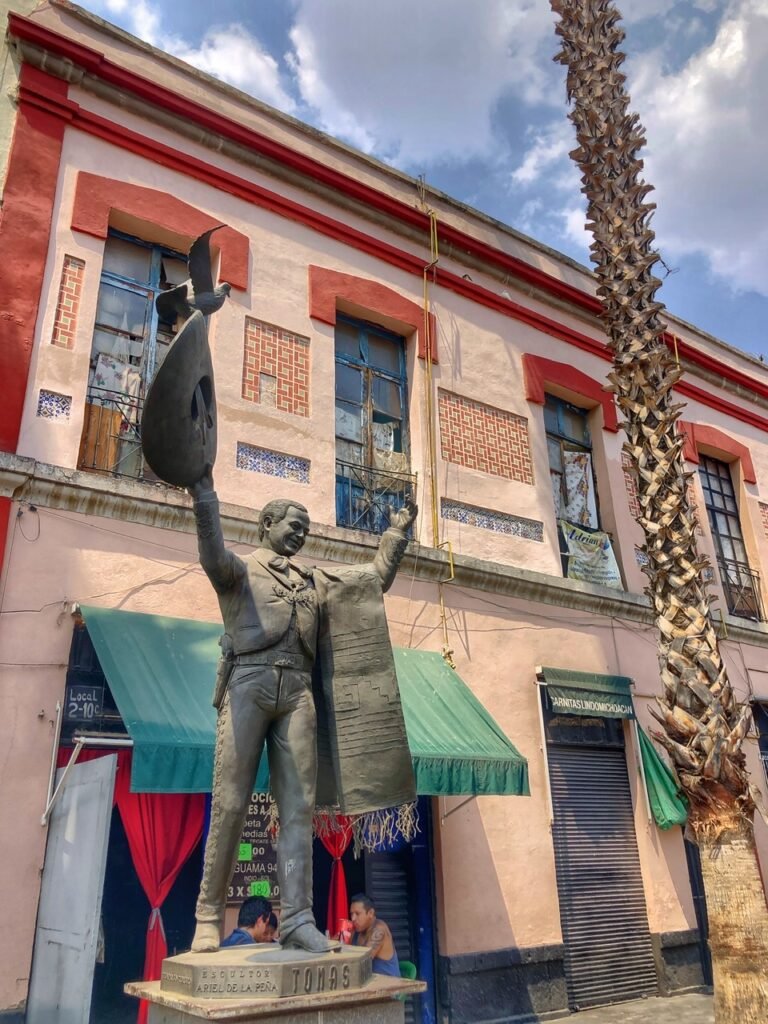
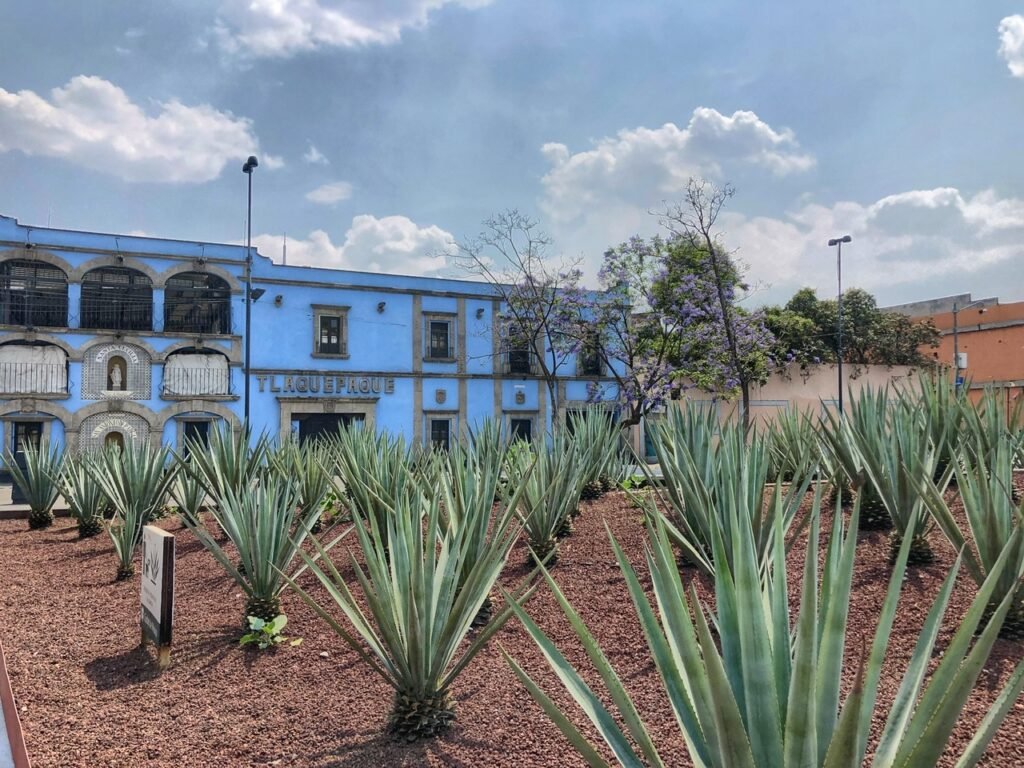
Sculptor Ariel de La Pena. We loved this artsy area near Garibaldi Square. We didn’t figure out why this building was named Tlaquepaque, which we only know from Guadalajara. But we loved the colors and the contrasting agave plants!
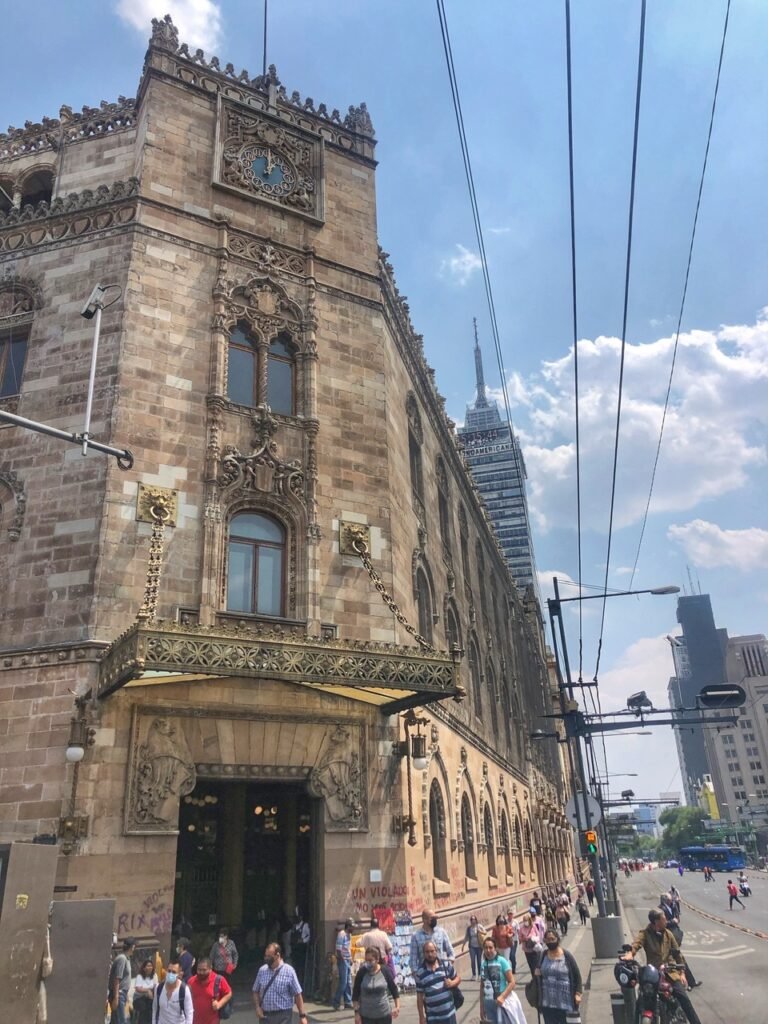
The Palacio Postal, national post office of Mexico was built in 1907, when the post office became a separate government entity. We heard that the inside is also just gorgeous, but it was packed so we opted not to enter.
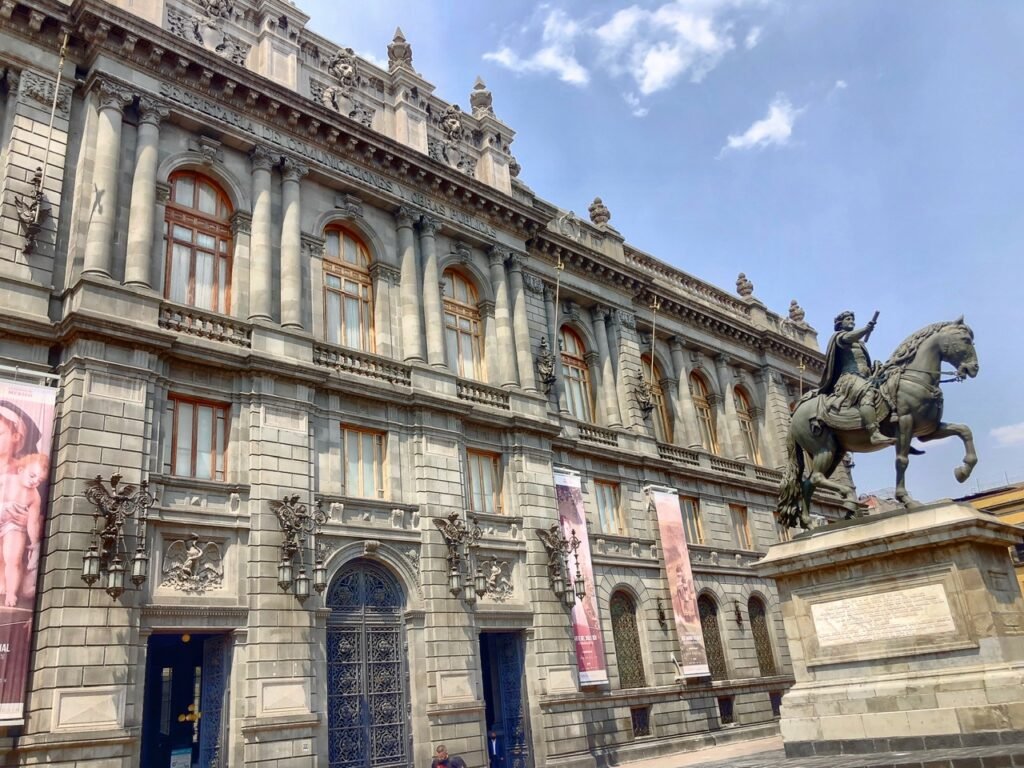
The National Museum of Art looks like it fell out of Europe.
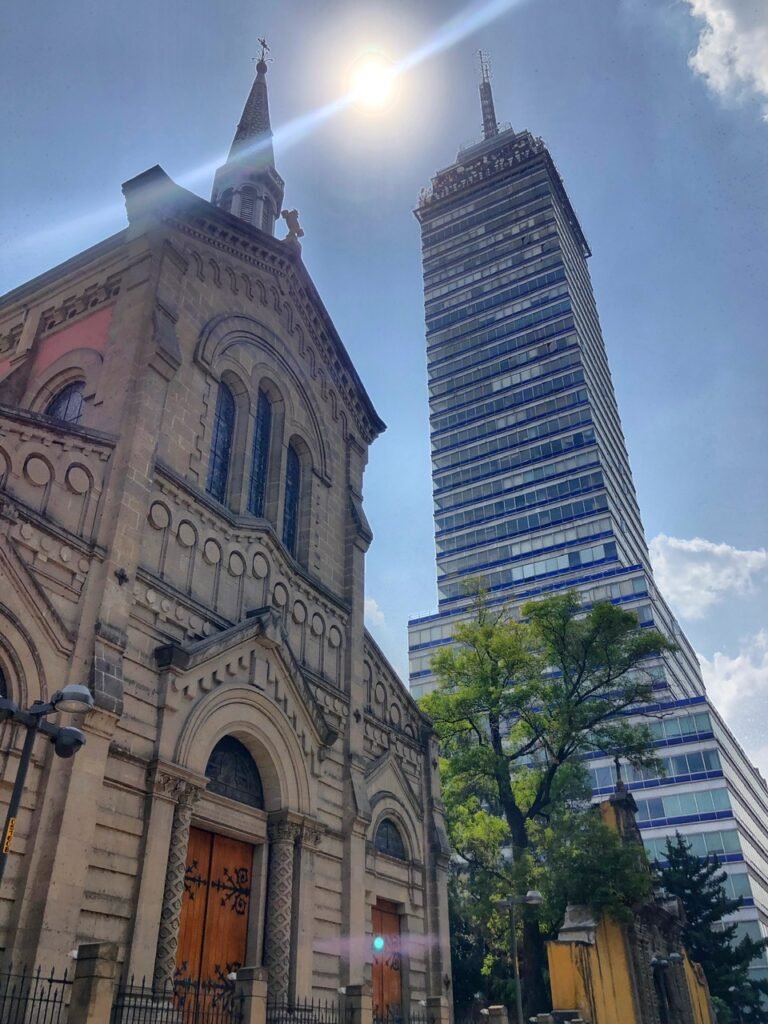
What a contrast. The less-than-appealing 70’s Telcel Tower (a wannabe Empire State Building? ) ironically stands like a new empire next to the the Spanish era Templo de San Francisco.
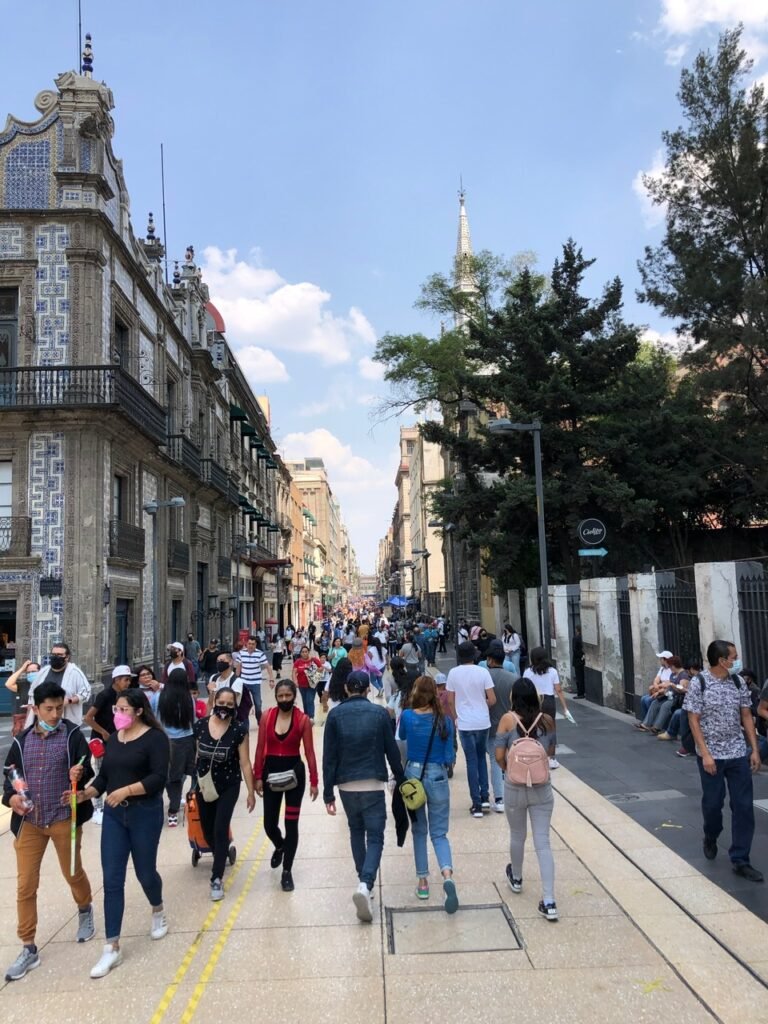
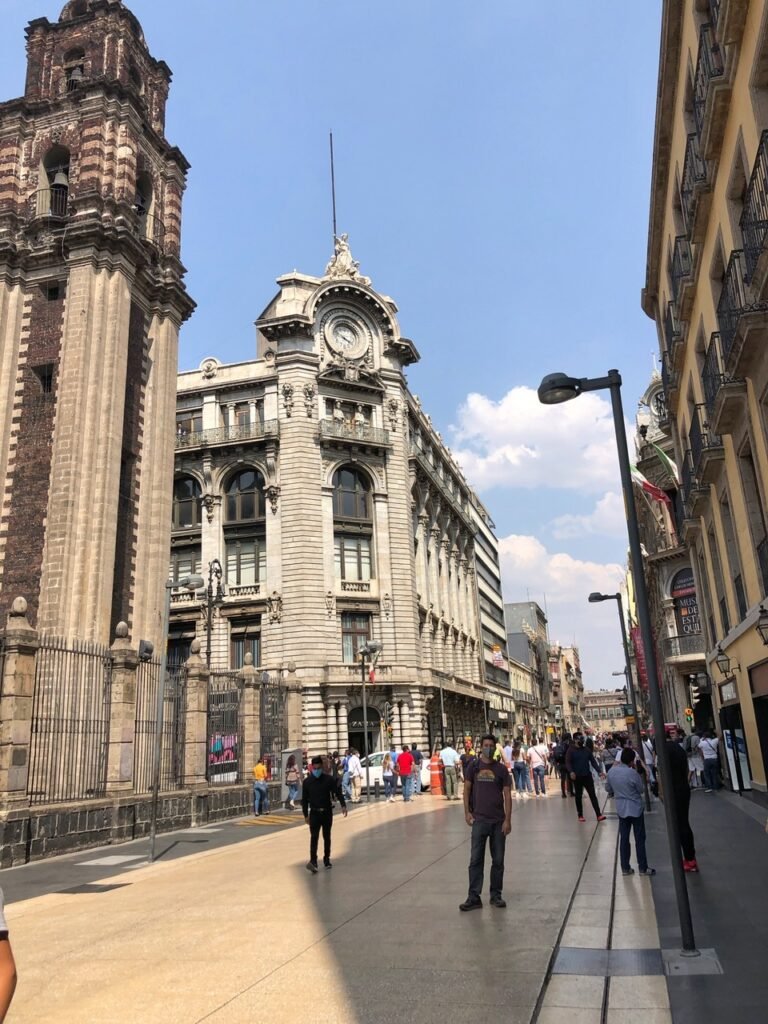
This pedestrian-friendly street, Corredor Turistico Francisco I. Madero, should not be missed on a visit to Mexico City. Greg noted it felt much more reminiscent of being in Madrid or another major city in Spain.

This guy is muy feliz. As of March 10, Mexico was set to legalize industrial, medicinal and recreational marijuana and will most likely become the world’s biggest market. The measure would allow adults to smoke marijuana and, with a permit, grow a small number of cannabis plants at home. It would also grant licenses for producers — from small farmers to commercial growers — to cultivate and sell the crop. (NYT)
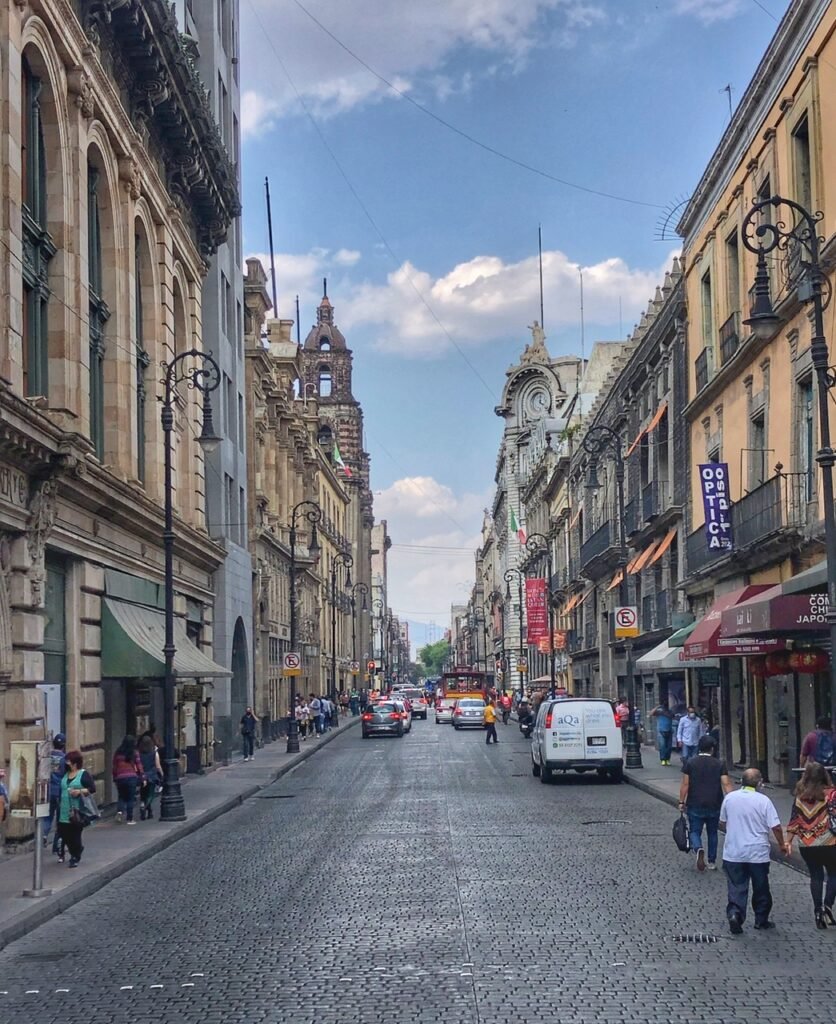
Yeah, this definitely doesn’t feel like Mexico! For us, this was actually a common theme throughout our entire time in Mexico City. Although it’s beautiful, especially if you’ve never been to Europe, and packed with amazing things to do, it lacks the character, culture and friendlier people that smaller pueblos offer. But this could be just because we’re not really “big city” people.

A bit more like it. A roadside vendor sells clothing.
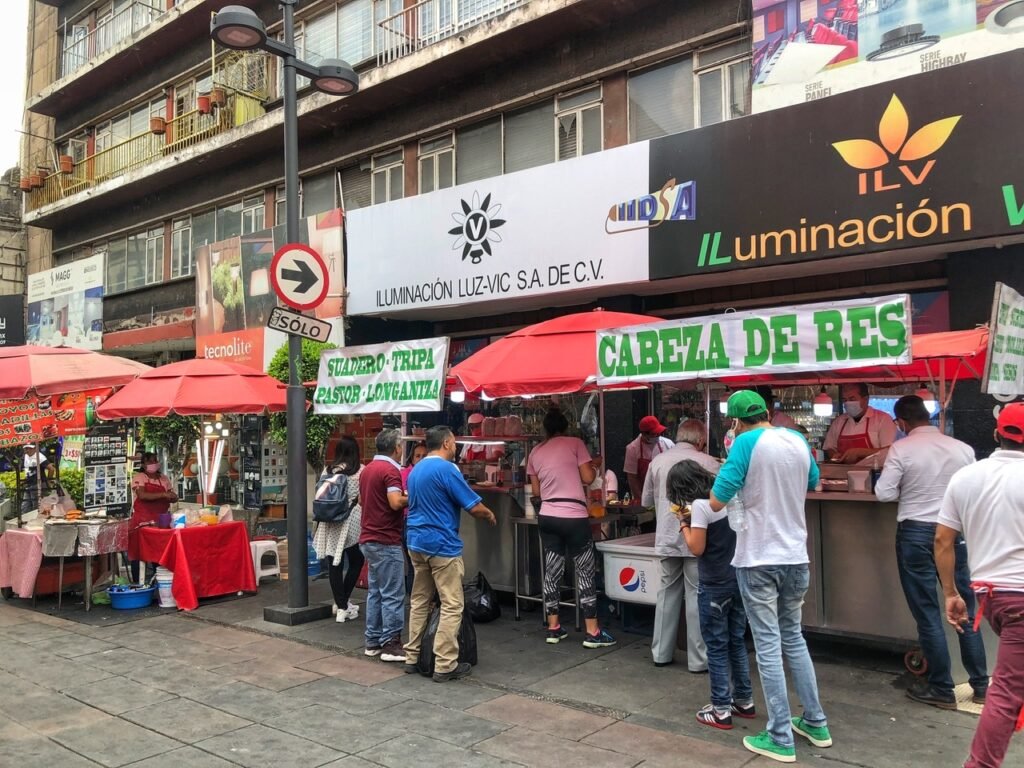
Oh, but you sure can eat anything you want here!! Including tacos stuffed with cow’s head. No gracias!
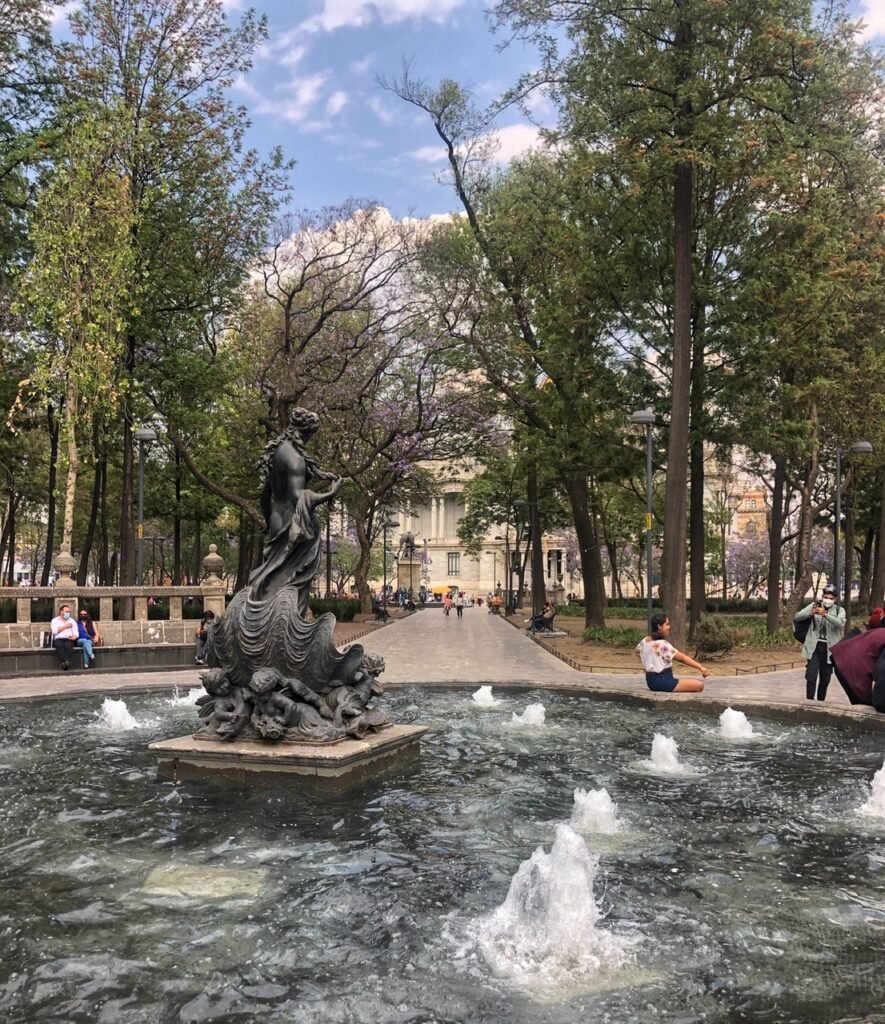
Walking off the Kung Pao (or something like it) in Alameda Central, Mexico City’s oldest municipal park. We are just keen on the parks in this city.
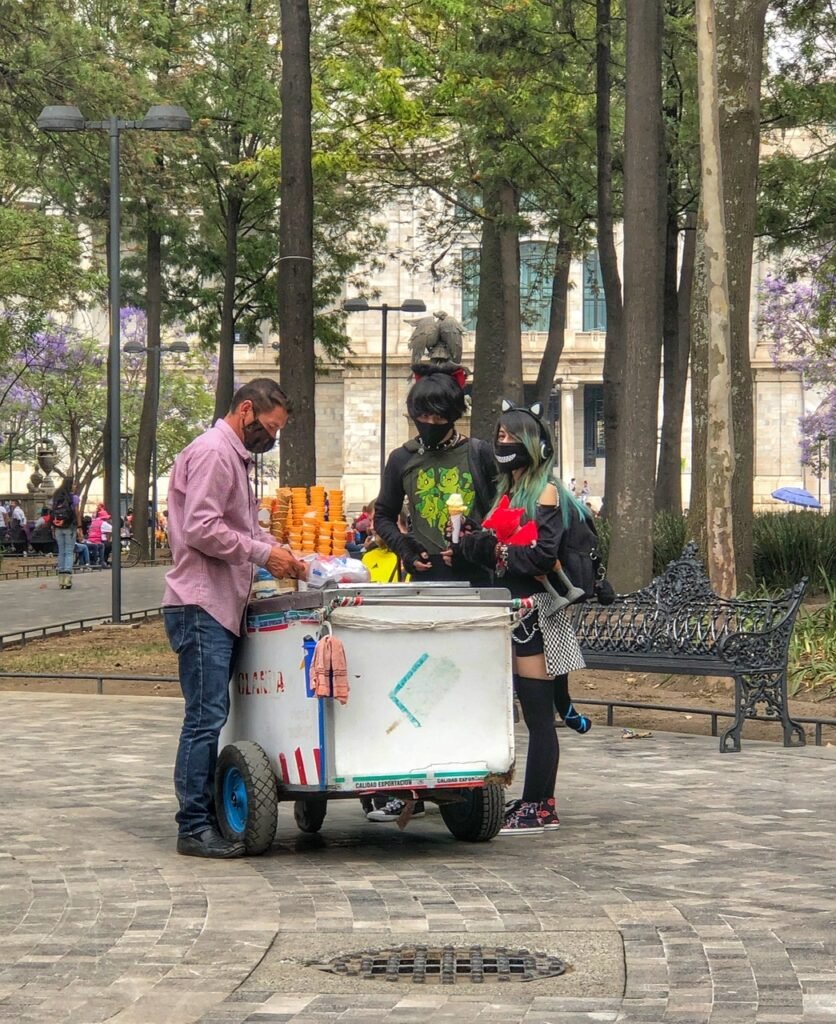
A couple of street cats buy some ice cream. Speaking of street animals, another amazing thing we noticed about this city, there were very few street dogs or cats, which is an ongoing issue in a lot of other Mexican cities. Many Americans have actually been coming to Mexico to adopt. What a great idea!
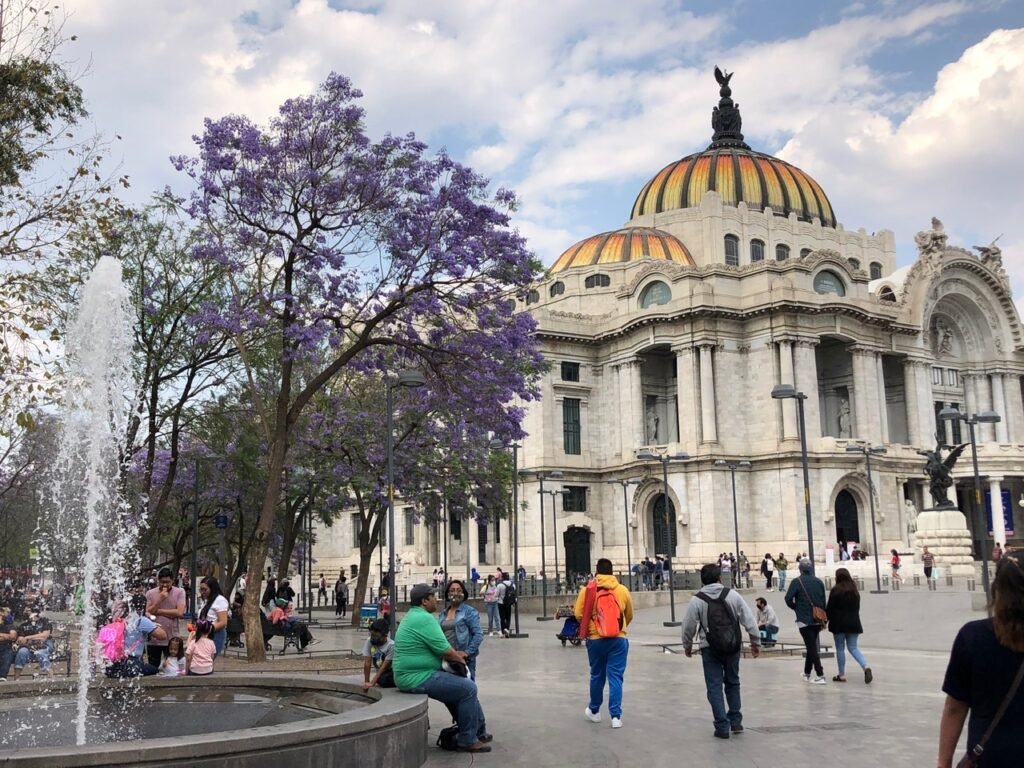
The Palacio de Bellas Artes is a stunning marble performance hall and museum with murals by Diego Rivera (Frida’s husband.) Of course, it is currently closed for COViD.
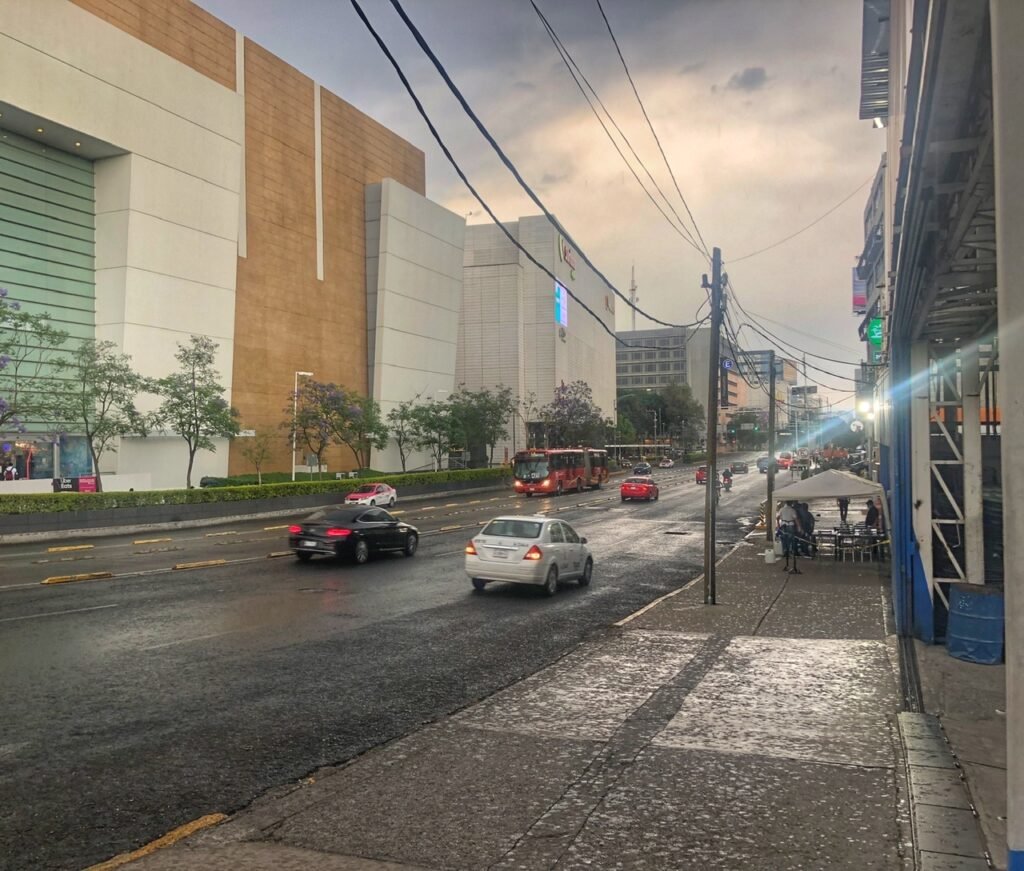
On our way back, we experienced our very first rain since we arrived in early December! It was extremely amusing to watch all the sun-kissed locals start freaking out. Grown men were bolting down the street with newspapers on their heads and clutching their phones to their chests like babies.
Benito Juarez
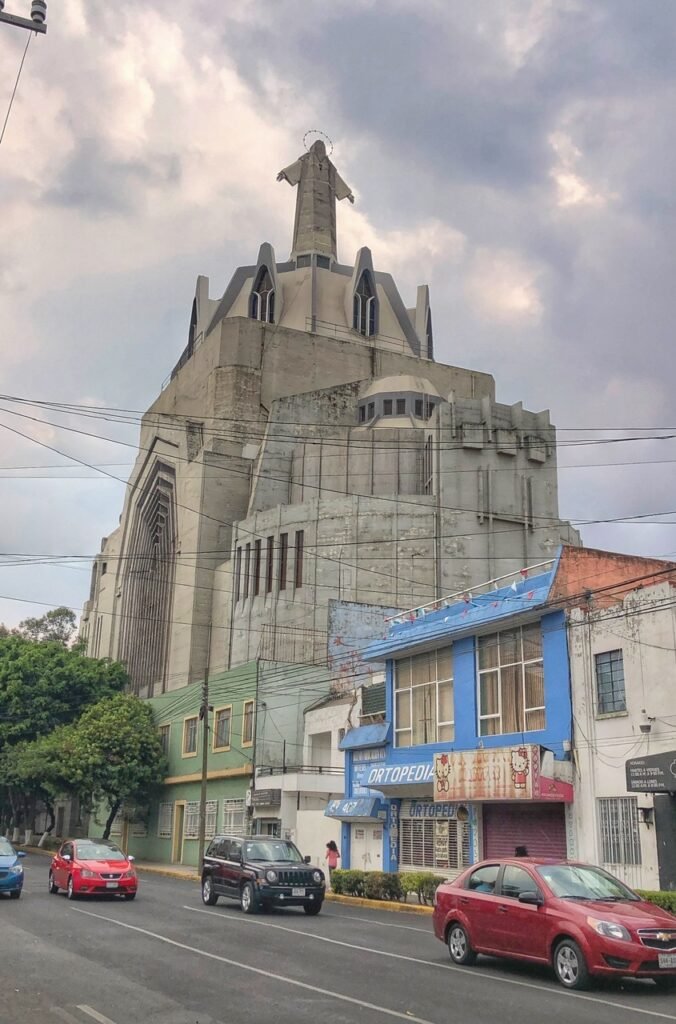
Back in the Benito Juarez neighborhood, where we stayed for a week, we randomly passed by the Parroquia del Purísimo Corazón de María, which is probably one of the most hulking and imposing churches we’ve ever seen. We couldn’t get over the volume of concrete that constructed it.
Later, we saw pictures of the interior and it was polar opposite…just gorgeous. So gorgeous that it was evidently used in the filming of the 1995 “Romeo and Juliet” where Leonardo DiCaprio confesses to the friar his love for Juliet.
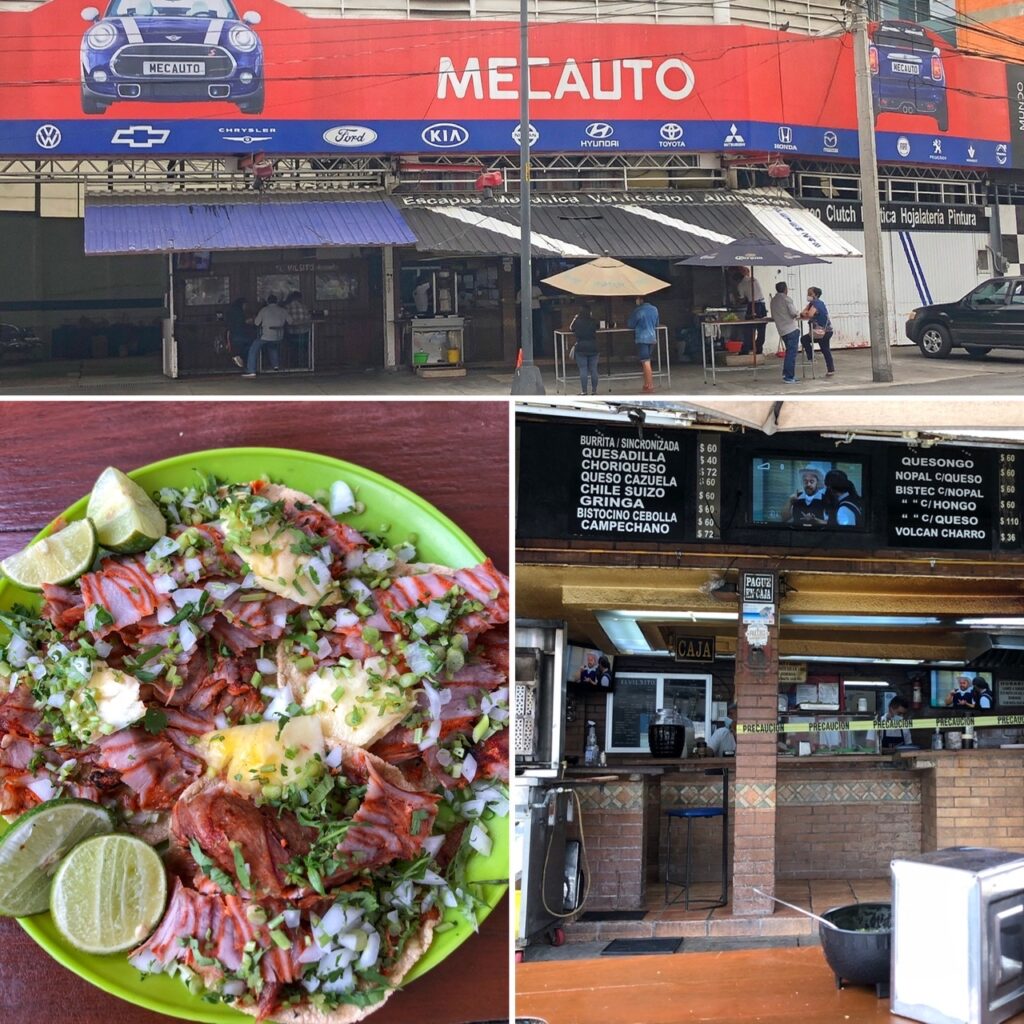
You would certainly never know it by the looks of it, but this mechanic by day and taco joint by night called El Vilsito, serves the “best” al pastor tacos in Mexico, according to the Netflix TV Show, “The Taco Chronicles.” Greg watches this show for Spanish practice and confirmed, they’re the best al pastor tacos he’s ever had. He kept gushing “look at the marbling!!”
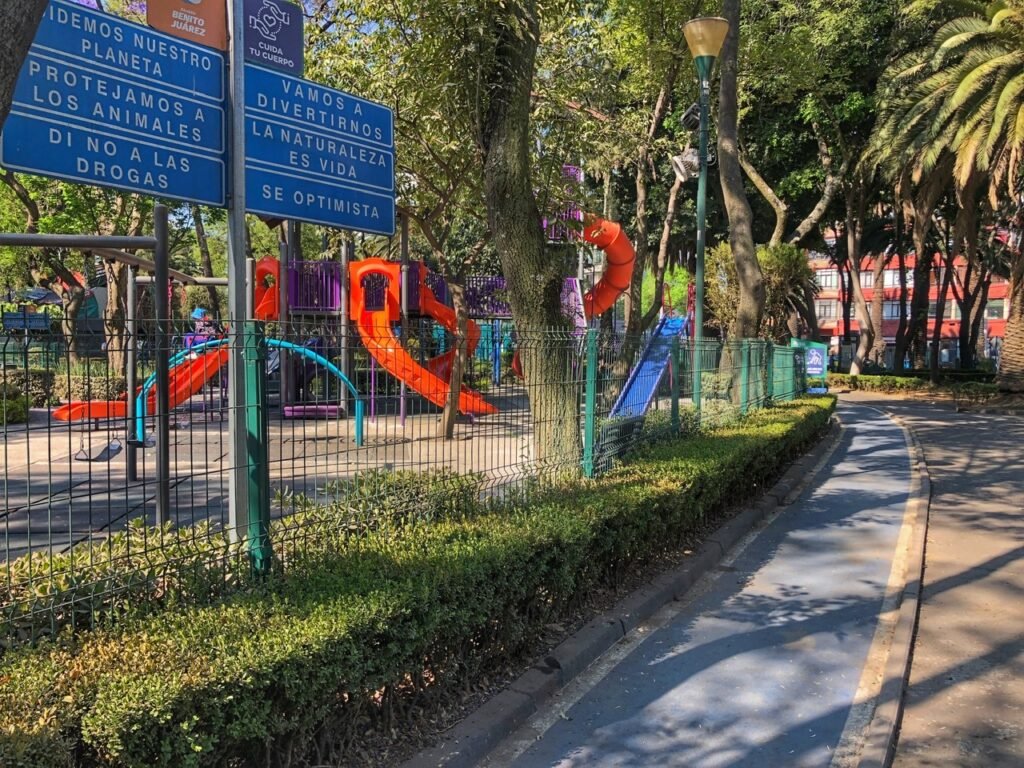
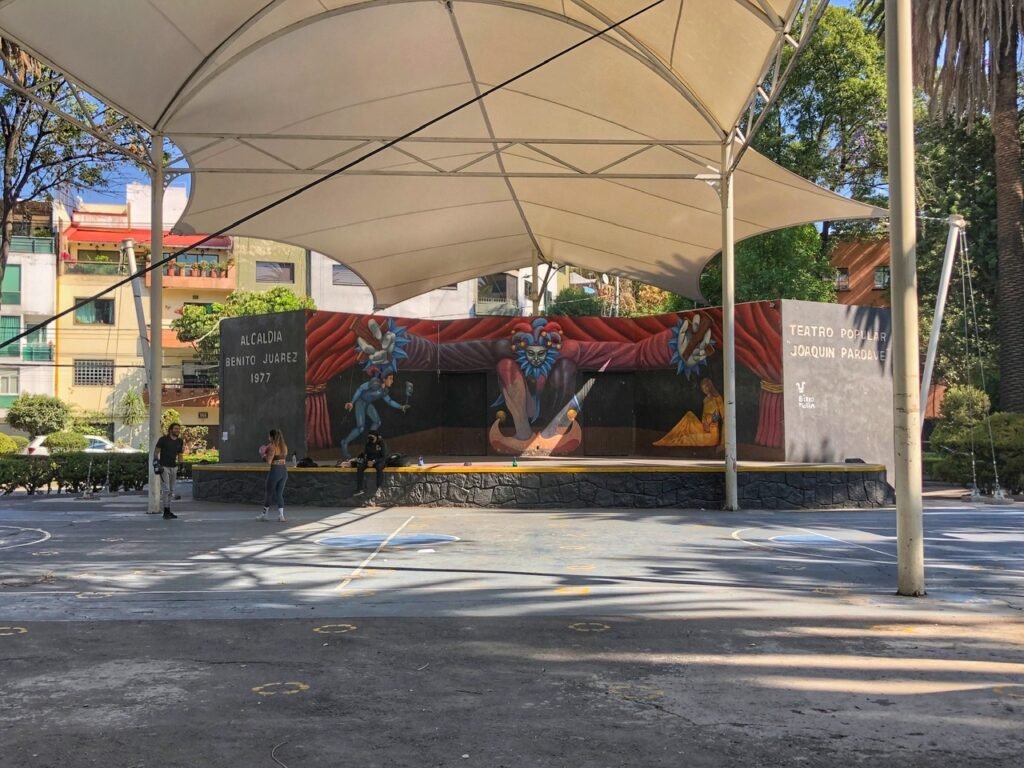
We are so happy to see how much the Chilangos (as people are known from Mexico City) exercise, as it’s not quite the case throughout the rest of the country. This park even had a padded running truck that weaved its way through the trees. And we saw Zumba in the park being held on this stage!
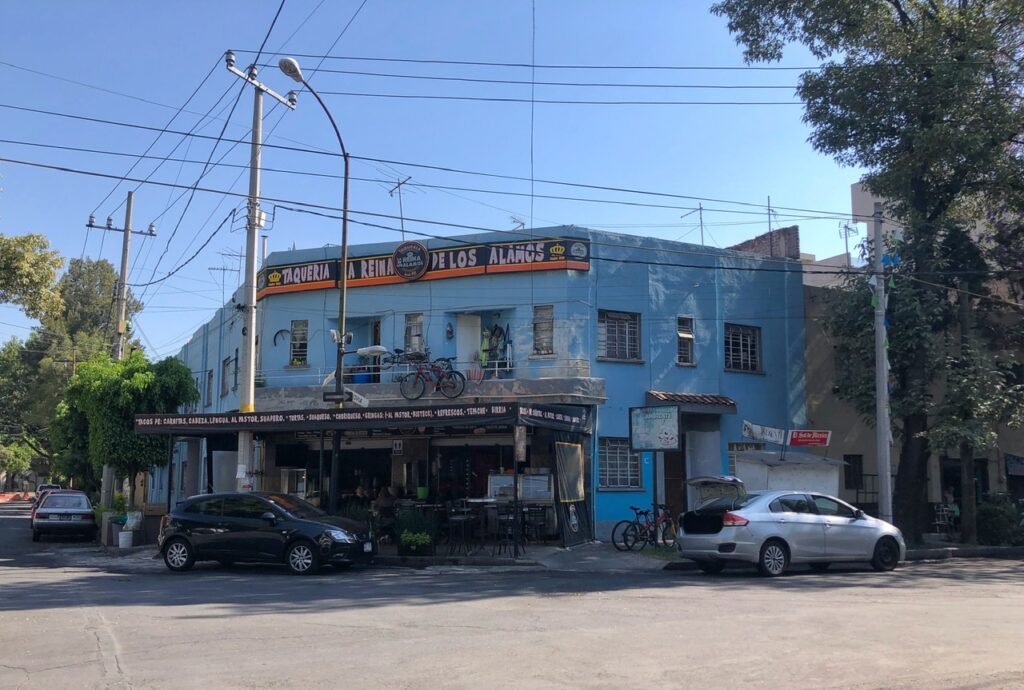
Just a taqueria we thought was cute.
Polanco
Somehow, thanks to a wonderful housesit watching a wonderful pup, we landed in the unlikeliest neighborhood (for us) in Mexico City…Polanco. Colonia Polanco is to the DF as Manhattan is to New York City and is pretty much everything that we’re not… hoity toity, luxurious, and sleek. Not surprisingly, it’s also the safest place in the city.We felt a bit like peasants walking the dog in our leggings/t-shirts and struggled to find a restaurant to match our budget (which gave us an ideal reason to cook in our stocked kitchen). Despite that, it was a fantastic excuse to try on a different lifestyle and something we wouldn’t have done otherwise.
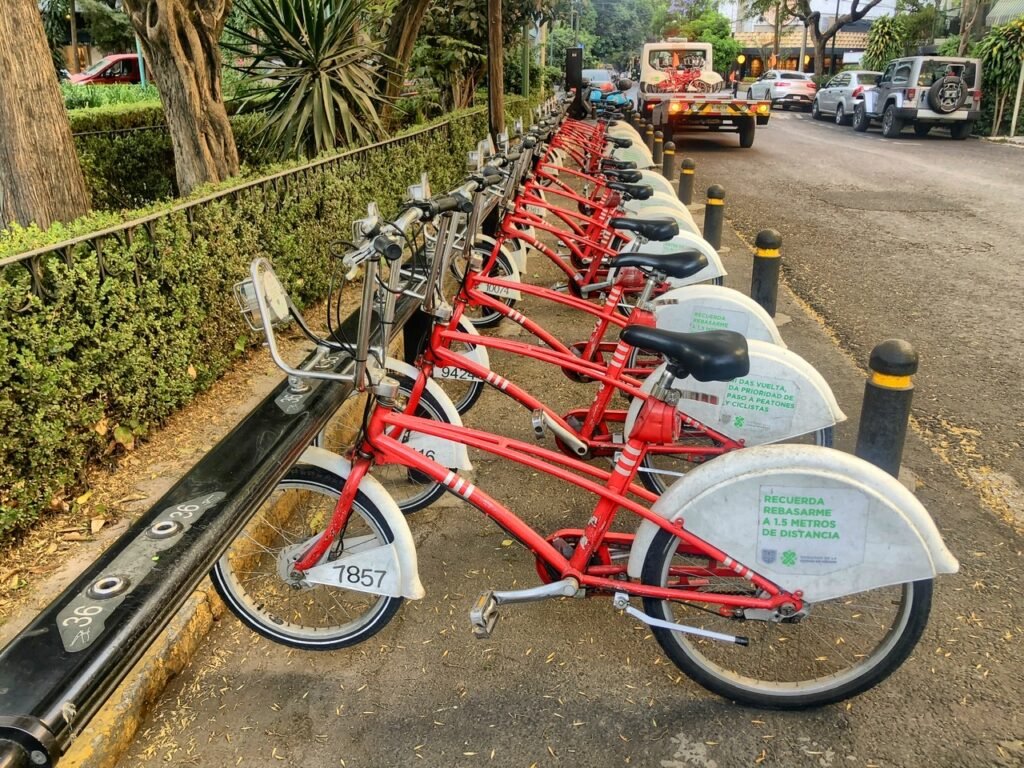
We are happy to see Mexico City is a very bike friendly city. One of its citywide bike sharing programs is called Eco-bici, and we love their little red and white retro two-wheelers. It costs $99 pesos ($5) for 24 hours.

We ate at restaurants twice in Polanco. One of those was well worth the splurge at Casahabana, a charming Cuban restaurant with phenomenal authentic dishes made by the Cubano owner. Cost with tip came to $370 pesos or $18, which was for two meals and no drinks. Definitely our most expensive meal in Mexico!
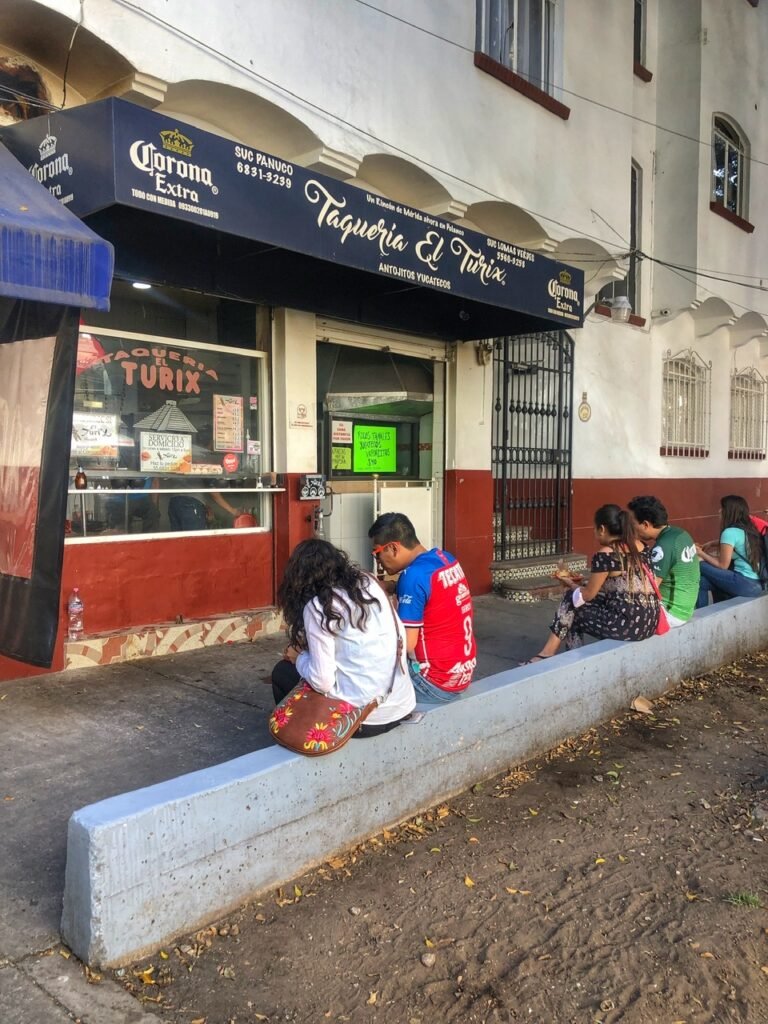
Fortunately, we later found some cheaper options. One of our favorites was Taqueria el Turix. The tacos, which were Yucatán cuisine, were delicious, but still an inflated $20 pesos ($1) each.
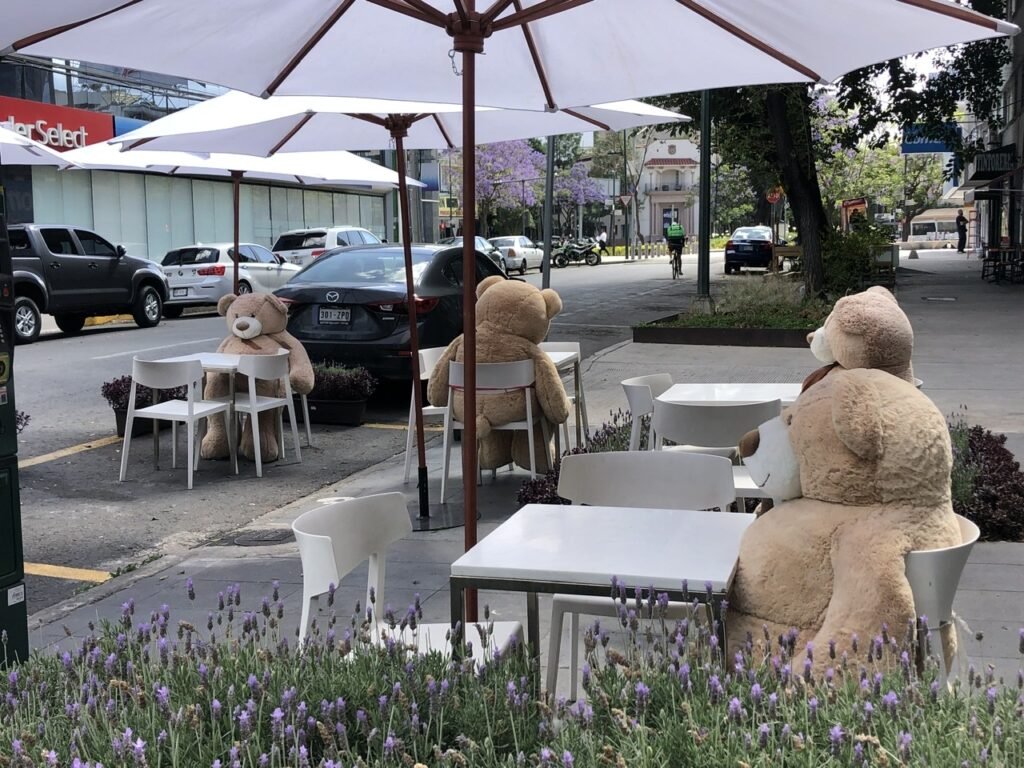
Wow, Mexico is dangerous. Waiting for service.
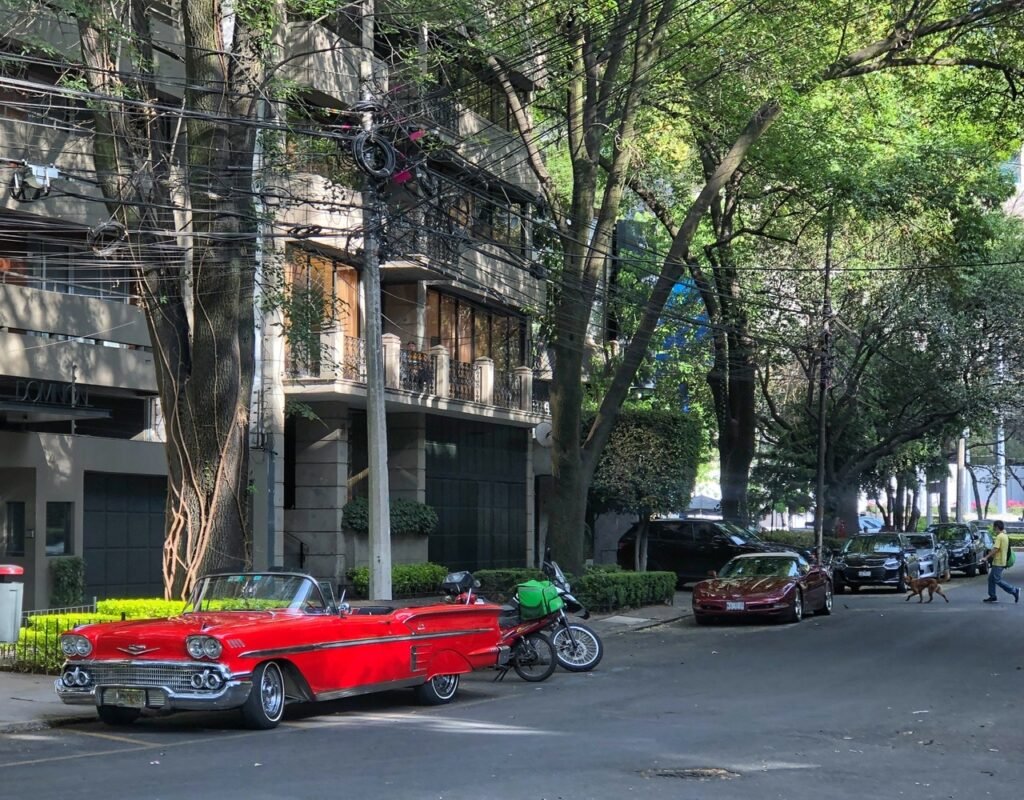
After traveling four months in Mexico, it was odd to be surrounded by Ameri-sized SUV’s, Tesla’s, BMW’s and Mercedes. And even the occasional classic car!
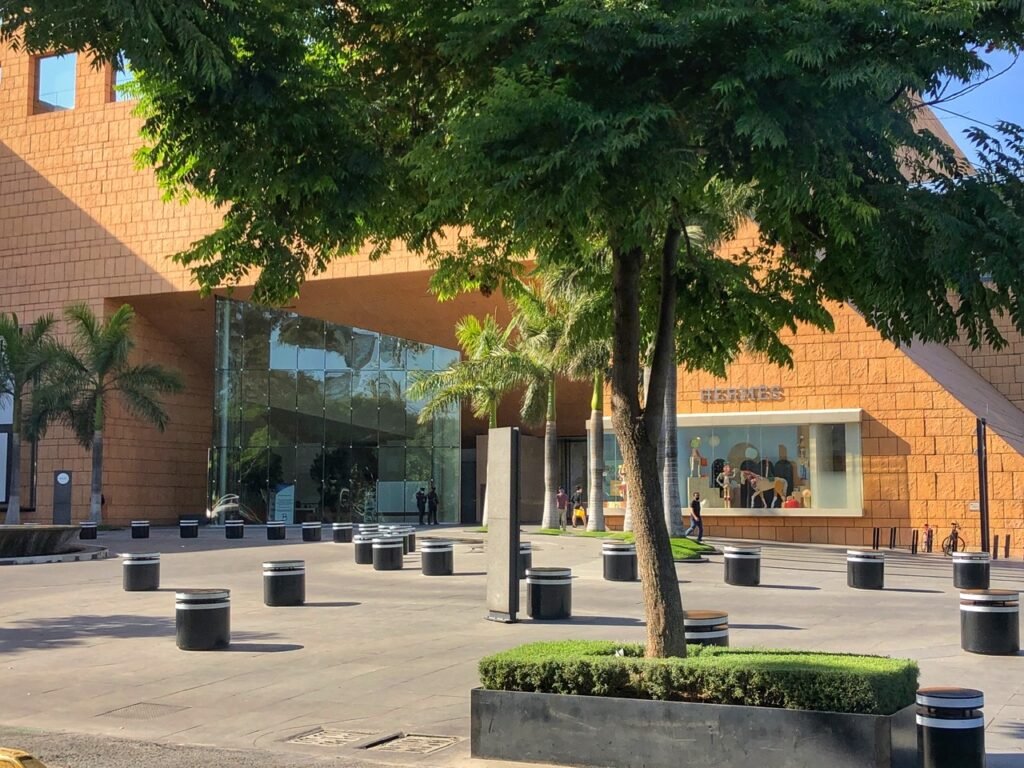
The malls were oozing with poshiness and spitting out stores like Hermès. Mandy chose not to wear her Hermès scarf as it did not match with her yoga pants.


So many beautiful Jacarandas saturating the green spaces…especially love walking over puddles of the petals.
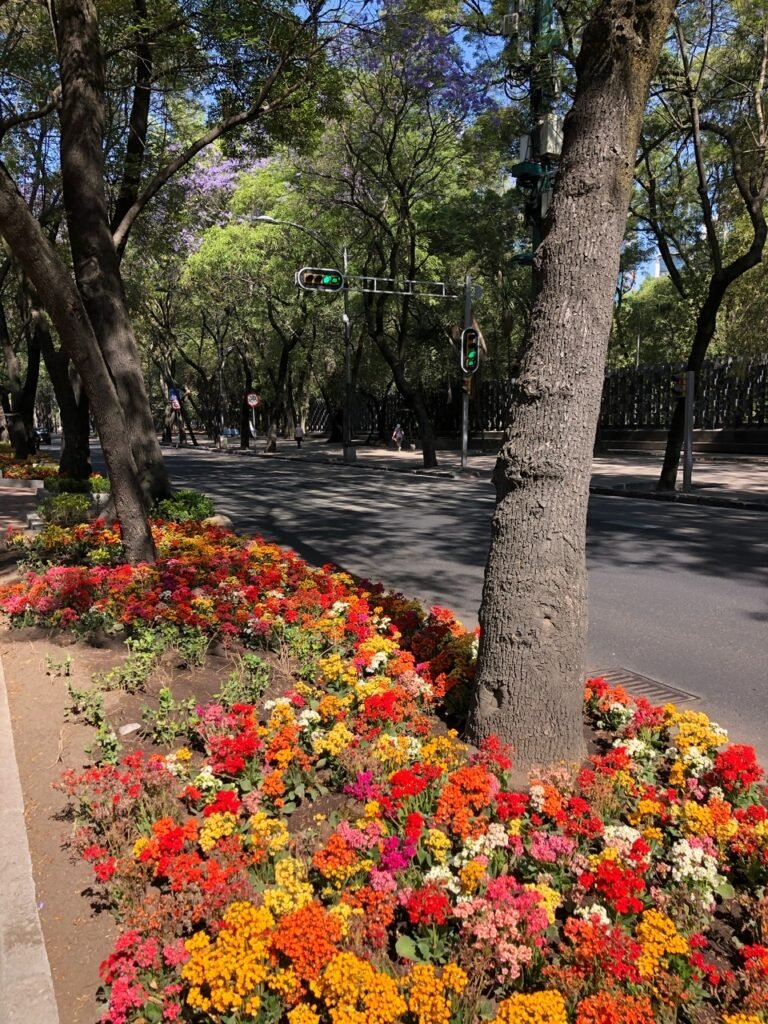
Beautiful flower beds and lush gardening throughout the neighborhood.
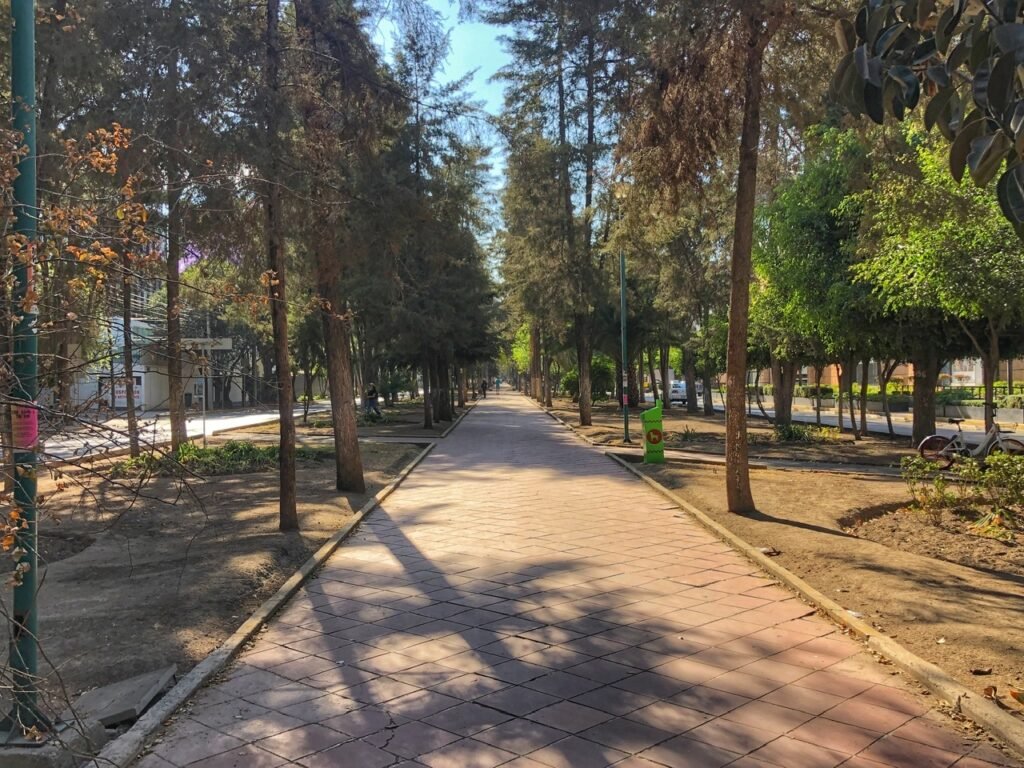
This path gliding down the center of the neighborhood was an ideal place to walk Bellota!
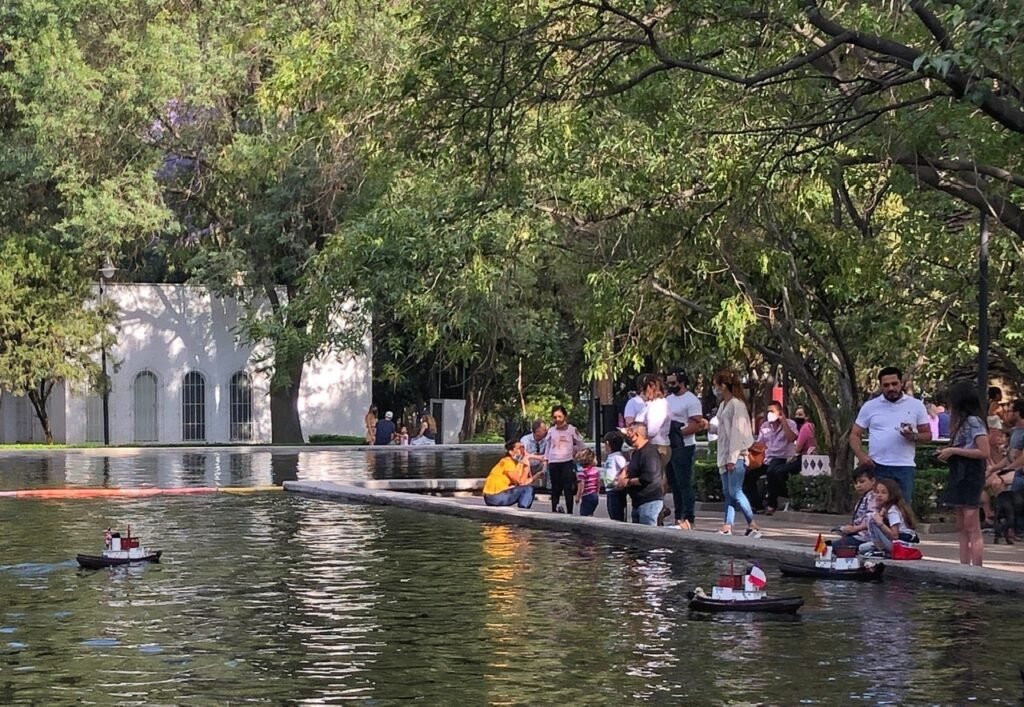
Lovely kid-friendly parks and ponds, even remote control boats for the kids like in Central Park.
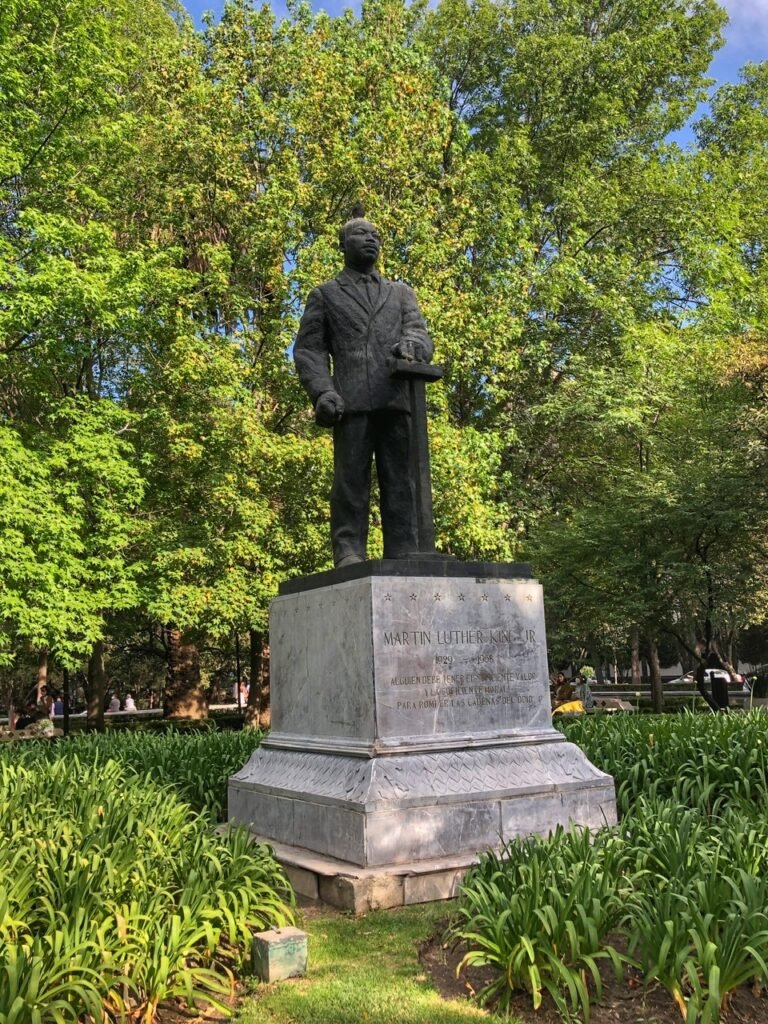
Surprisingly, we found this park is named Lincoln Park and has an Abraham Lincoln, as well as an MLK statue within. We have yet to understand why the government would invest (presumably?) public pesos into this semblance of Americana. We’ve certainly never seen Dolores Hidalgo or Frida Kahlo statues in parks across the border.
Condesa
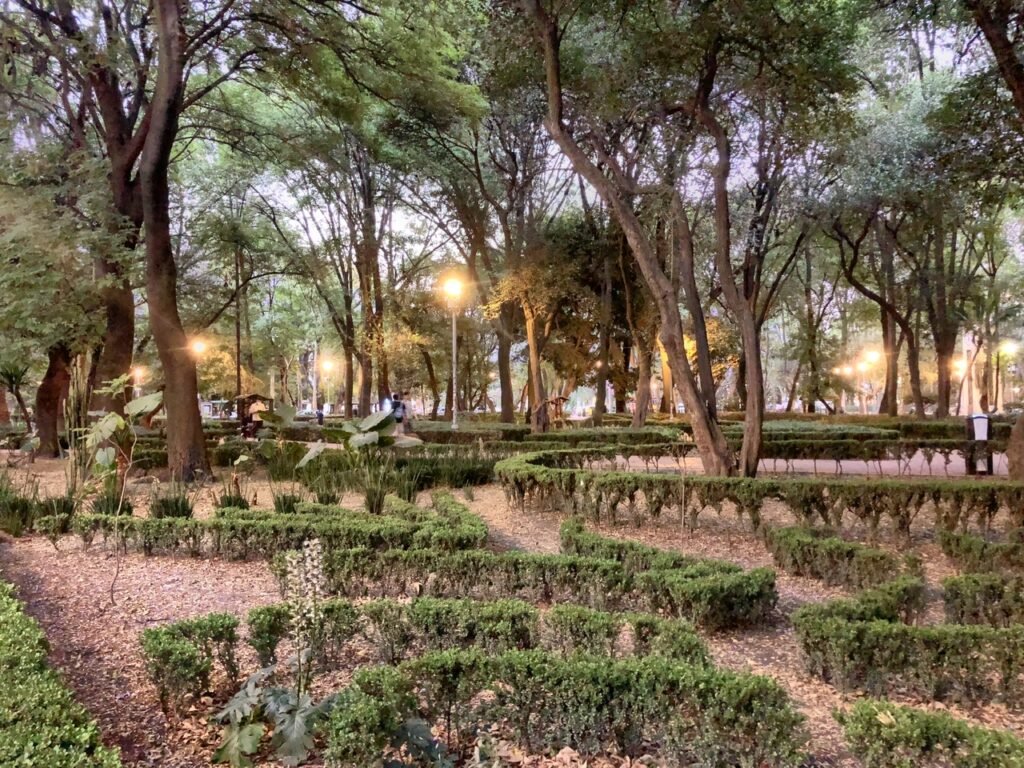
Moving into another nearby colonia of La Condesa. Like Polanco, it has stunning parks. This is in Parque Mexico, which is a 22-acre park known for walking paths, playgrounds and Art Deco architecture.
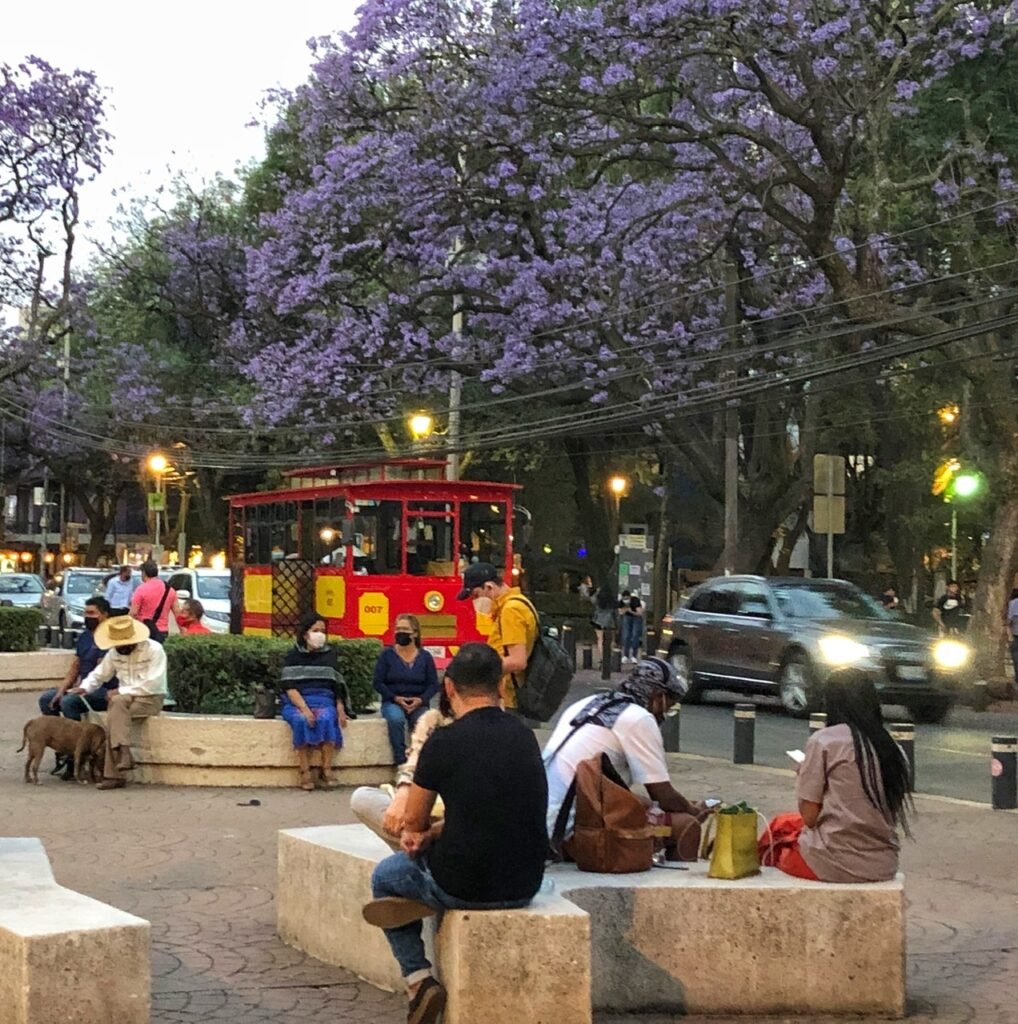

Street scenes in Condesa. Like Polanco, it’s still very posh, but a little more hip. Being from Portland, Oregon, we compared it to Nob Hill (NW 23rd.)
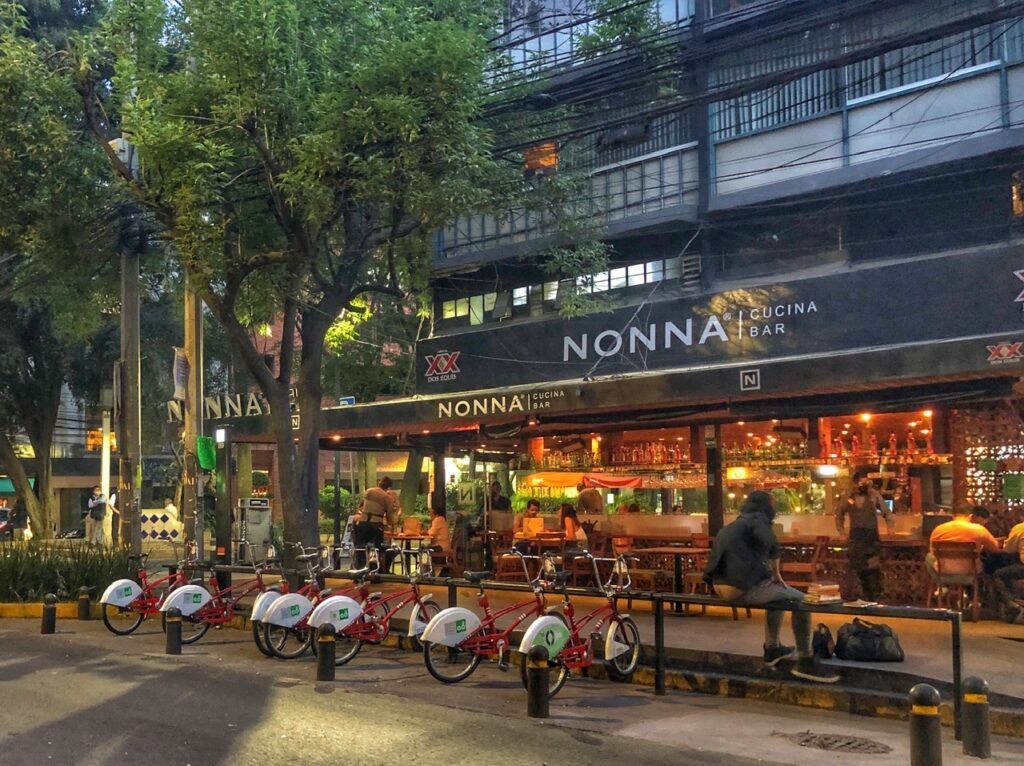
One of the restaurants in Condesa. We went to the sandwich shop across the street ?
Chapultepec Park
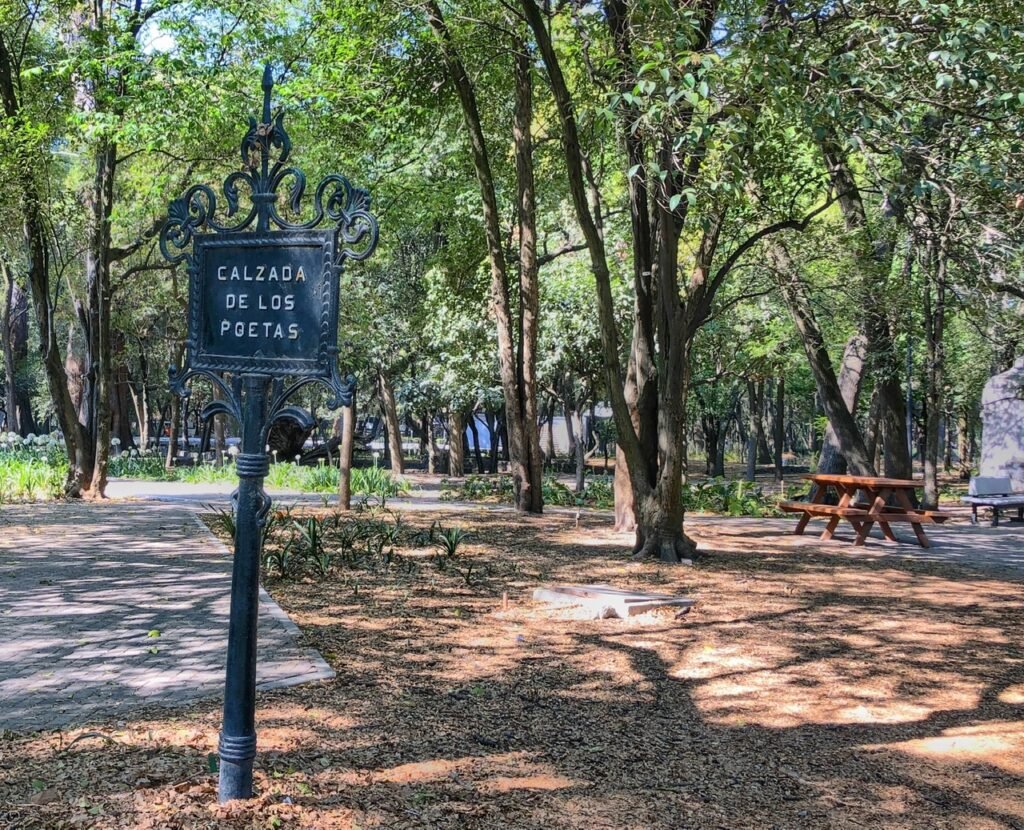
We spent the morning soaking in the verdant landscape of the massive Bosque de Chapultepec, or Chapultepec Park. The park is Mexico City’s premier green space and covers a span of more than 1,600 acres (4 square km). It has a distinct feel which parallels New York’s Central Park and features a wide range of activities and attractions, including museums, lakes, the zoo, monuments, fountains and of course, is stocked with tons of walking paths.
This area, Calzada de los Poetas, is where we found to be the most lush and tranquil area of the park. It showcases busts of prominent nineteenth and twentieth-century Mexican poets.
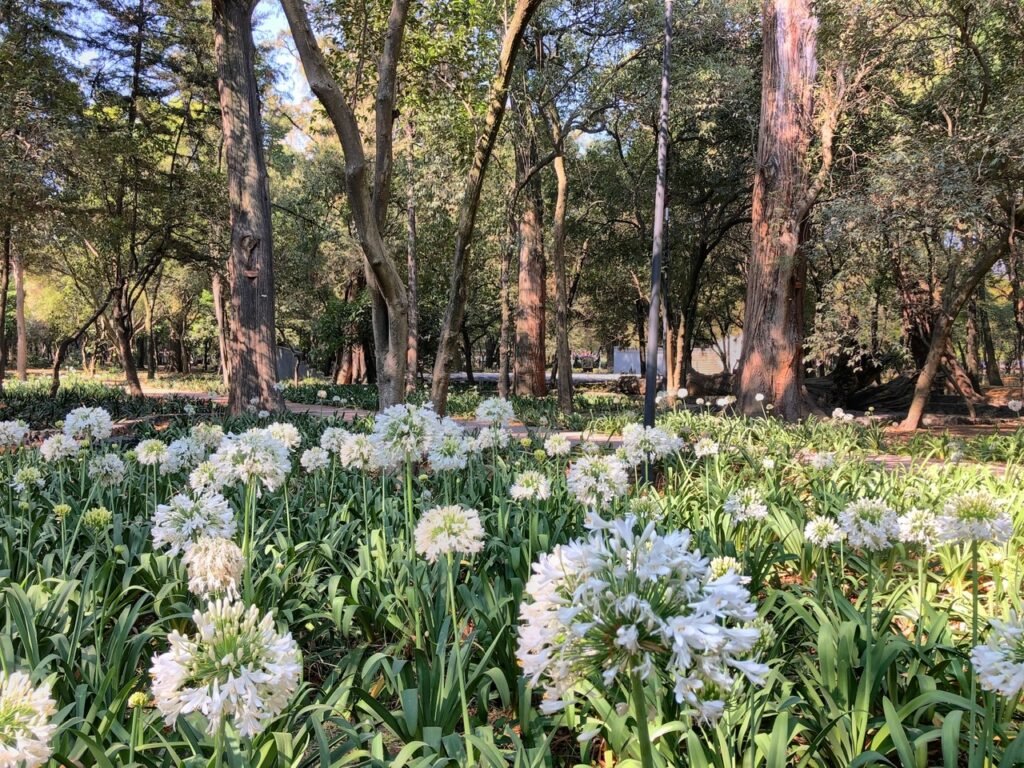
Walking along the Calzada de Los Poetas.
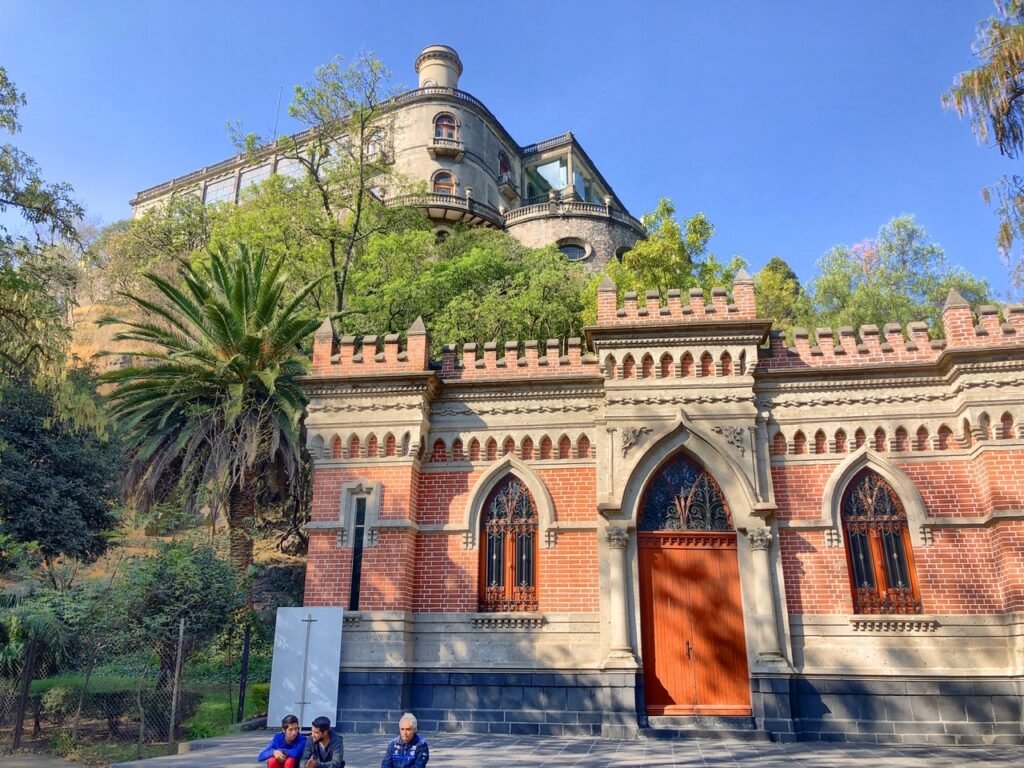
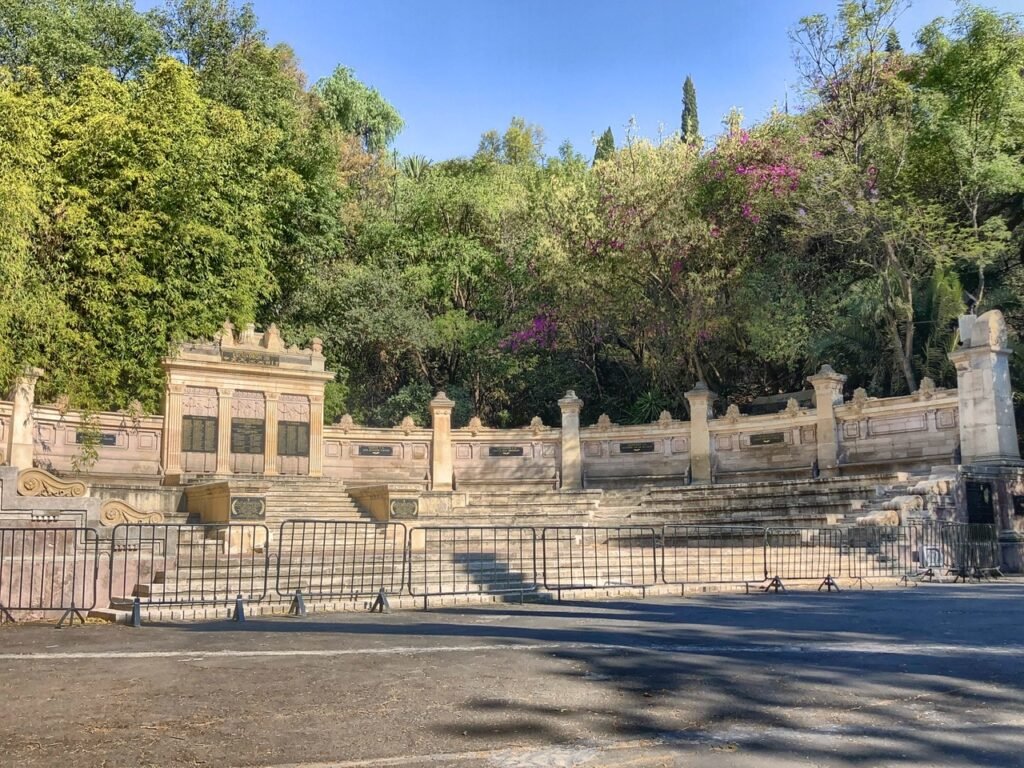
The Chapultepec Castle is located at the highest point of Chapultepec hill, offering fantastic views of the surroundings. Construction began on this building during the colonial period (mid 1850’s) and it has had several uses, including a military academy which was the site of the Battle of Chapultepec. During this battle, several young cadets lost their lives. It was not open when we were there. Not sure if this is for COVID, or that we just arrived too early. At right, a theatre near the castle.

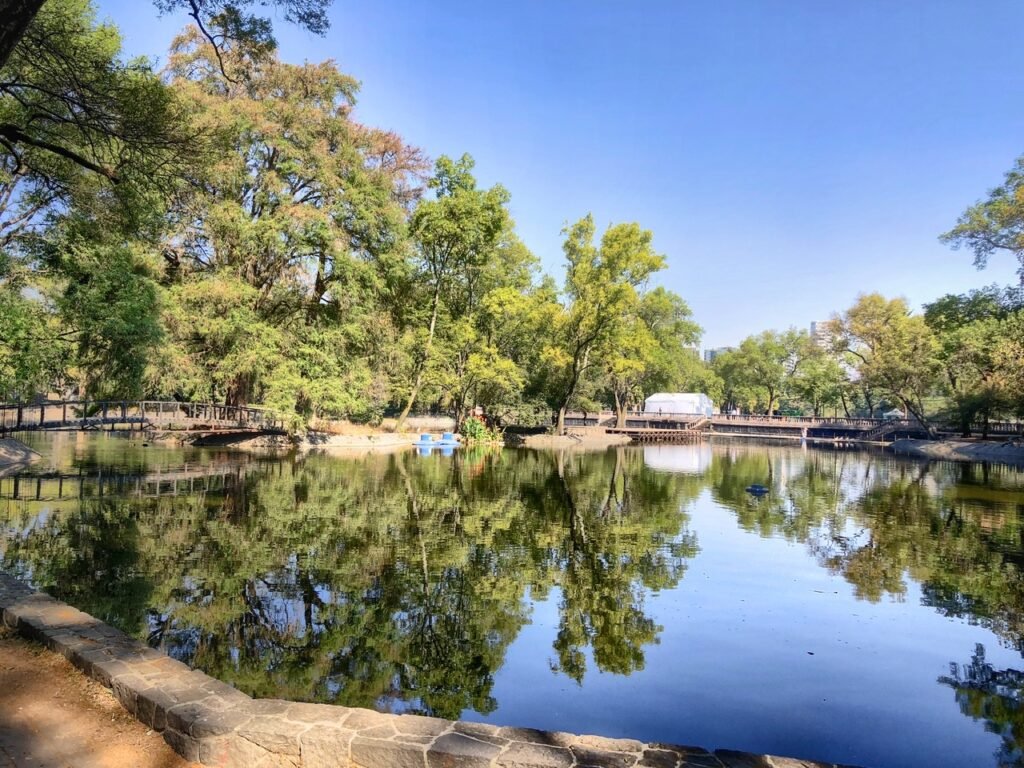
Miles and miles of walking paths, and lakes to check out within the park.
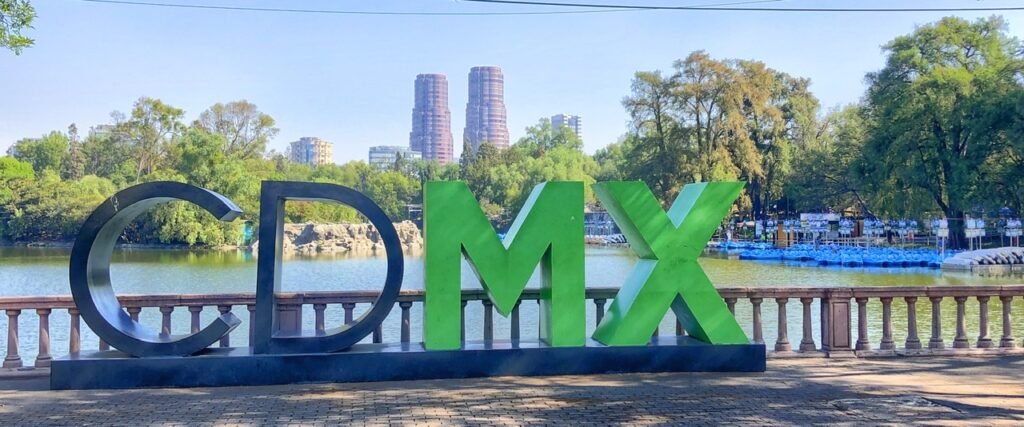
Behind the city letters, El Lago de Chapultepec is an artificial lake where you can rent a paddle boat to enjoy the scenery from a different perspective. They didn’t seem to be offering this service when we went.
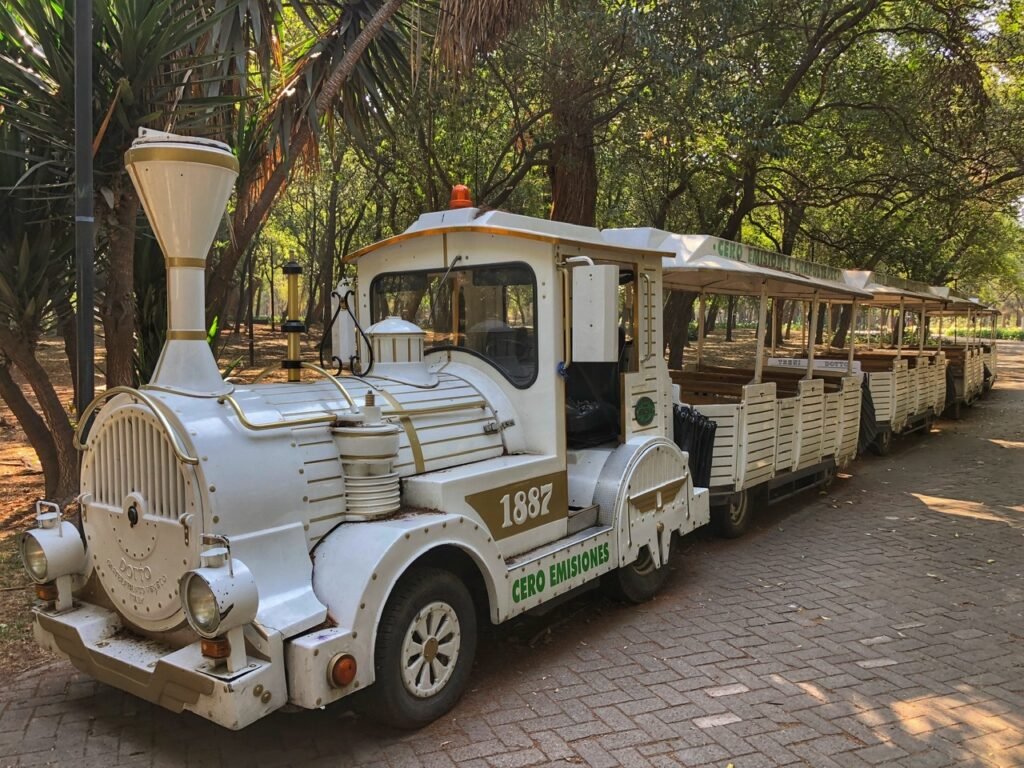
The little engine that couldn’t. It seemed to be permanently derailed, or just banned for COVID, based on two flat tires we saw.
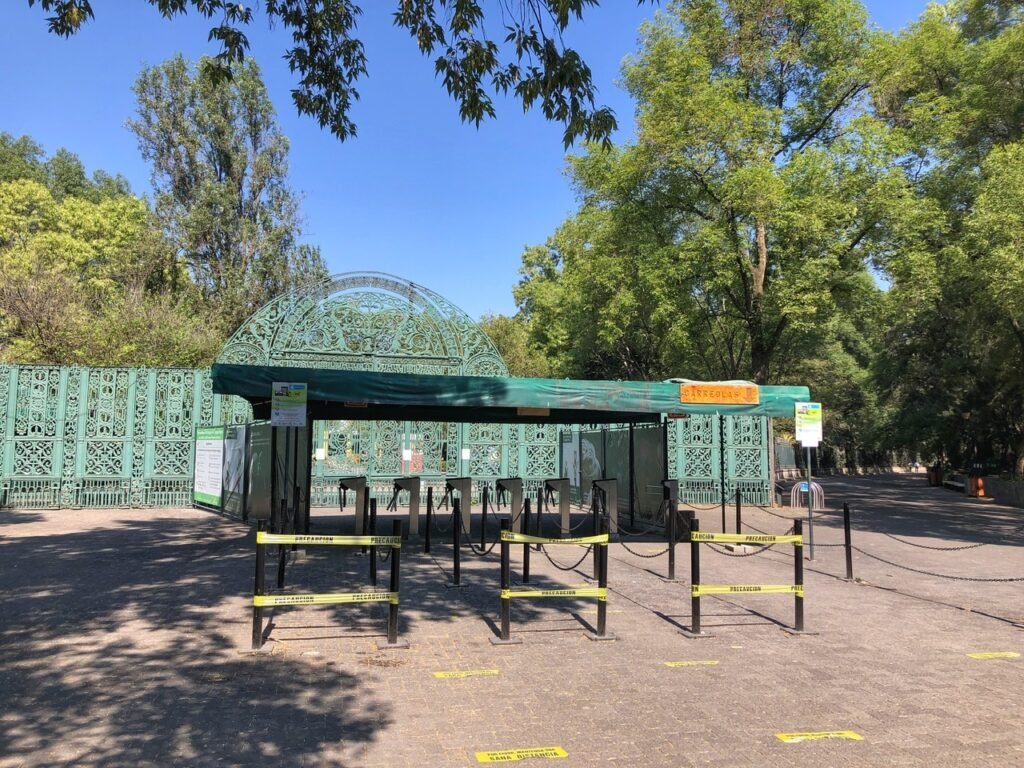
The entrance to the free Chapultepec Zoo, which is considered one of the most visited in the world, receiving over 5.5 million visitors annually. It evidently has more than 2000 animals. Not sure how they squeezed that many animals, including giant pandas, in a section of the park, or that we want to know?
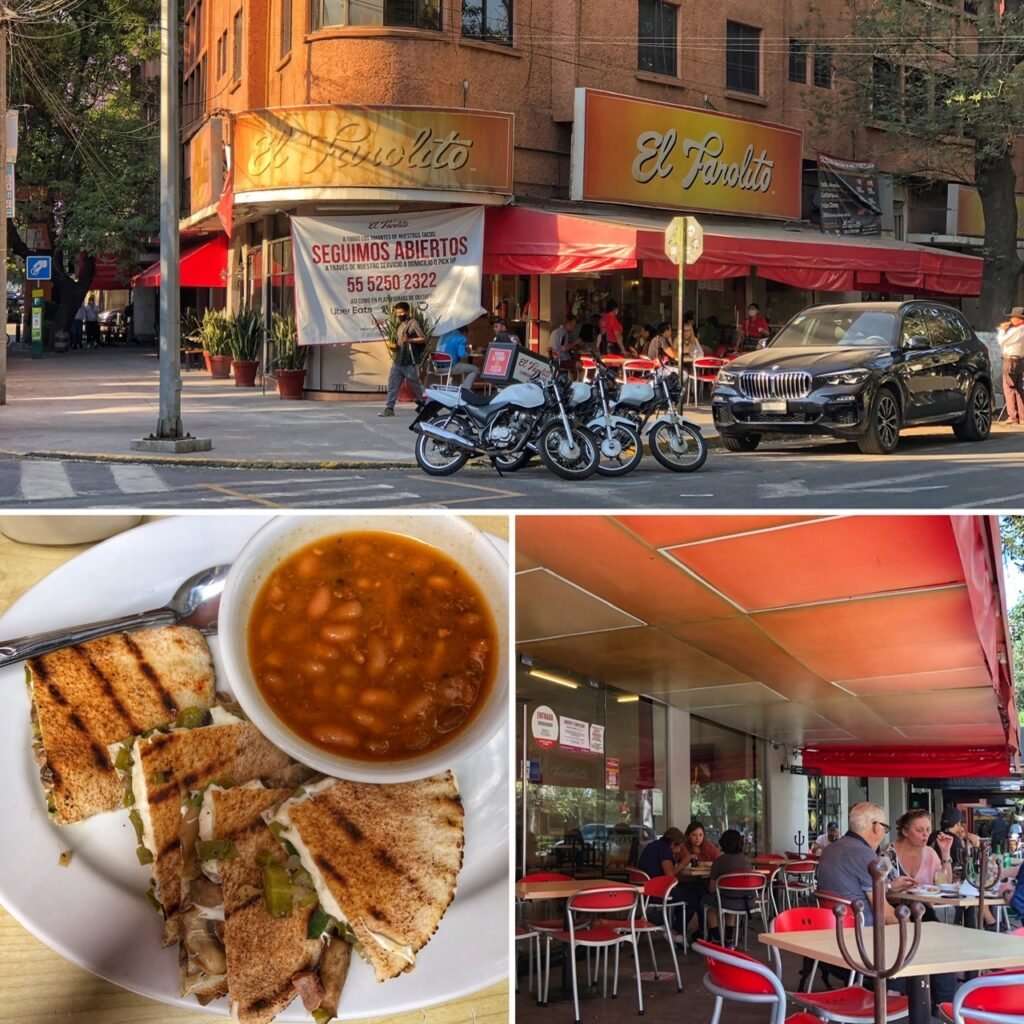
Having lunch out at El Farrolito, which we perceived to be a Mexican-style diner. Mandy had a farolada, which is basically like a quesadilla in pita bread, Greg had three tacos and we both horchatas bringing the bill with tip to a whopping $350 pesos or $17. This is definitely the most we’ve paid for any meal in Mexico. Mexico City, especially Polanco, is certainly more expensive than other areas we’ve visited!
Jamaica

Another day we stumbled into the Mercado Jamaica, one of Mexico City’s traditional public markets that has been around since the 1950’s and specializes in a grandiose selection, including 1150 stands dedicated to flowers and ornamental plants. We’ve never seen anything like it.
It was like a conventional flower market on steroids bursting with more color, intricate arrangements and selection than fathomable. The market offers about 5,000 types of flowers and plants, most of which are surprisingly foreign.
We saw stunning tremendous arrangements for as little as $200 pesos ($10) and there was little waste. Almost everything was wrapped in plant materials like banana leafs.
Mandy, who used to be an event coordinator in her former life, couldn’t wrap her head around the piles and piles of varieties and cost.
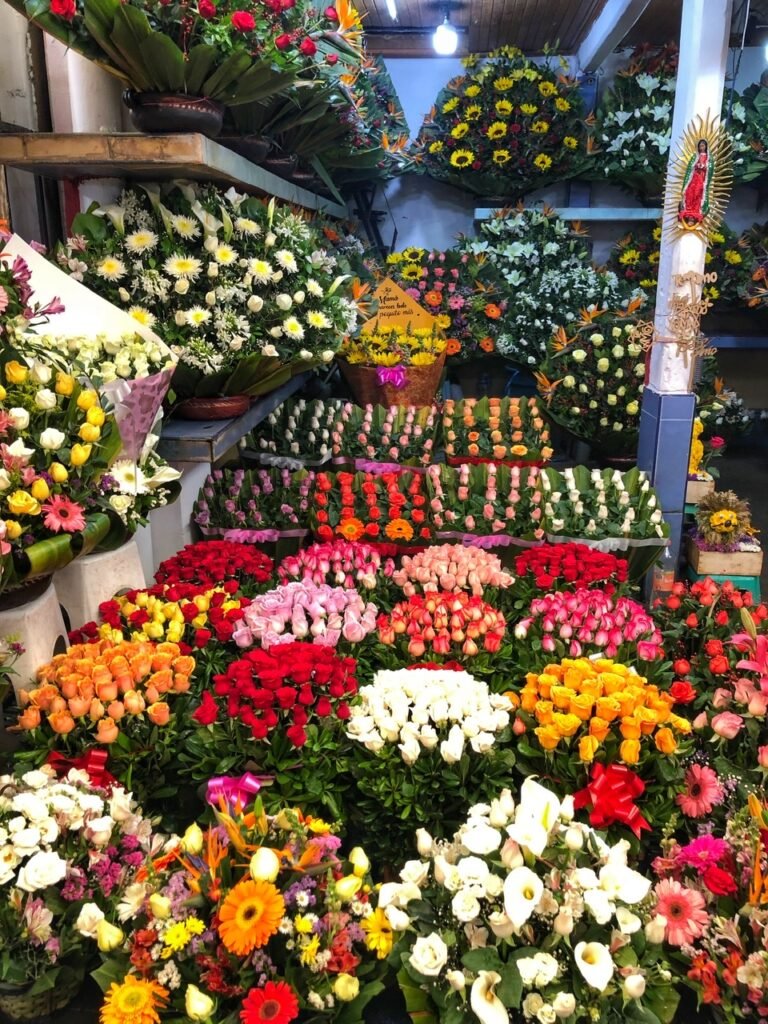

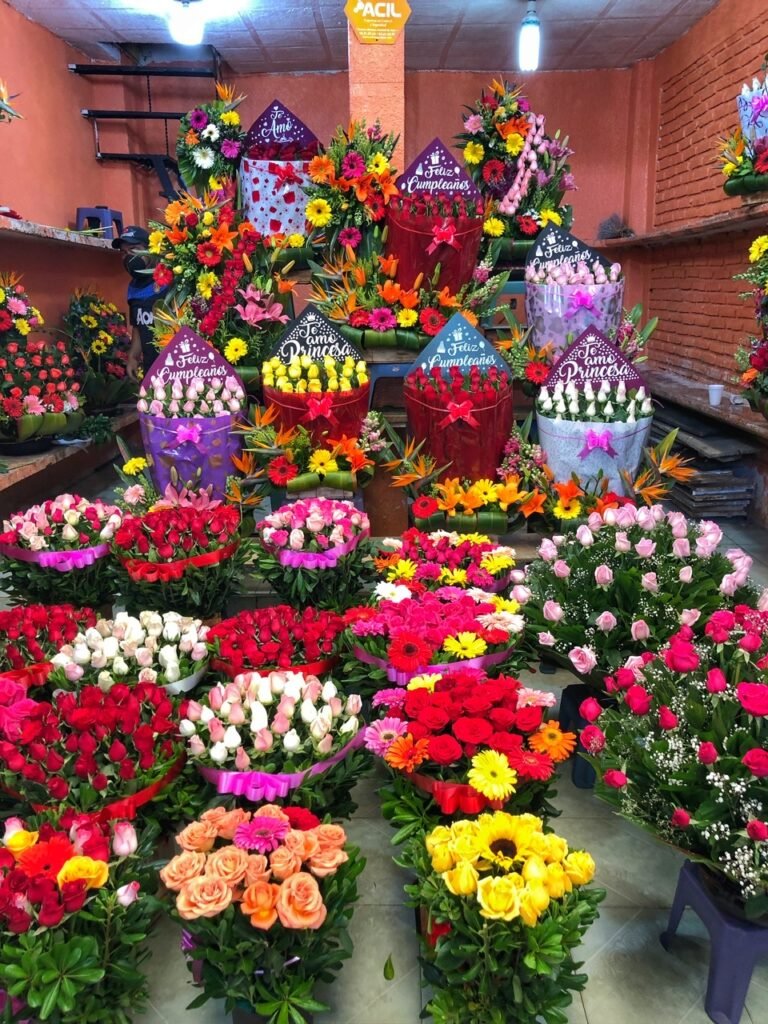
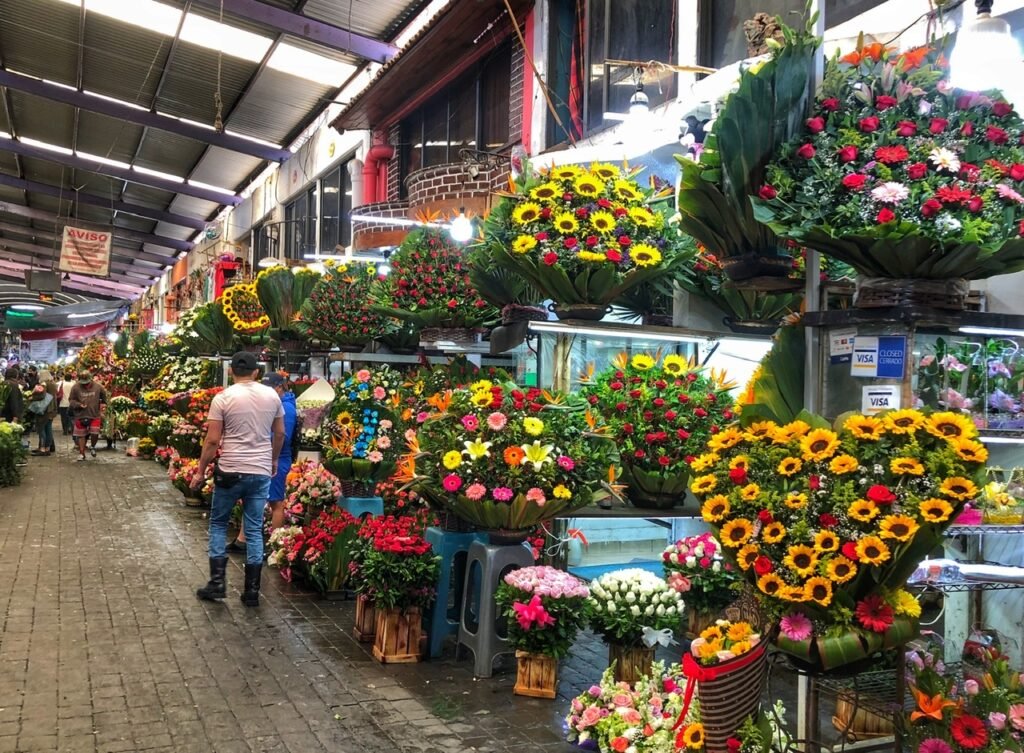
So many colors and varieties to choose from.
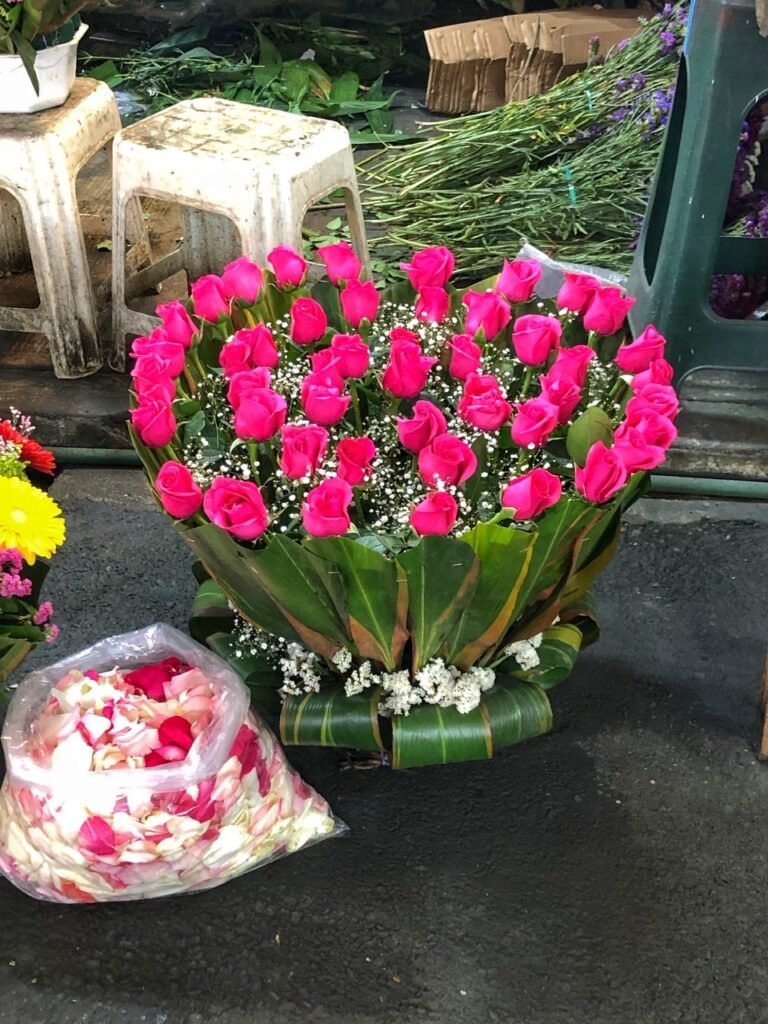
This arrangement of 4 dozen roses (approximately) was $300 pesos. ($15) Bonus: ZERO waste!

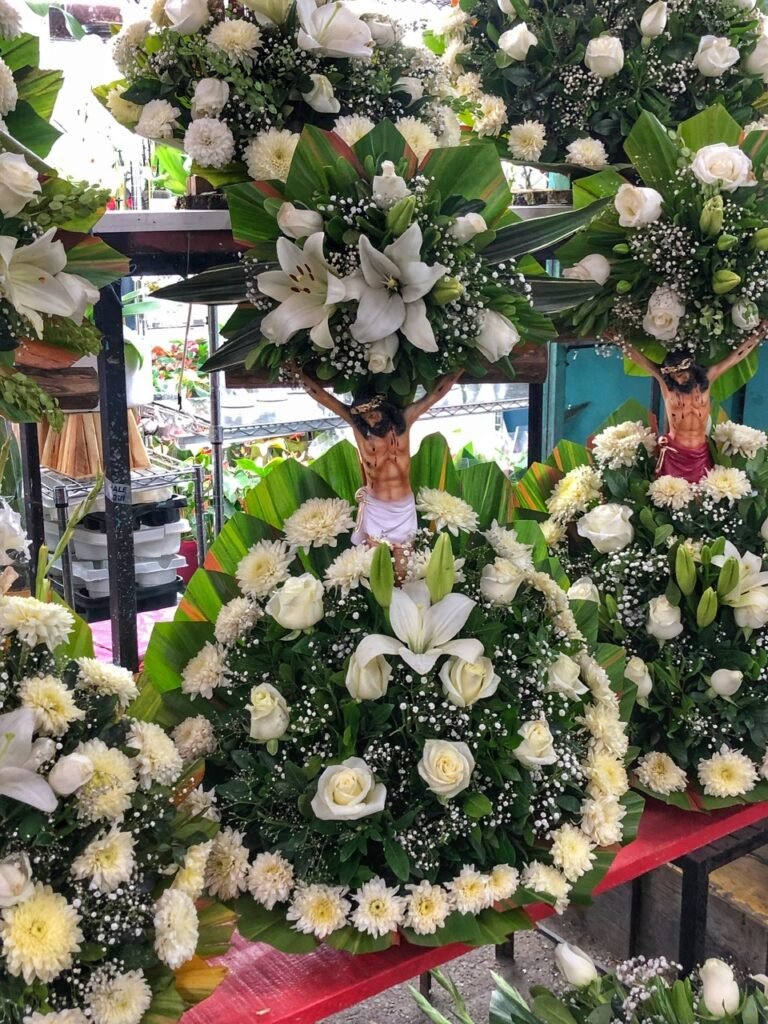
It seemed like a lot of the flowers were leftovers from Easter, which was a few days prior. Speaking of which, Easter is respectfully about Jesus in Mexico, not eggs and bunnies.
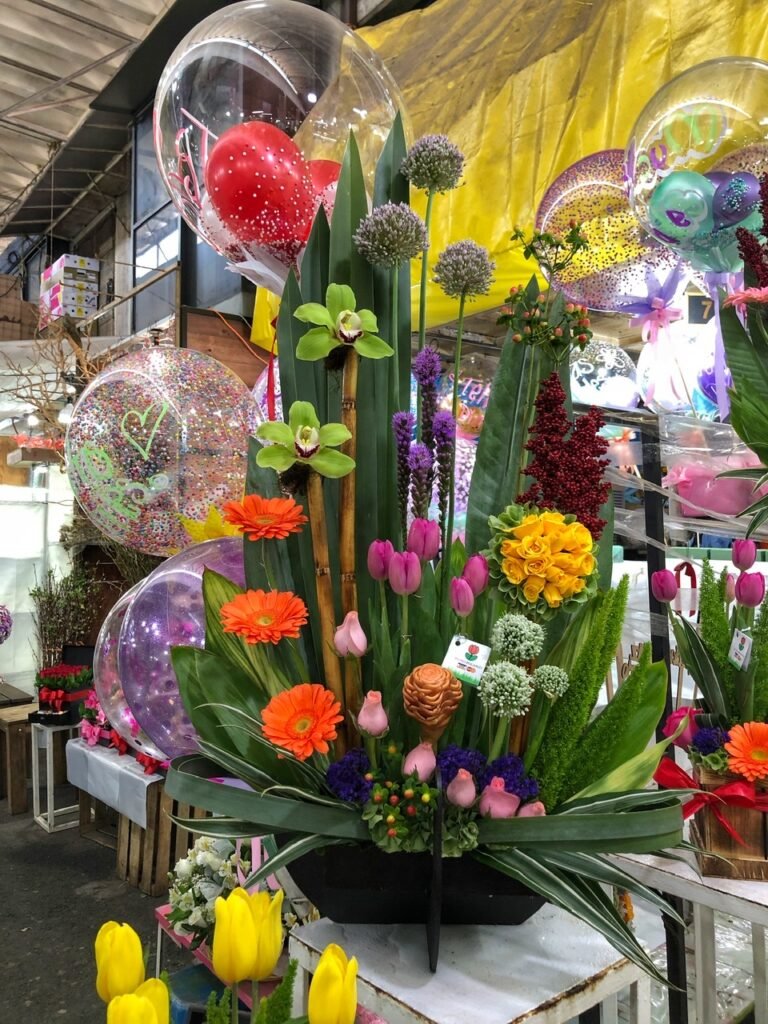
Look at how many types of flowers in this one arrangement!
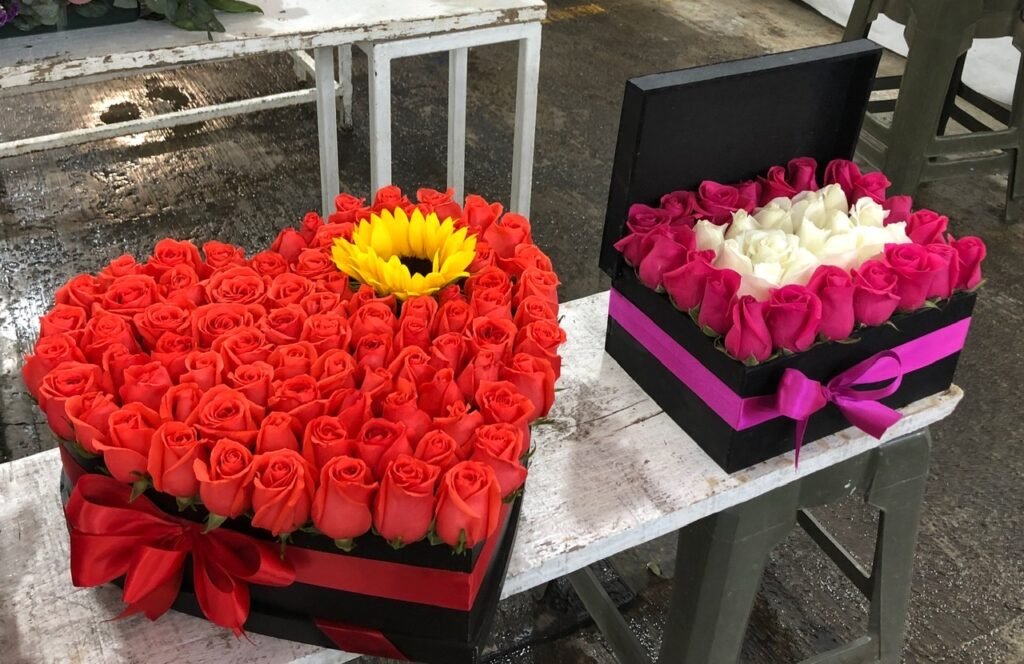
Or maybe you need a whole box!
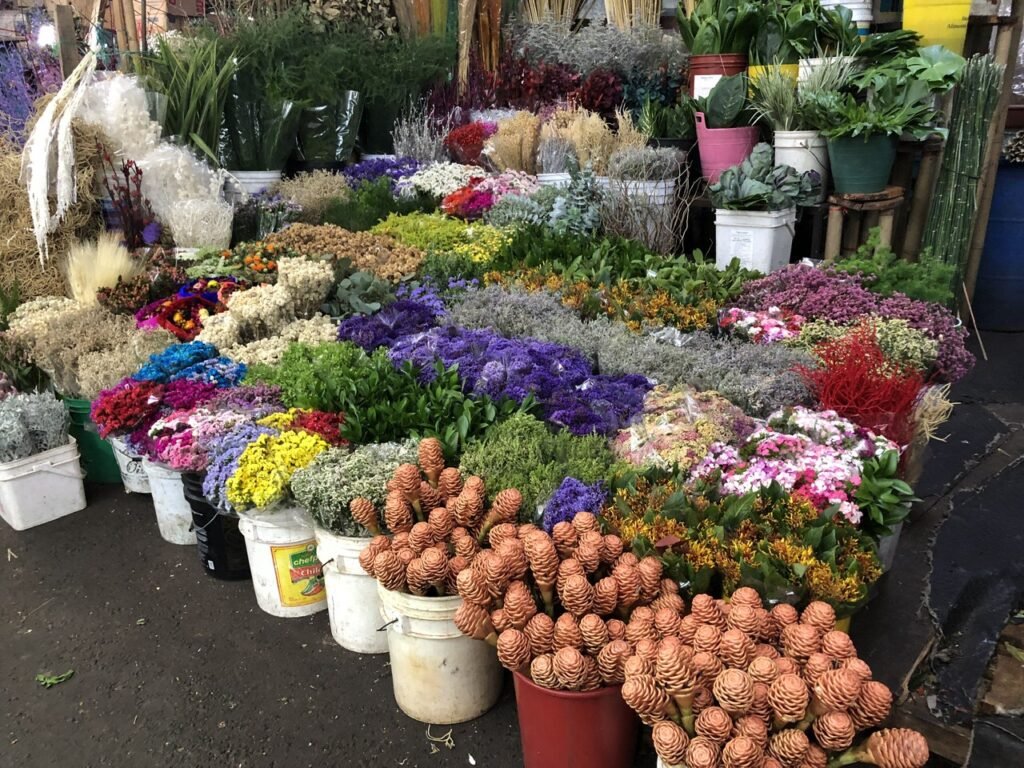

At left, a magical section of ALL fillers. In events, Mandy often wanted blue flowers to fulfill a certain theme. They weren’t really possible or affordable in the States but they are here!
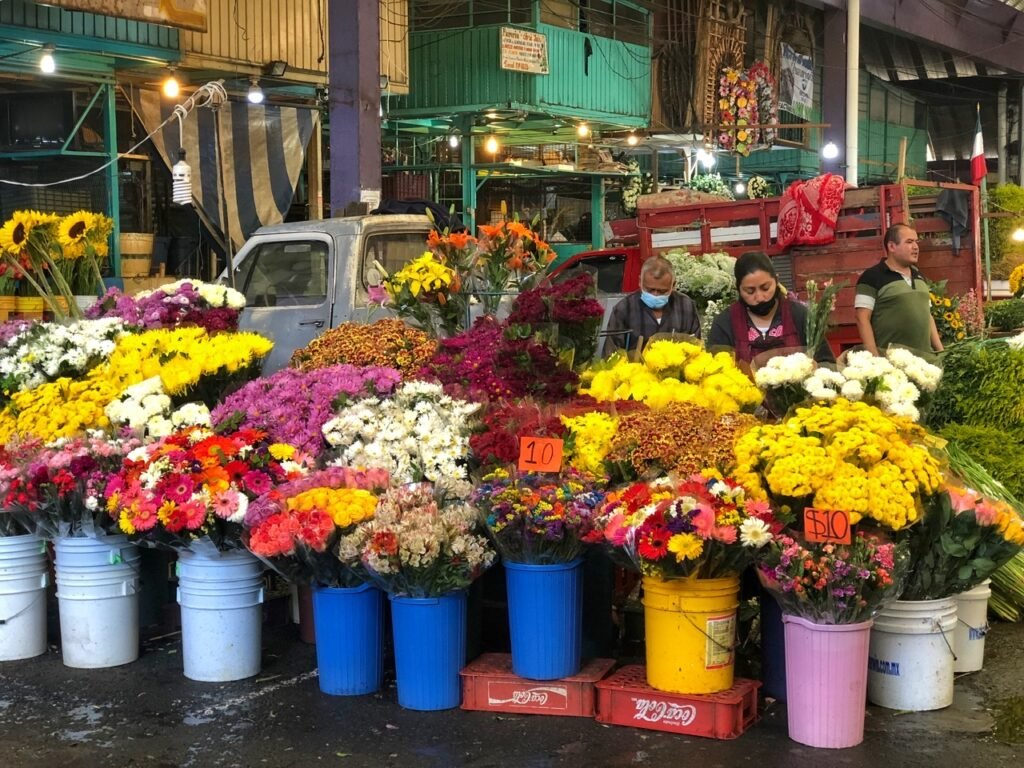
These people work incredibly hard. For very little. The average Mexican daily wage in 2021 is 435 pesos ($21), which translates to $2.62 an hour, IF you work 8 hours which is probably not the case.
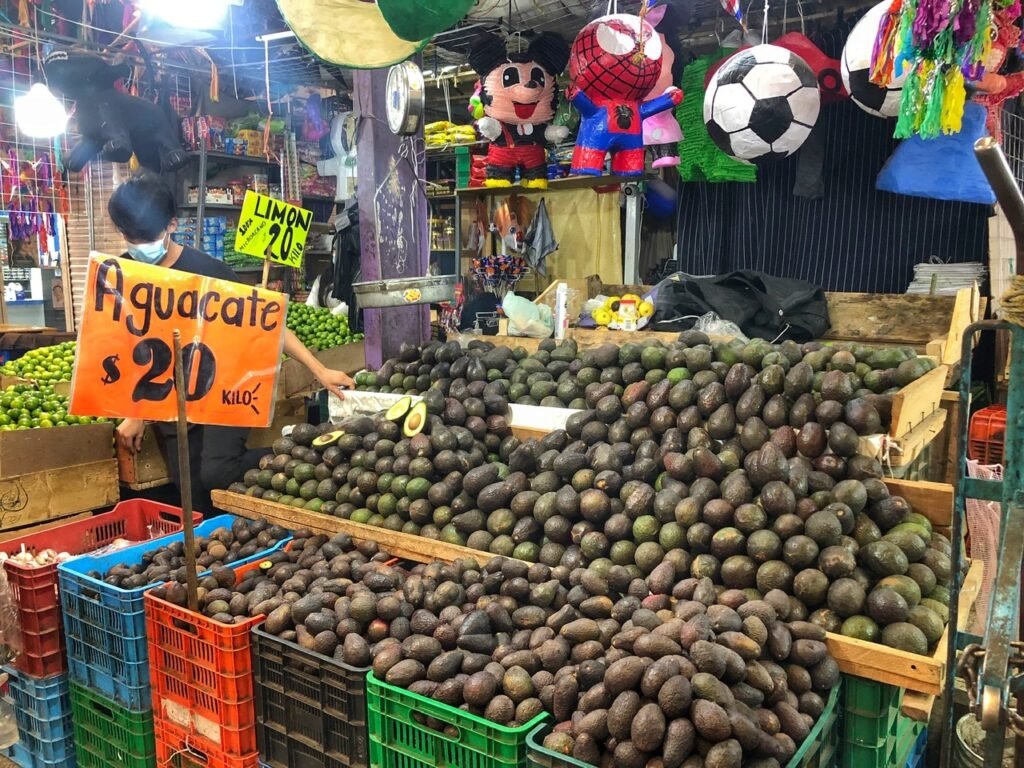
And, we did finally move on to the produce section. As is typical, the selection and price was phenomenal for us (and manageable for their sake). One kilo (2 lbs) of avocados for $20 pesos ($1).

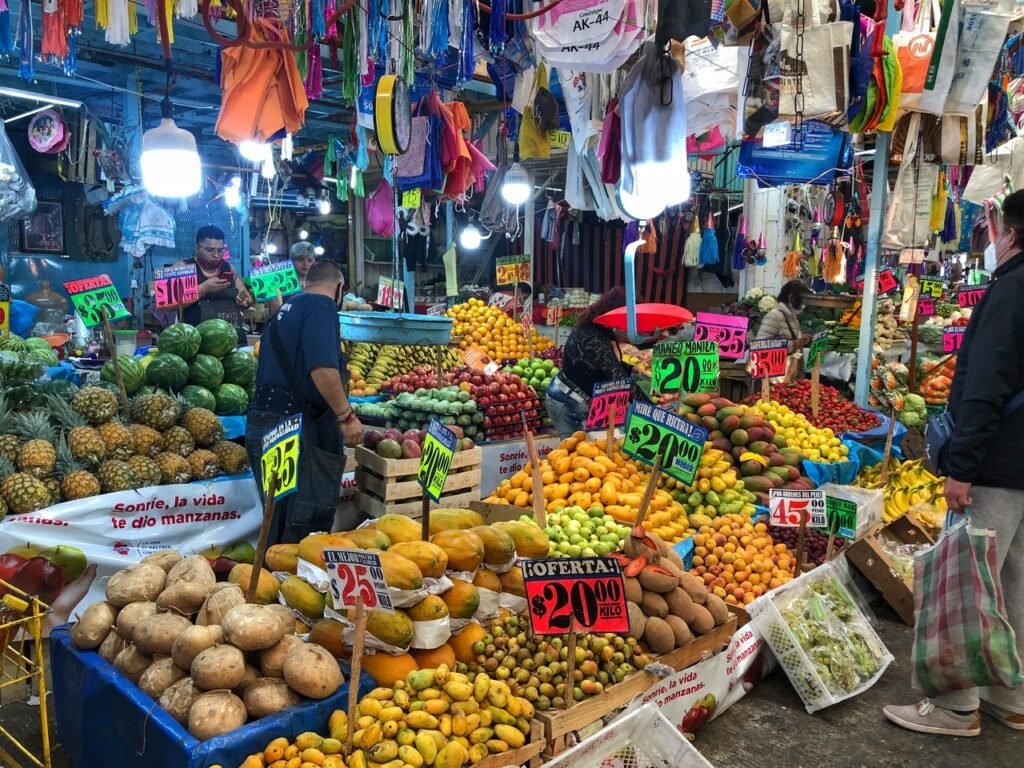
We loved that all the produce was priced so we were much more likely to get the local price. And we definitely didn’t get ripped off!
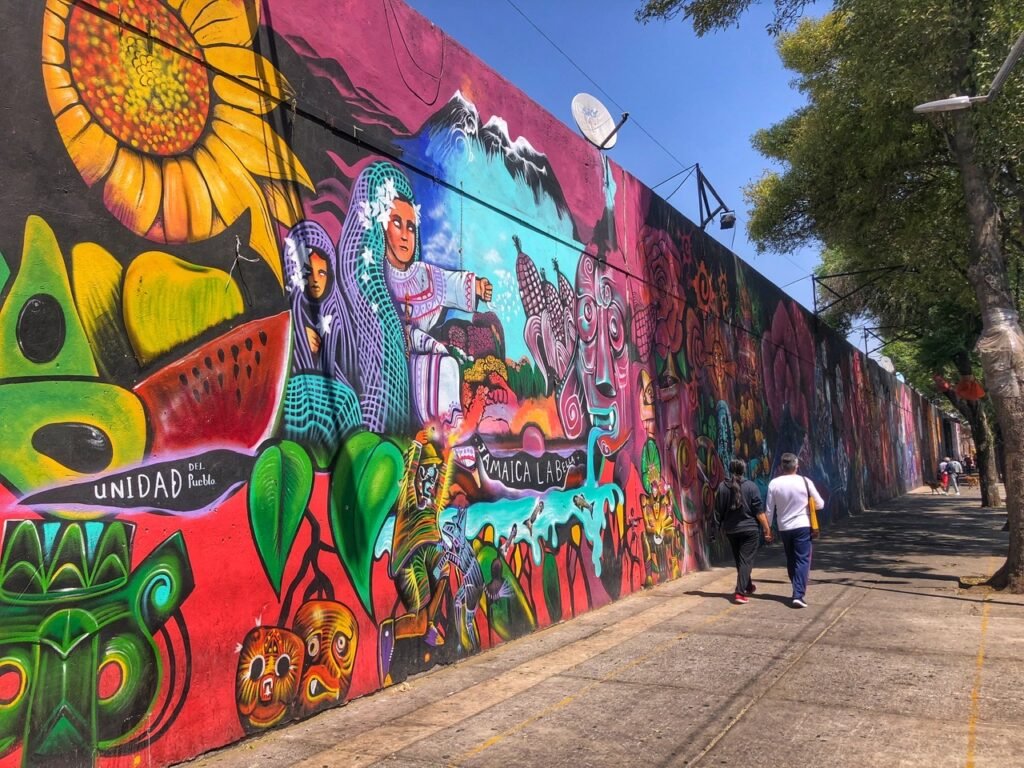
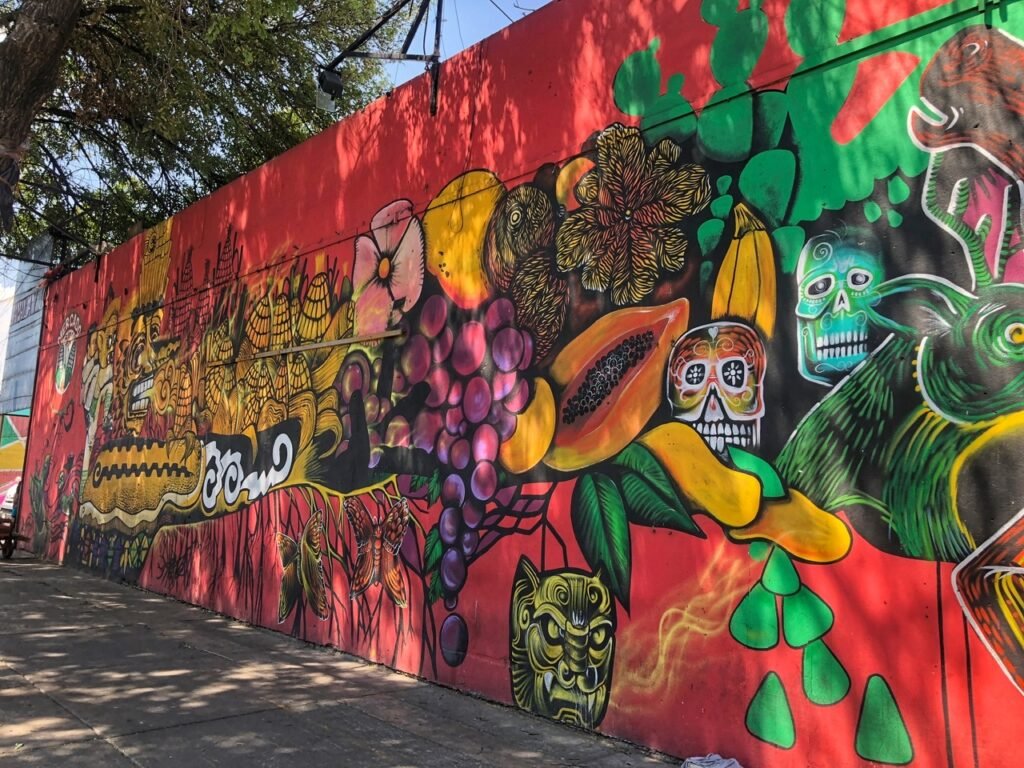
Beautiful murals outside the market!

When you’re not one of the traditional mercados, there are plenty of supermarkets available. We love the selection on cheap herbs and the tiny tins of veggies.
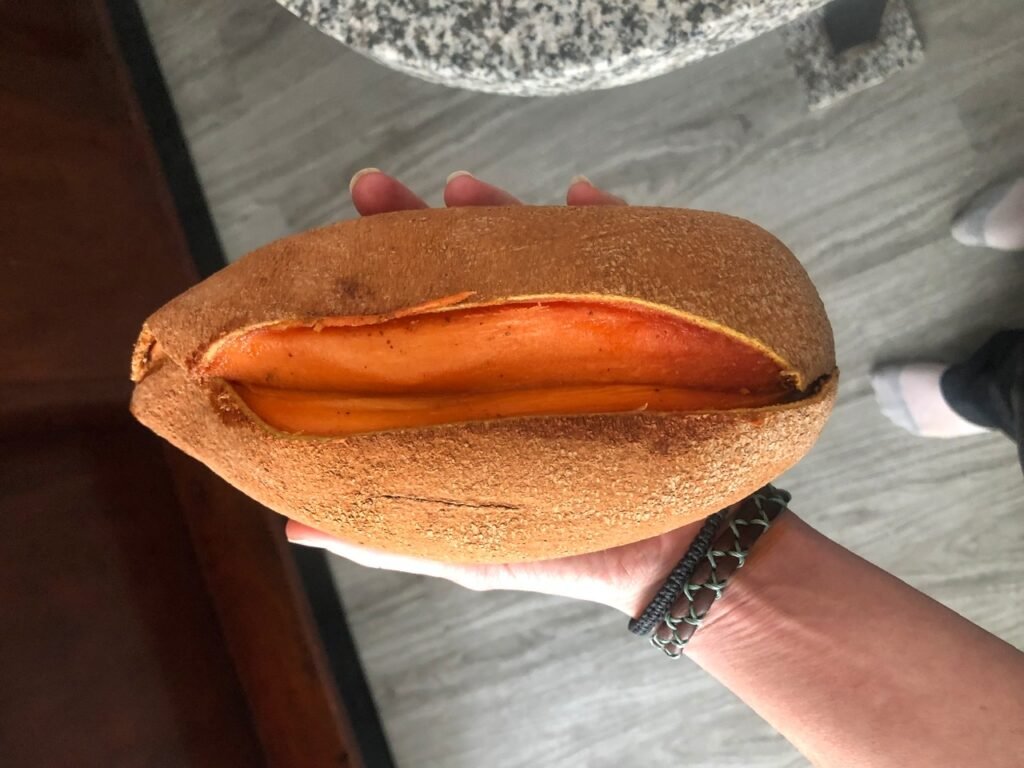
No, it’s not a sweet potato! We couldn’t believe the size of this mamey fruit for $20 pesos ($1.) Mameys have a sand-papery skin and a very large seed oblong seed in the middle. You can eat all the inner flesh, which has the consistency of an avocado, but tastes sweeter and kind of figgy. It’s very high in vitamins B-6, C, Iron and Fiber.
Roma
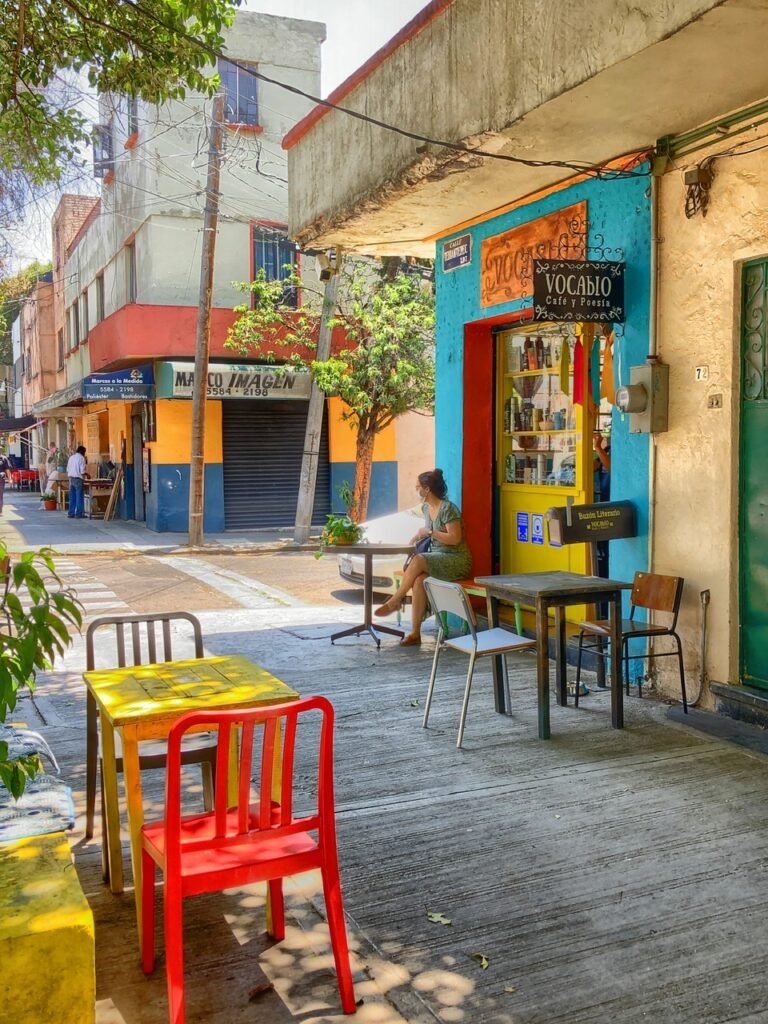
La Colonia Roma, which was built in a dried lake bed, is one of the most emblematic and vibrant neighborhoods of Mexico City. Most guidebooks and blogs give it titles like “the hipster heart,” “culinary powerhouse” and “the place to be.” It’s definitely all of these things and we enjoyed it thoroughly.
It’s been through quite a history. The colonia was planned as an upper-class village in the early 20th century. By the 1940s, it had been swallowed by the city and became a middle-class neighborhood in slow decline. If you’re a movie buff, you might have caught the 2018 drama “Roma” which captures this era in the ‘70s, followed by downswing being worsened by the 1985 earthquake. Since the 2000s, the area has sadly seen increasing gentrification, as well as an influx of French bulldogs and skinny-jeaned Latinos. Also, there is certainly no shortage of cute cafes to throw down a laptop and pull up a latte.
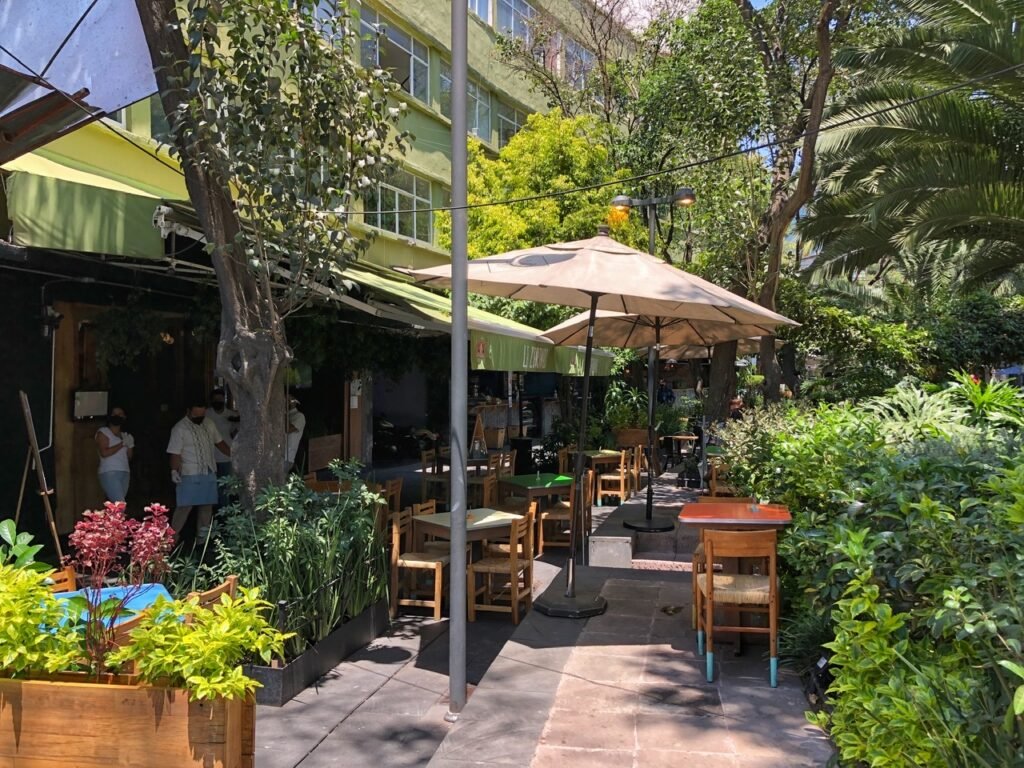
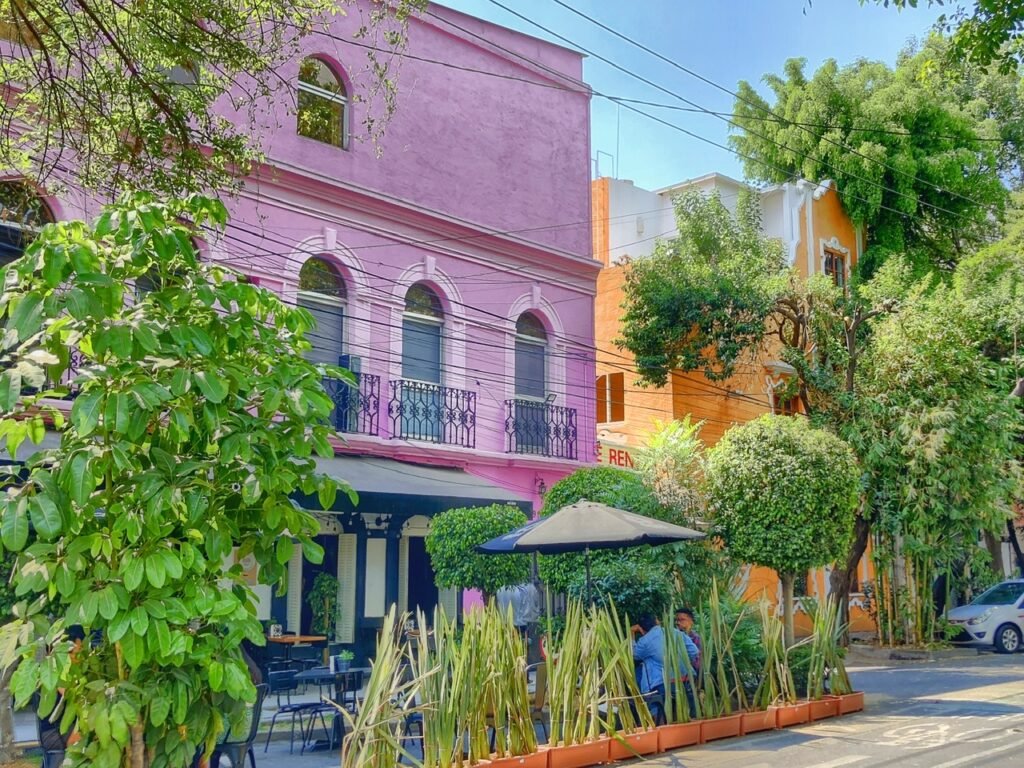
The streets are just gorgeous. This sidewalk restaurant makes you feel like you’re in the jungle while you dine. There are little bits of charm where ever you walk.
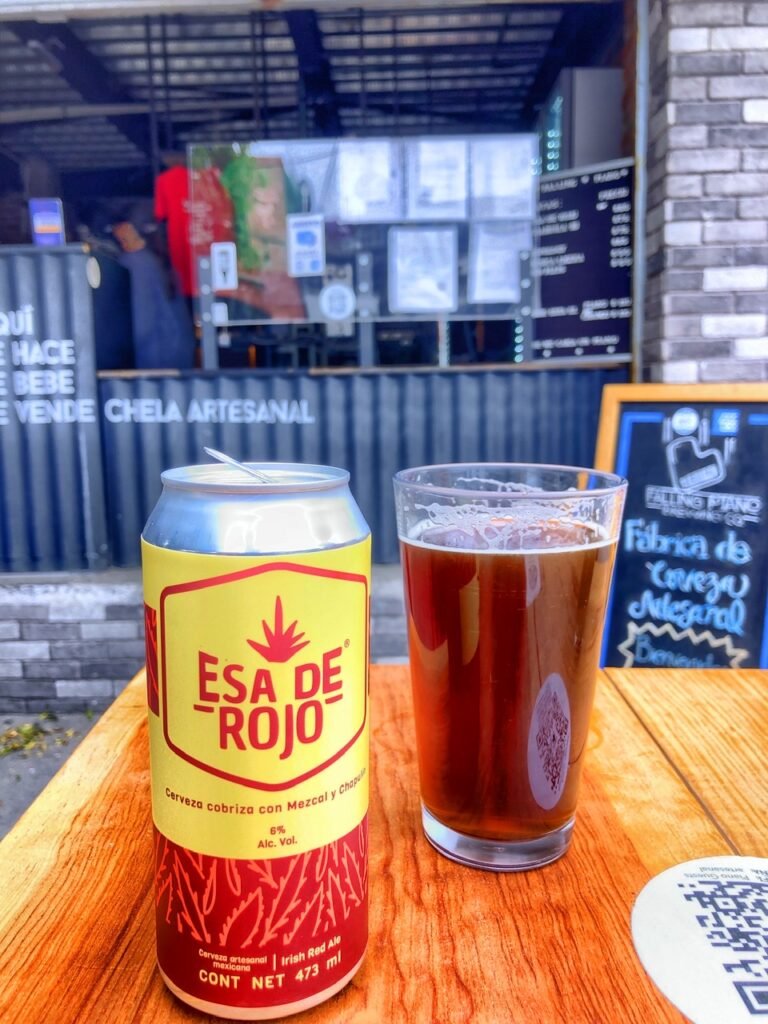
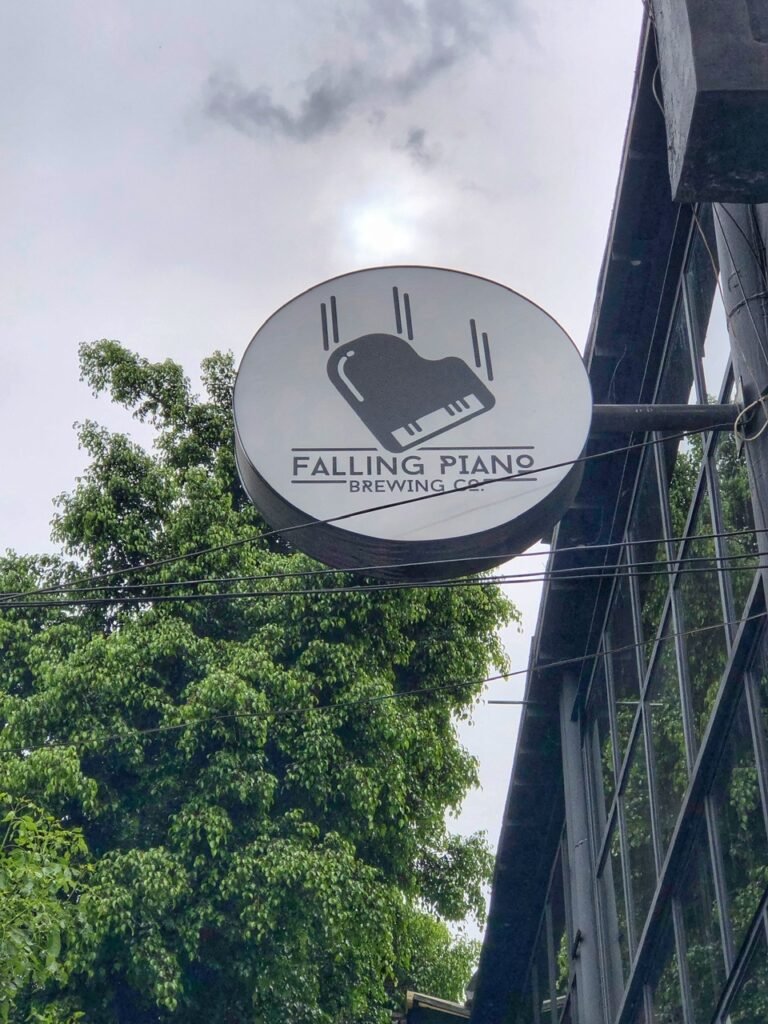
And of course we checked out the breweries. At the Falling Piano Brewery, Greg tried the Esa de Rojo, (Irish Red Ale), which was a remarkable brew made with Mezcal. Another was laughingly called “tu perro está ladrando”(your dog is barking) which fits so well in Mexico. All beers were made on-site.
The waitress told us (in Spanish so we “think” this is the story) that the reason it is called Falling Piano is because a man was killed by a piano that fell on him in the neighborhood. The piano is still in the brewery.
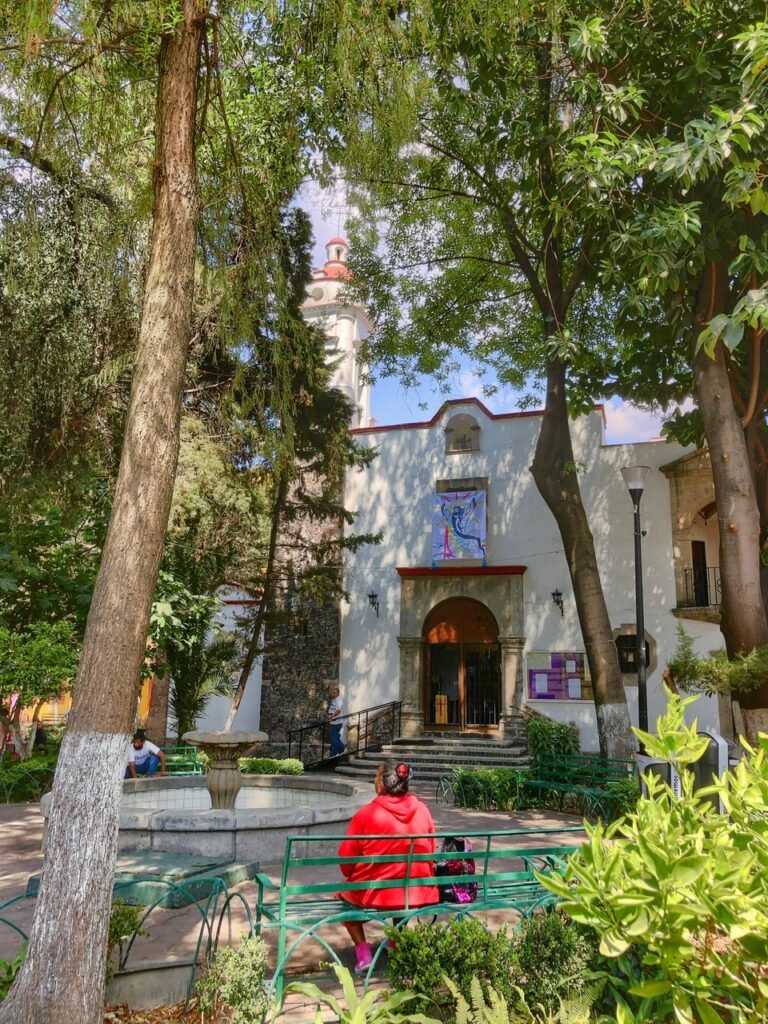
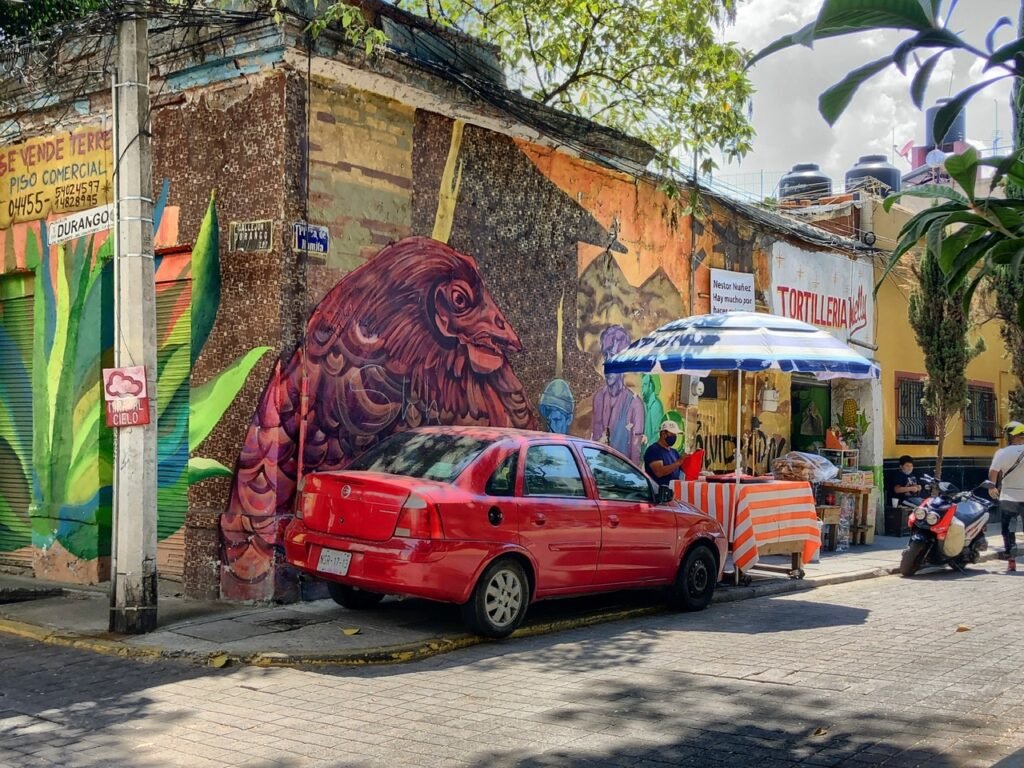
This square, called the Plaza de Romita was the original town center of Roma.
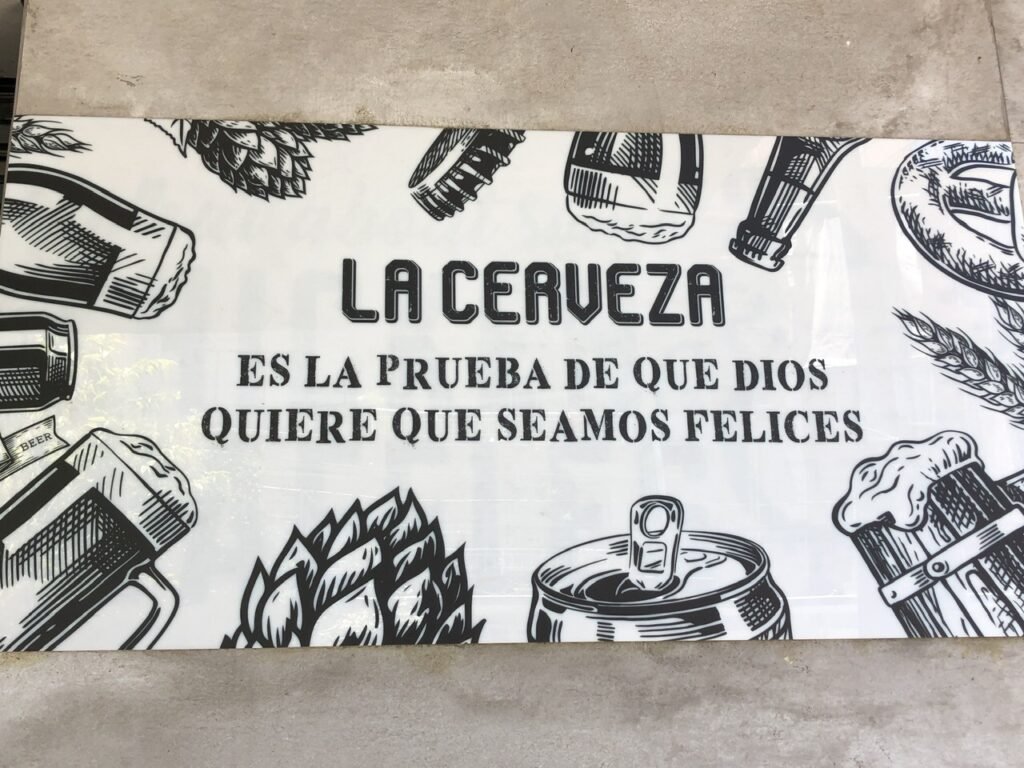
Greg’s (almost) favorite quote! En espanol! Beer: it’s the proof that God wants us to be happy.
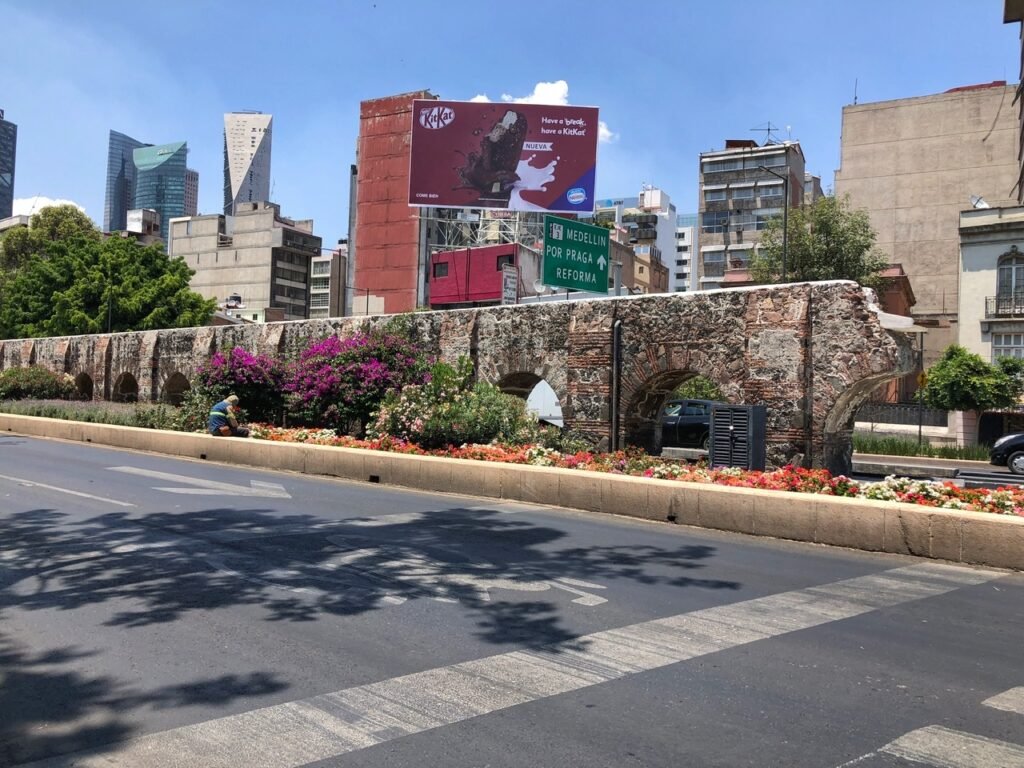
The remainder of the aqueduct. Not quite the grand facade of the one in Queretaro.

These little stands, which seemed to be rolled on a cart, are absolutely everywhere.
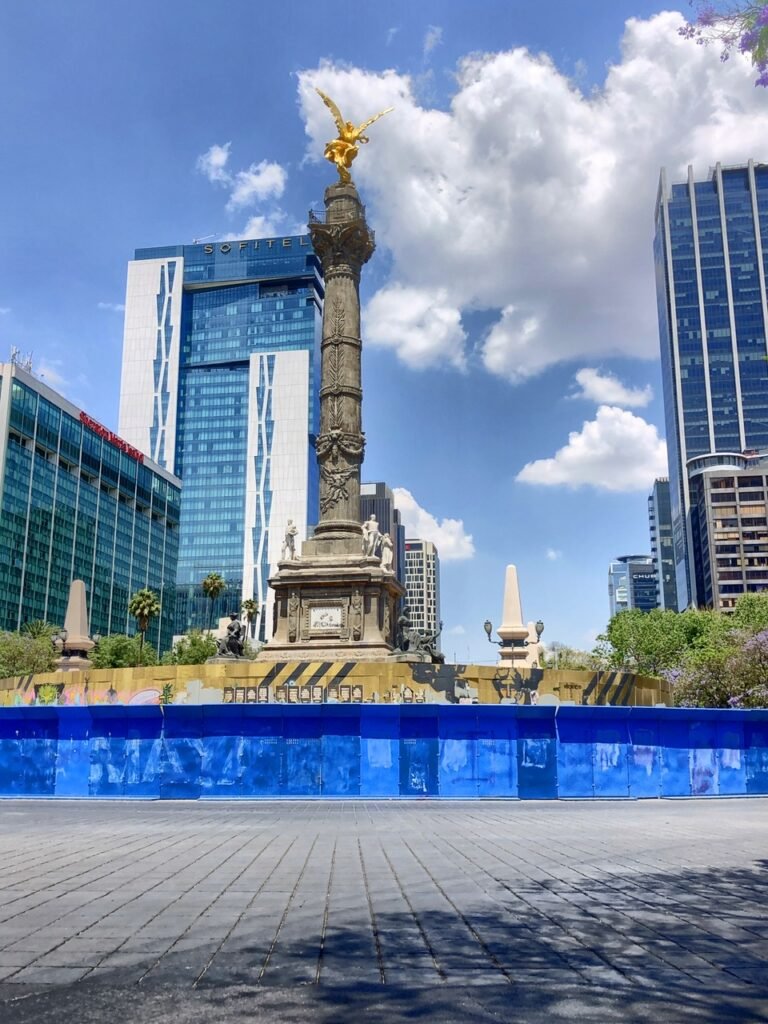
One of the most notable landmarks in Mexico City is The Angel of Independence statue. It was built in 1910 to commemorate the centennial of the beginning of Mexico’s War of Independence.
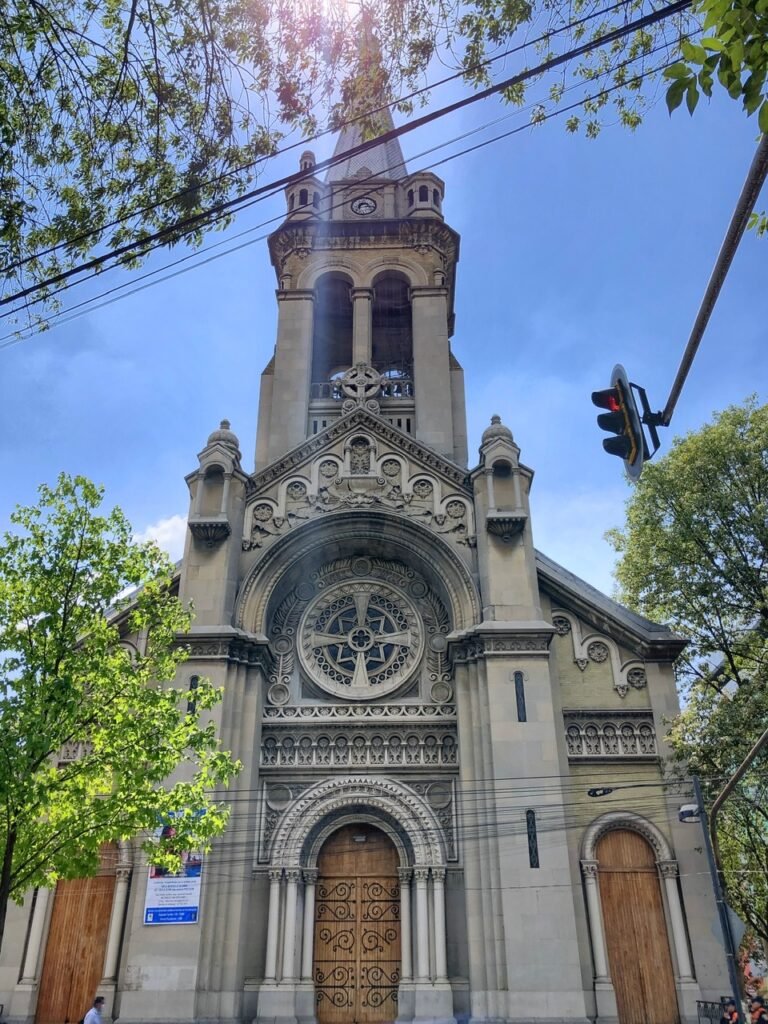
The Parish of the Holy Family (PARROQUIA DE LA SAGRADA FAMILIA) is an neo-Gothic icon of Roma Norte and was begun 1910 and completed on 1925.
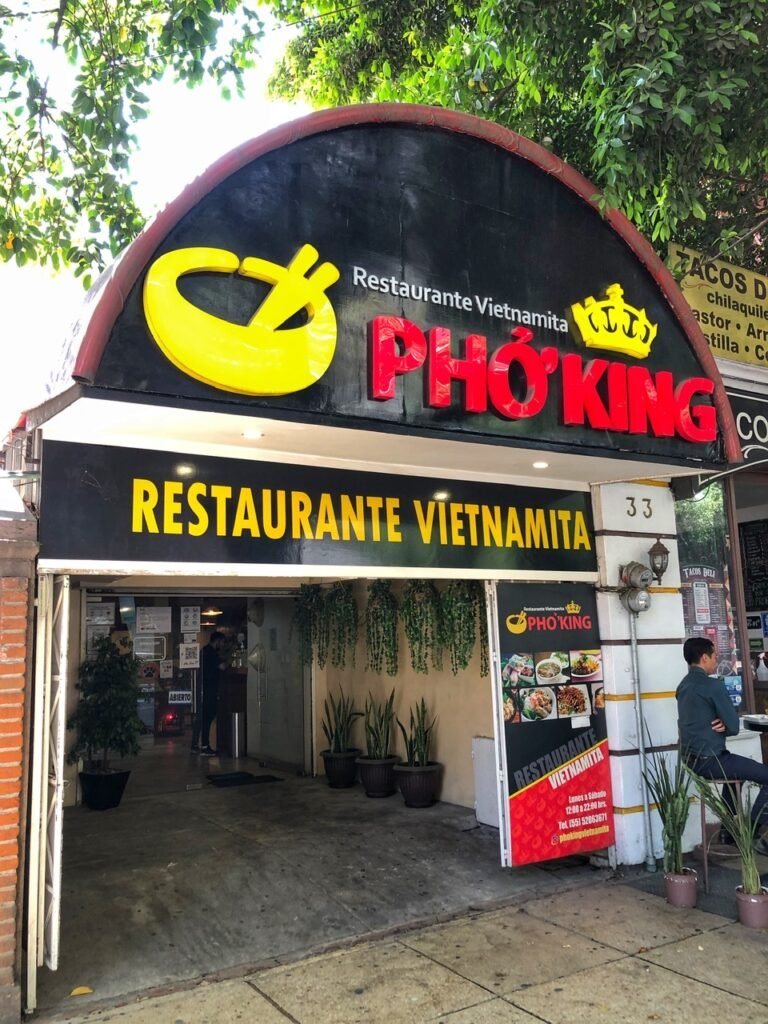
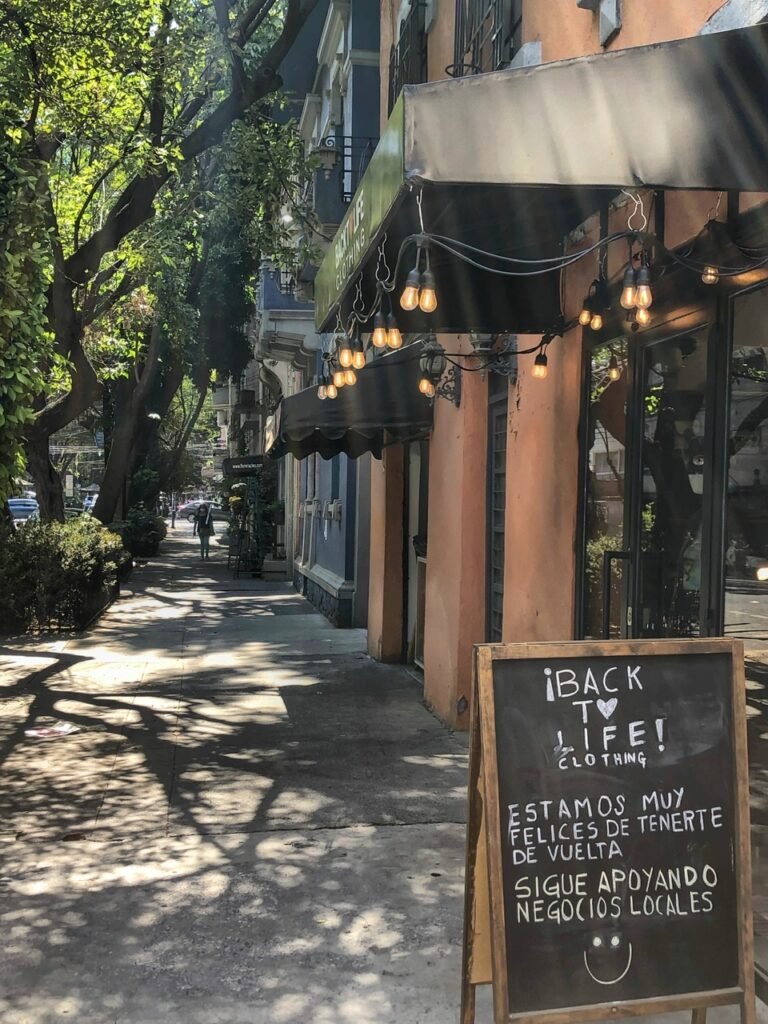
Hehe. You could never get away with this in the States. P.s. you have to know how to pronounce “pho” correctly to get it. Support your local pho king businesses!
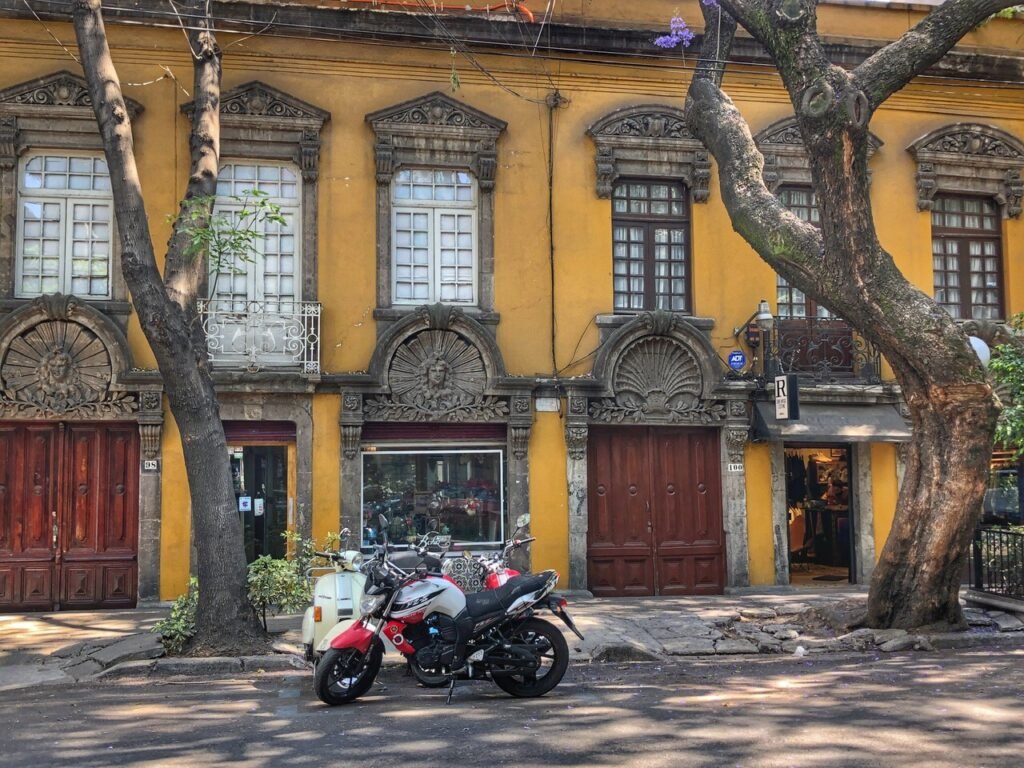
Loved this building.
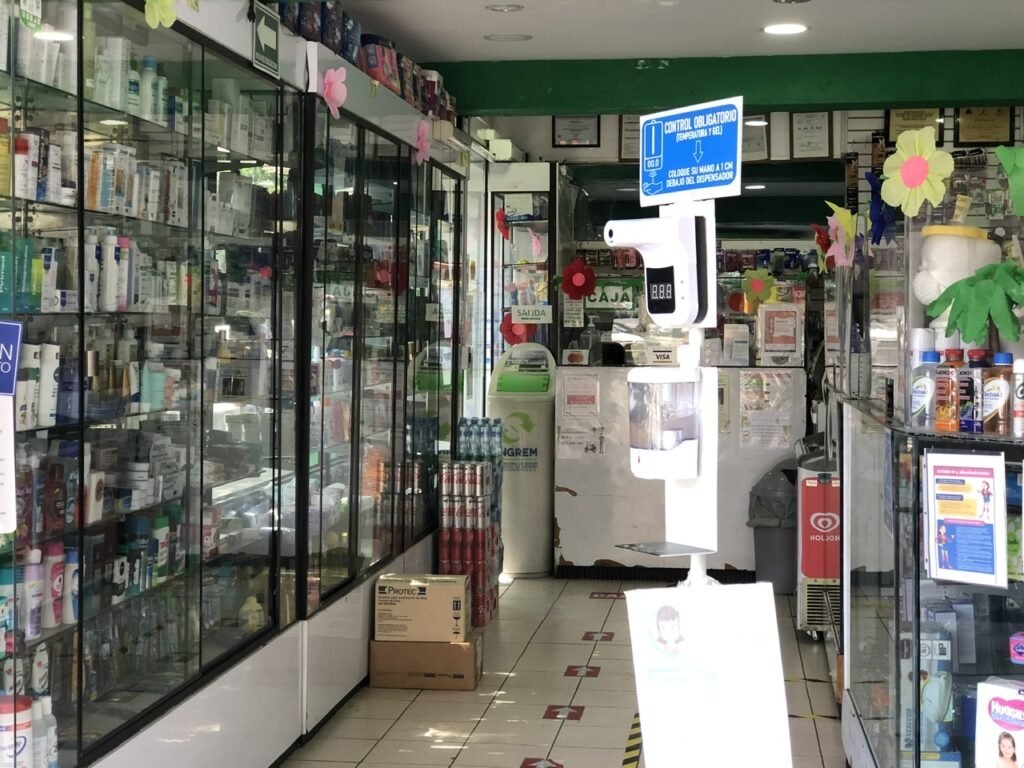
These are the temperature scanners that are placed at the entrance to every store, restaurant, Mercado and other public places. Some of them are also thermal.
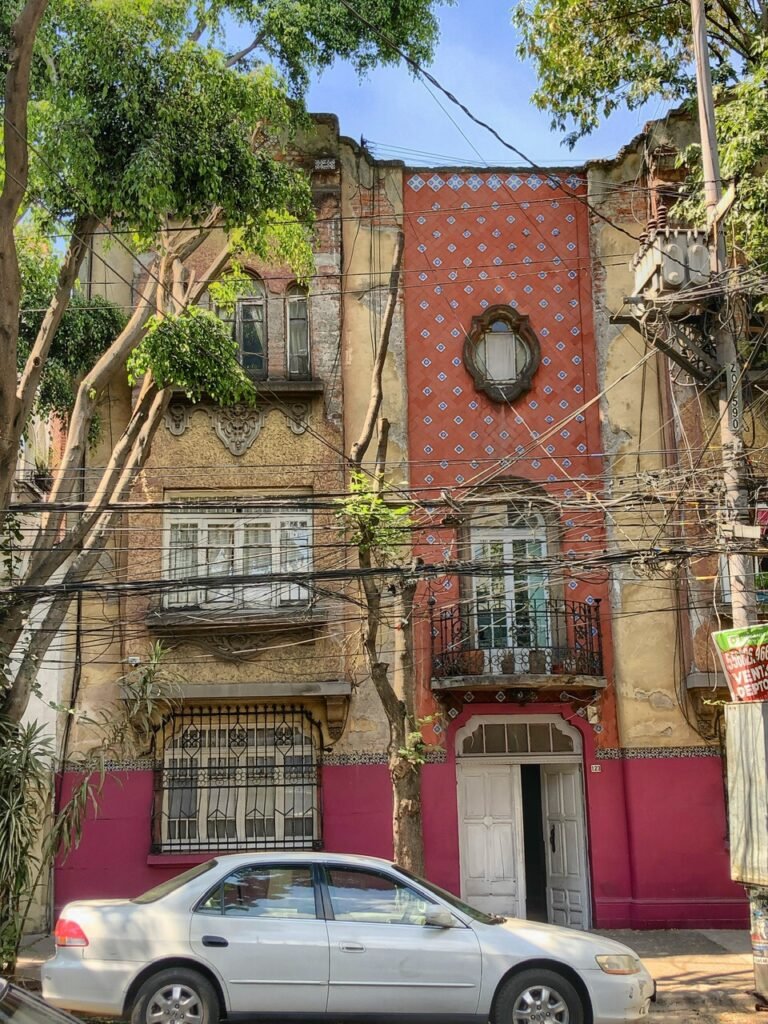
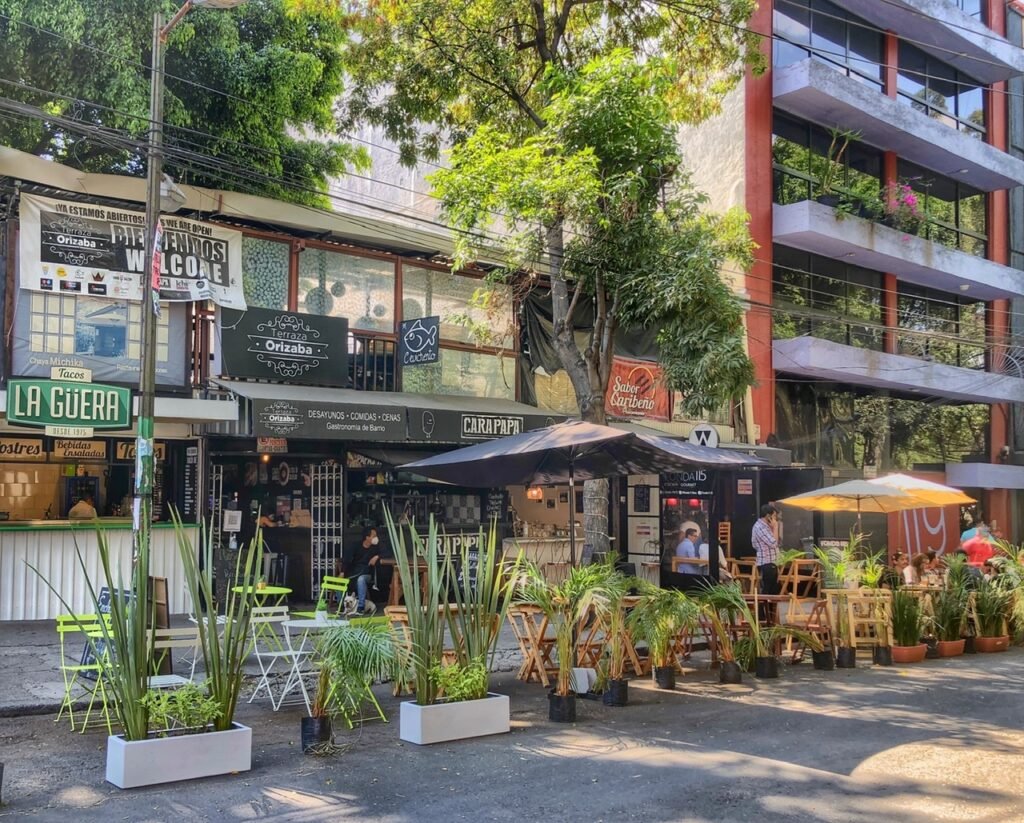
The mixed media look of this building is really eye-catching. At right, street corner in Roma Norte.
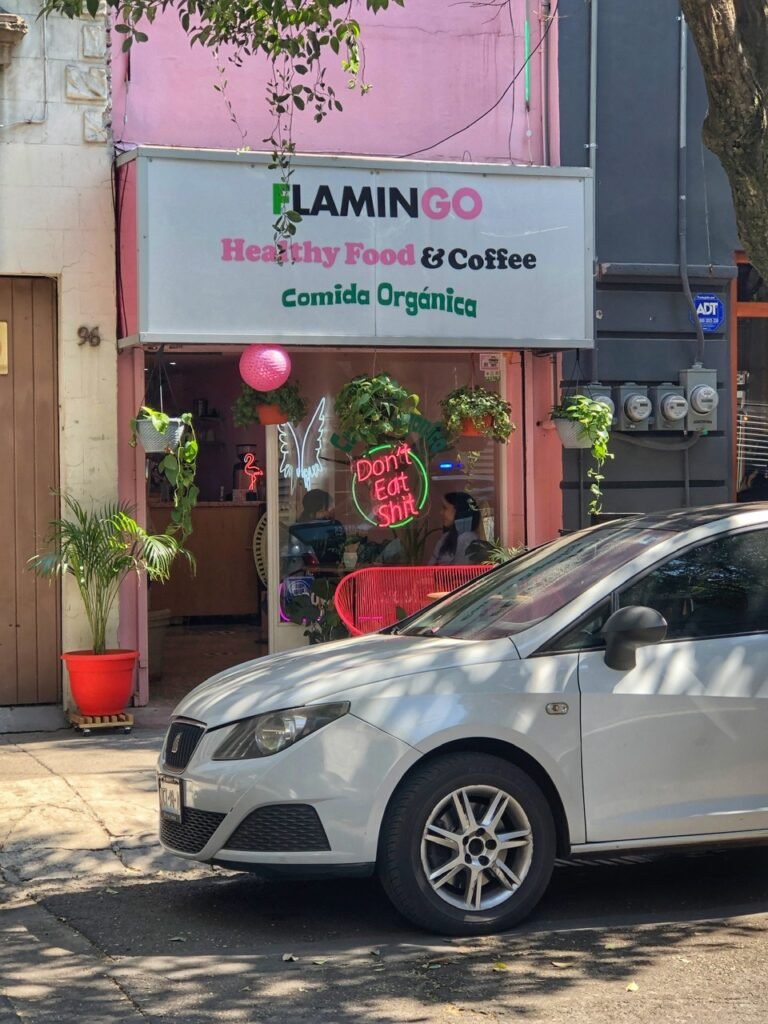
Ha! That neon sign it the best. Can we get one for the McDonald’s?!
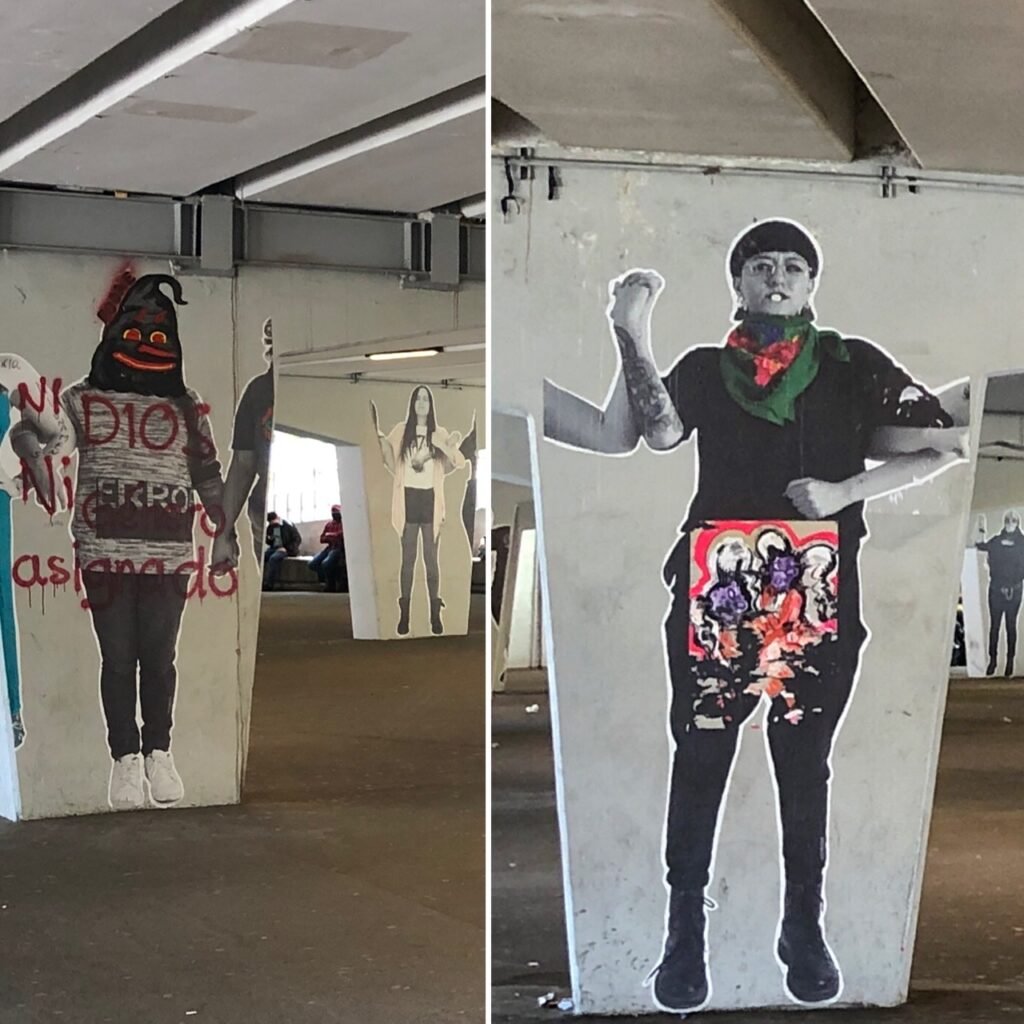
Like in the States and many parts of the world, women’s rights continue to be an issue in Mexico. We were happy to see many signs on the subway promoting awareness of sexual assault, as well as separate subway carriages for women and children. There were also many areas in Roma that had been staged for women’s empowerment and rights issues. Sadly, many of them had been graffitied over.
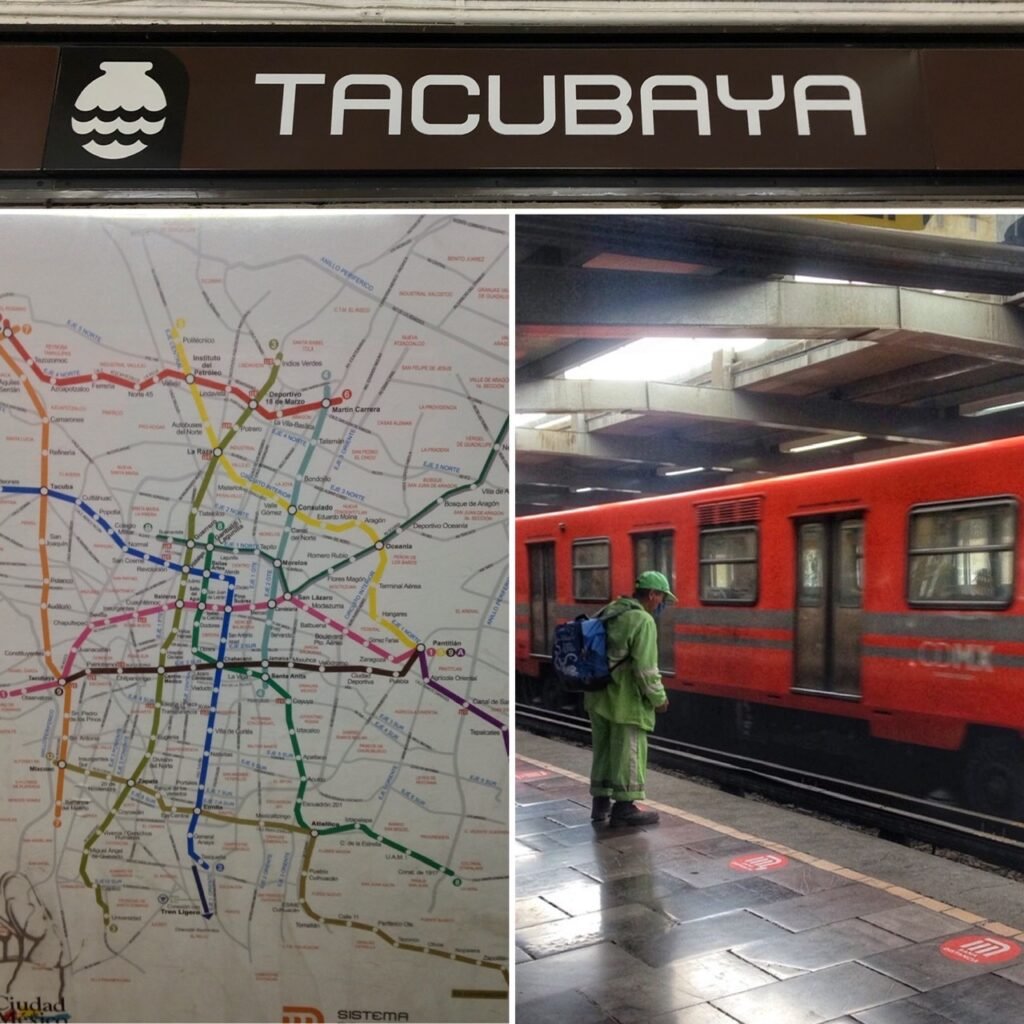
The Mexico City Metro is the biggest subway system we’d been on in awhile. The system has 12 lines, 195 stations and a total network length of 226.5 km. It’s incredibly easy to use and a ride is only $5 pesos or $.25 which includes as many transfers as you need.

We’ve never seen a cafe with this particular theme. So adorable!!!
Coyoacán

Walking nearly 6k due south from the Benito Juarez colonia, we meandered our way into our favorite neighborhood of Mexico City…so far. Coyoacán, which, we believe, has the makings of Mexico City’s first pueblo magico. This former rural village, which has now been swallowed by Mexico City, was an artists’ haven for years, including a studio for the renowned Frida Kahlo. This in itself makes it clear why it’s so charming and legendary. Today it exudes a relaxed and laidback atmosphere and sizzles with vibrant color, strolling street musicians, eclectic cafes, and quirky shops. This picture pretty much sums it up. We went on a Sunday so it was surging with activity and energy.
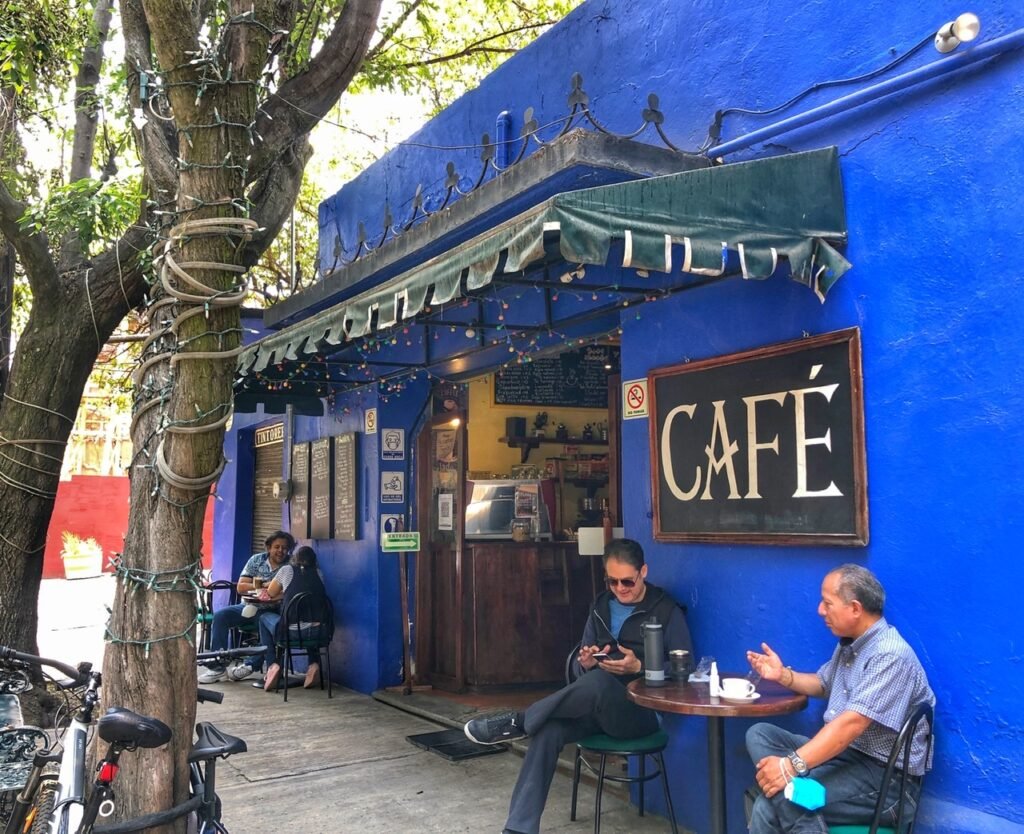
And the hypnotic blue…

It’s absolutely mesmerizing against the jacarandas. Here is the azul home (1929-1954) and museum of Frida Kahlo. She is remembered for her self-portraits featuring pain and passion, and bold, vibrant colors. Throughout Mexico she is revered for her attention to Mexican and indigenous culture and by feminists for her depiction of the female experience. If you haven’t seen Salma Hayek’s portrayal of her in the 2002 film, we highly recommend. It also tells the story of her tumultuous life with Diego Rivera (also a painter) and illicit affair with Leon Trotsky (a Russian Marxist revolutionary who was assassinated in Mexico City.)
The line to get into the Frida house, which although we wanted to see, we gave a hard no to upon seeing the congestion, and the $270 peso ($13.40) ticket price.

Oh, if we only had a home, that rug would be crawling into our backpacks. ?
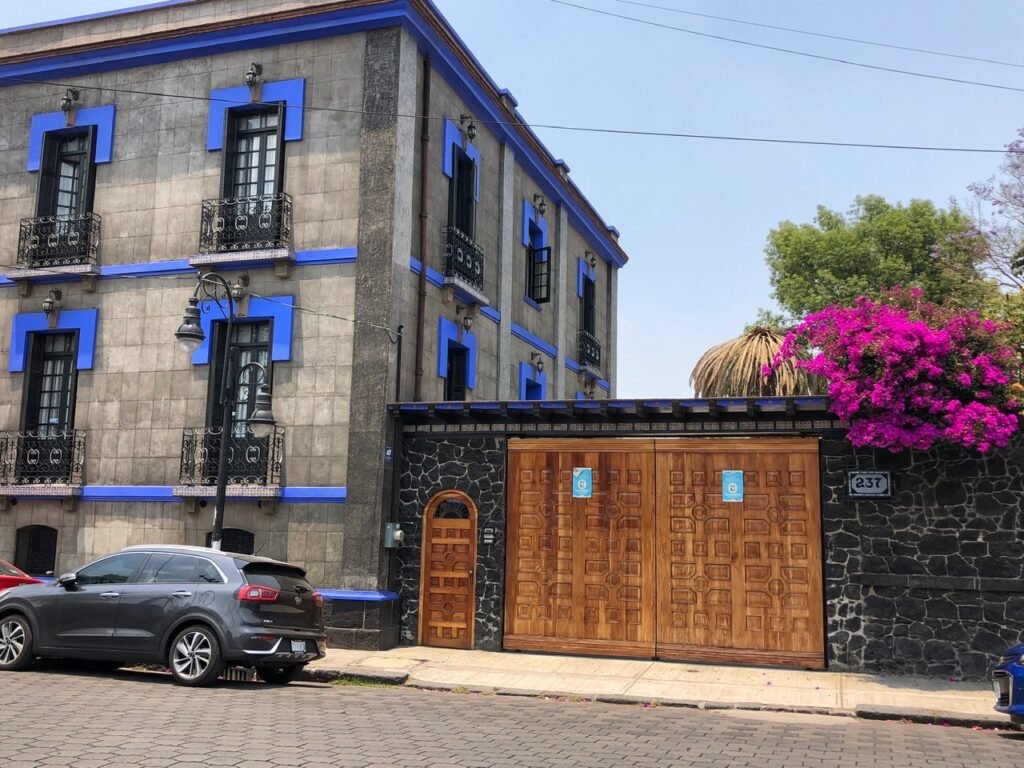
What striking contrasts.

Plaza de la Conchita, a quiet refuge in Coyoacán. When the Spanish conquistador Hernan Cortes arrived in Coyoacán he built the Church of “Conchita” on what once was a pre-Hispanic ceremonial center where the first mass was held in the region. It has been closed for some time due to restoration work.
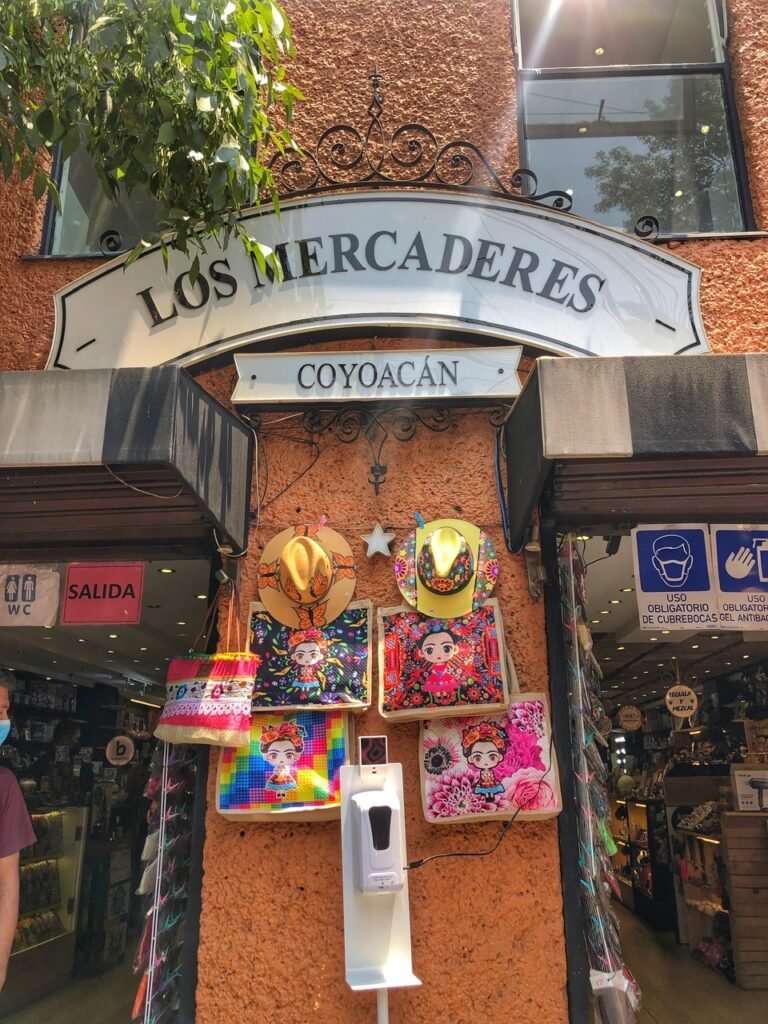
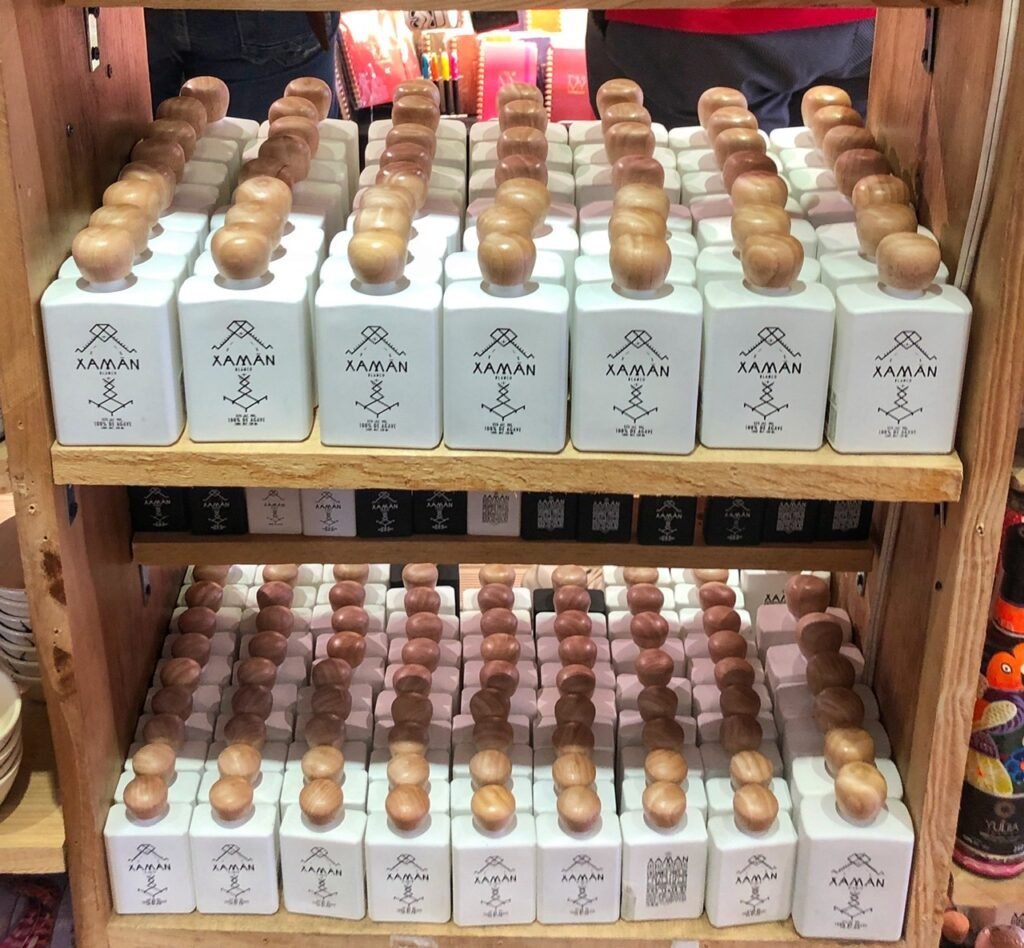
Los Mercaderes is an ideal market to shop for unique and fun souvenirs, such as these diminutive bottles of mezcal.
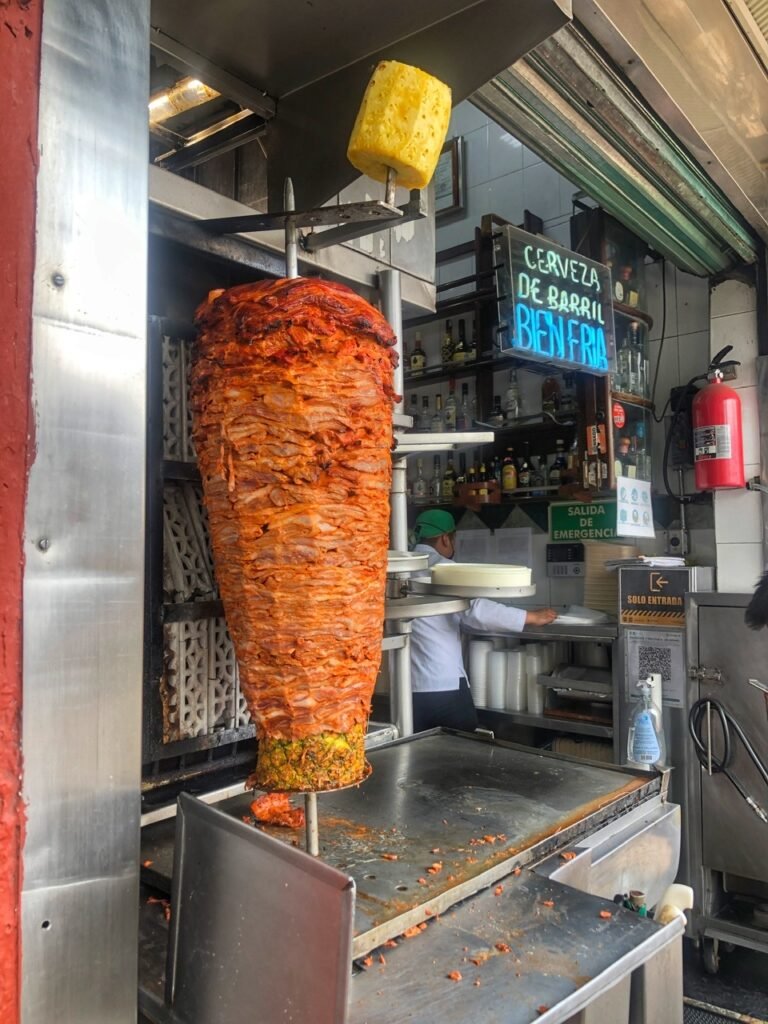
Prepping for al pastor. Mmmm. By the way, did you know this taco is not actually Mexican?! It was inspired when Lebanese immigrants escaping the Ottoman Empire brought their Middle Eastern food with them to Mexico around the turn of the 20th century. Naturally, it was originally a take on shawarma.

We did not have this for lunch. But, speaking of Lebanon, we did find a fantastic vegan falafel place and got a much needed Middle Eastern food fix. Naturally this led us to a discussion of the next countries we’d like to visit in this region. Ha. We never stop travel planning!
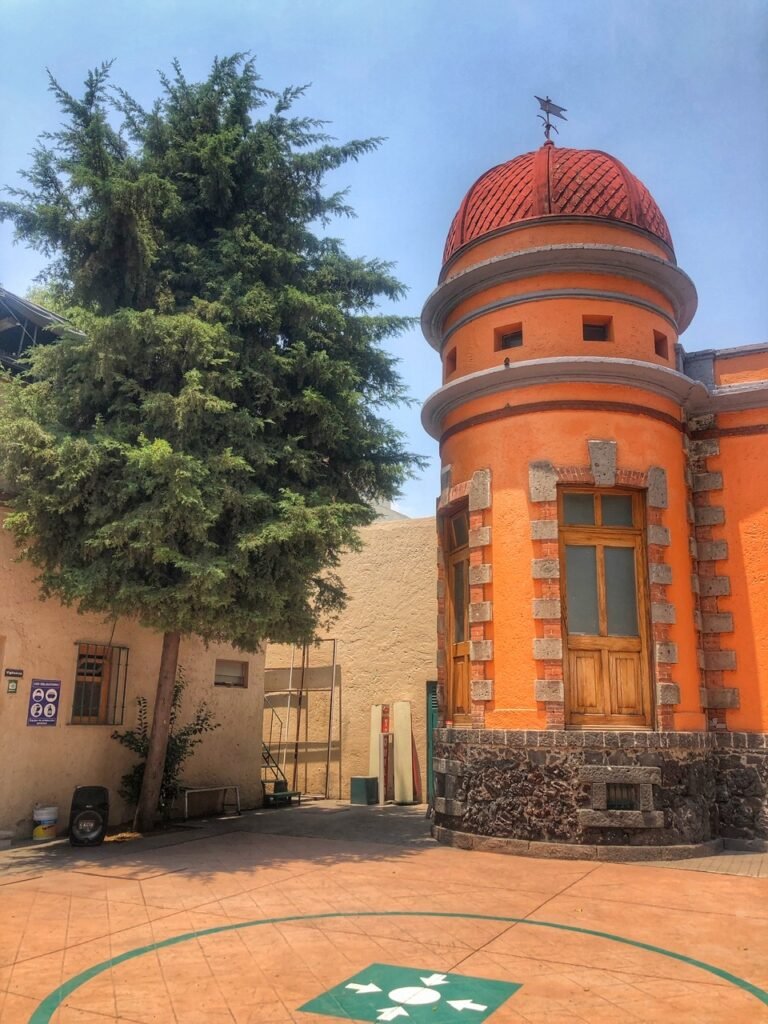
Another museum, but seemed to be closed? P.s. notice the green box in the foreground. These are sprinkled throughout Mexico City’s landscape and serve as designated meeting points where people are supposed to gather during an earthquake. It’s supposed to be a “safe” zone where you won’t get hit by falling objects and debris, but the city is so cramped, this is virtually impossible. Mexico City is situated on one of the world’s most unstable foundations, which is the sinking Aztec giant of Tenochtitlán. It has had over 1000 quakes in the past year alone, and Mandy has already experienced her first tremor while in the city. In fact, one day last week, there were 13 recorded!! ?
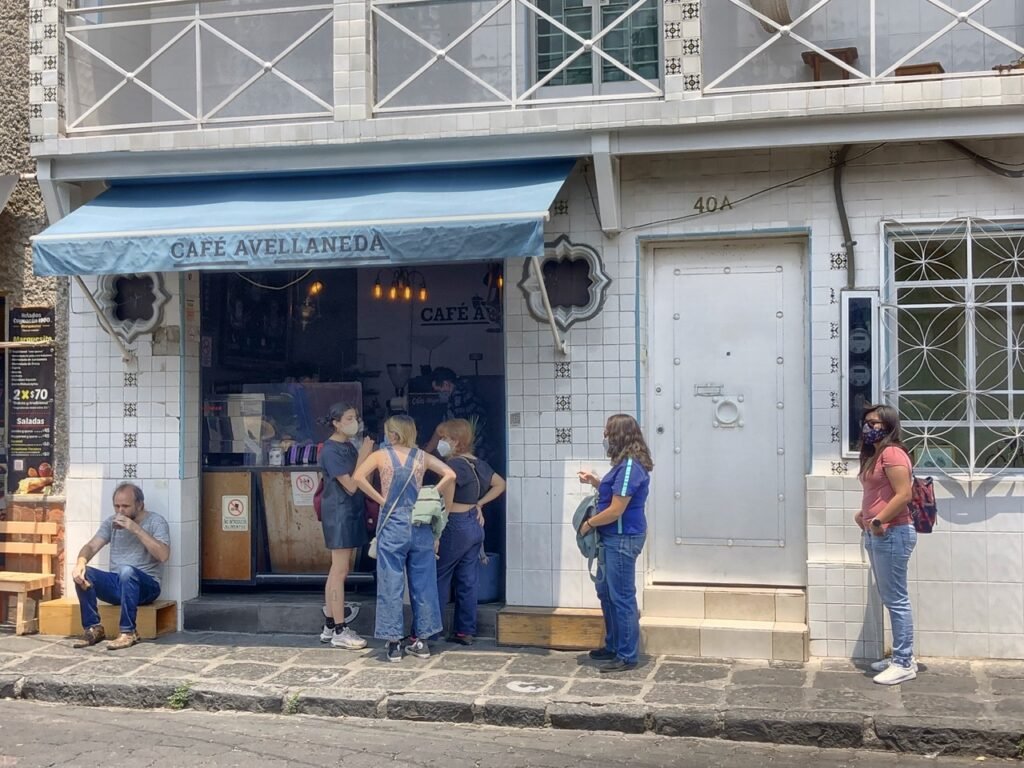
Mexicans are so polite and rule abiding. Even social distancing guidelines are mostly being followed. They try anyways.
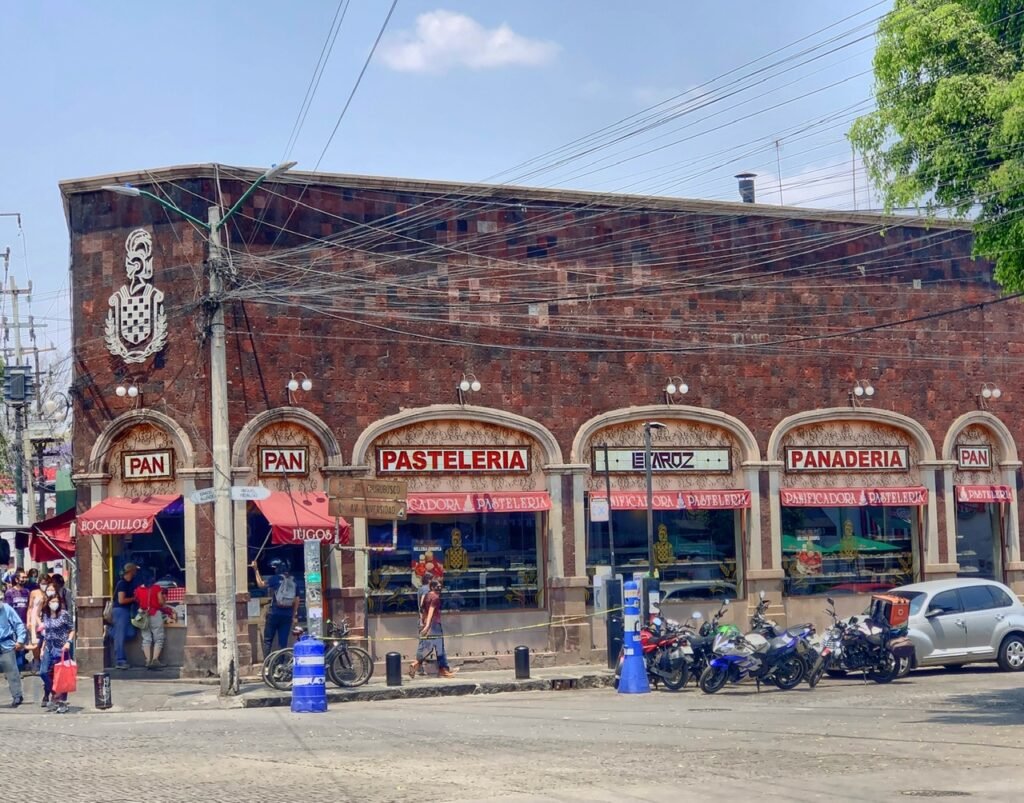
One of the historic buildings. Just love it, but check out those wires!
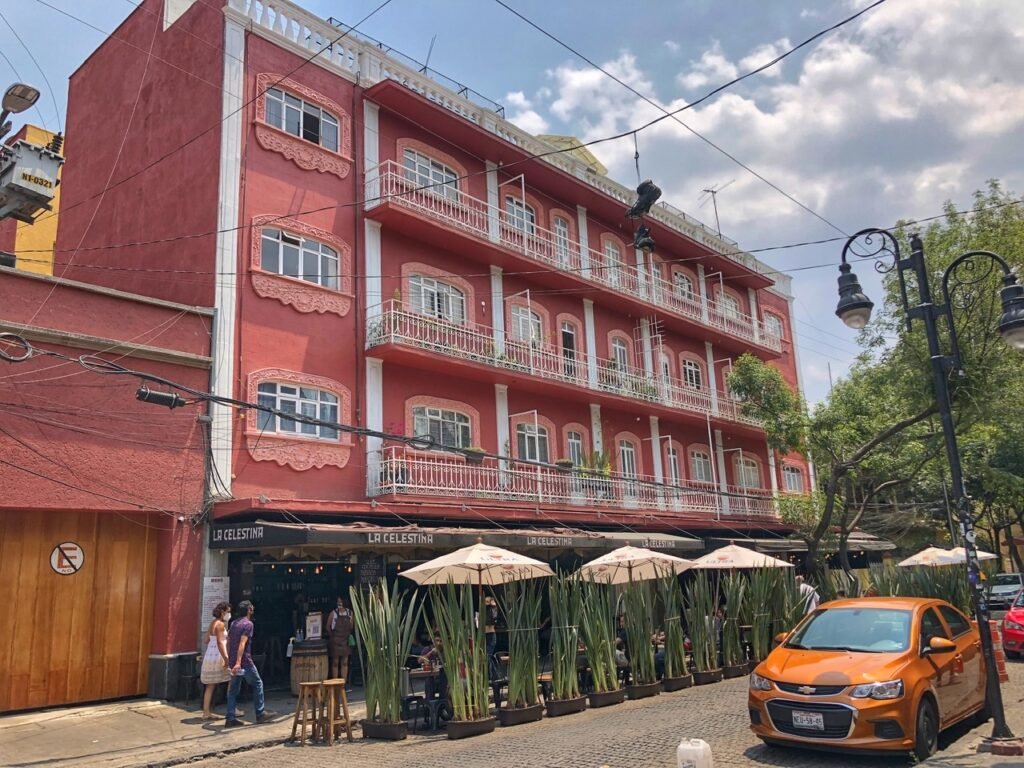
This seems to be an apartment building. So much character!
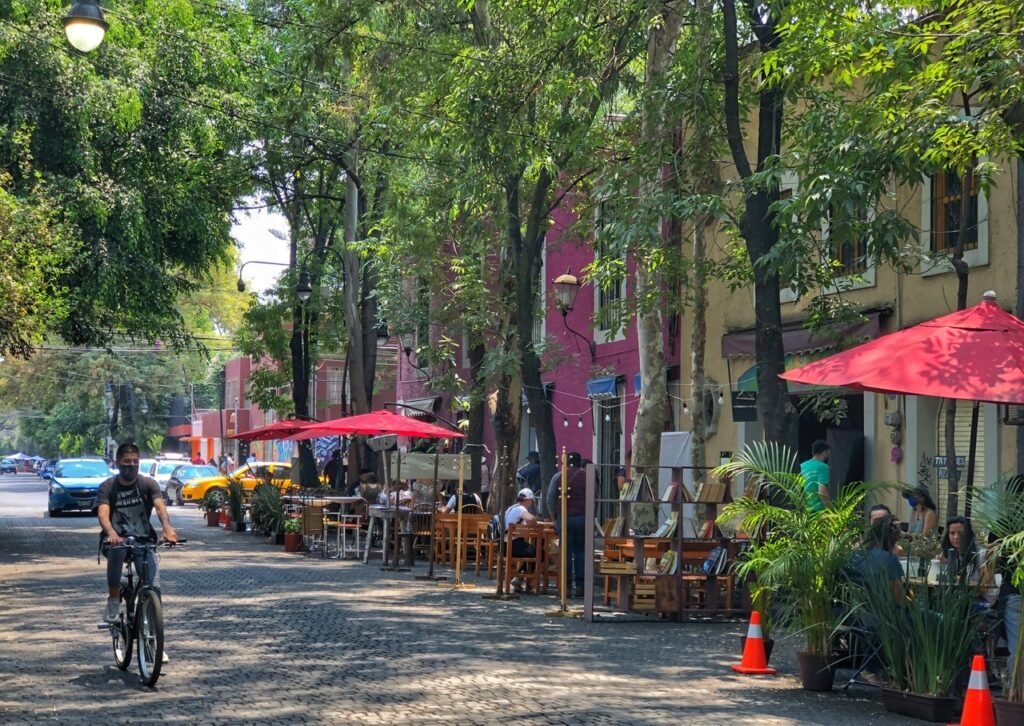
Tree-lined streets everywhere. Yeah, if we moved to Mexico City, this might need to be our hood…
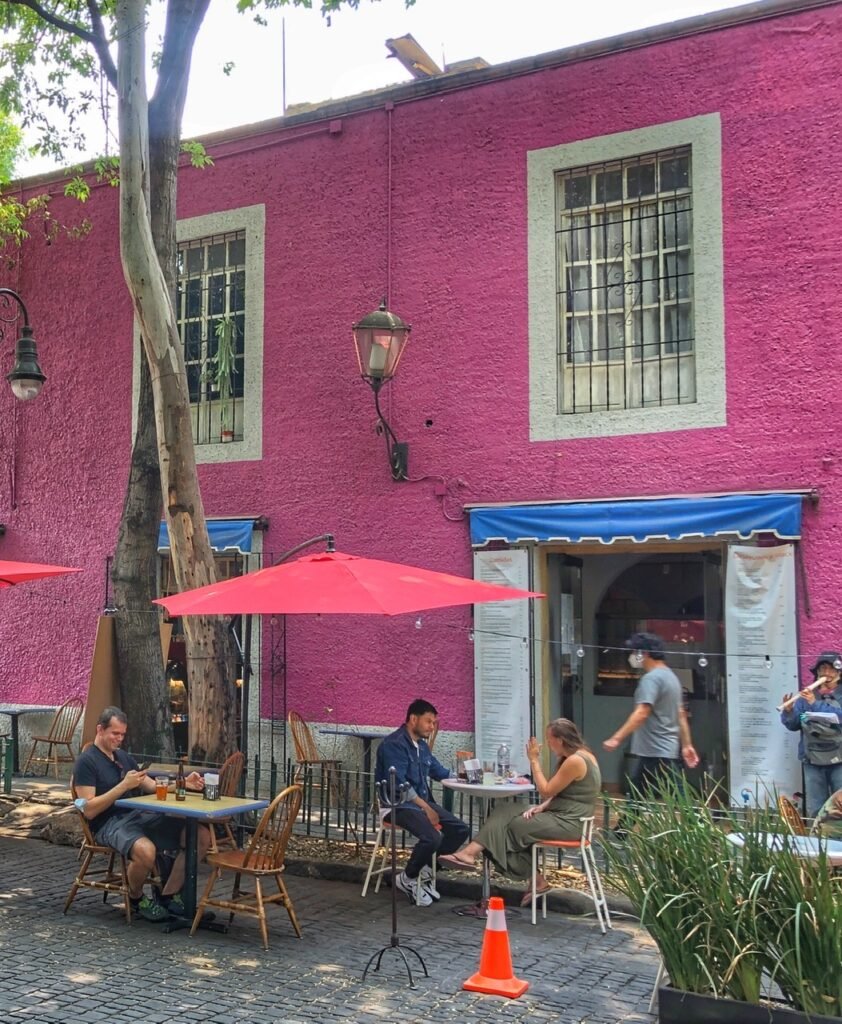
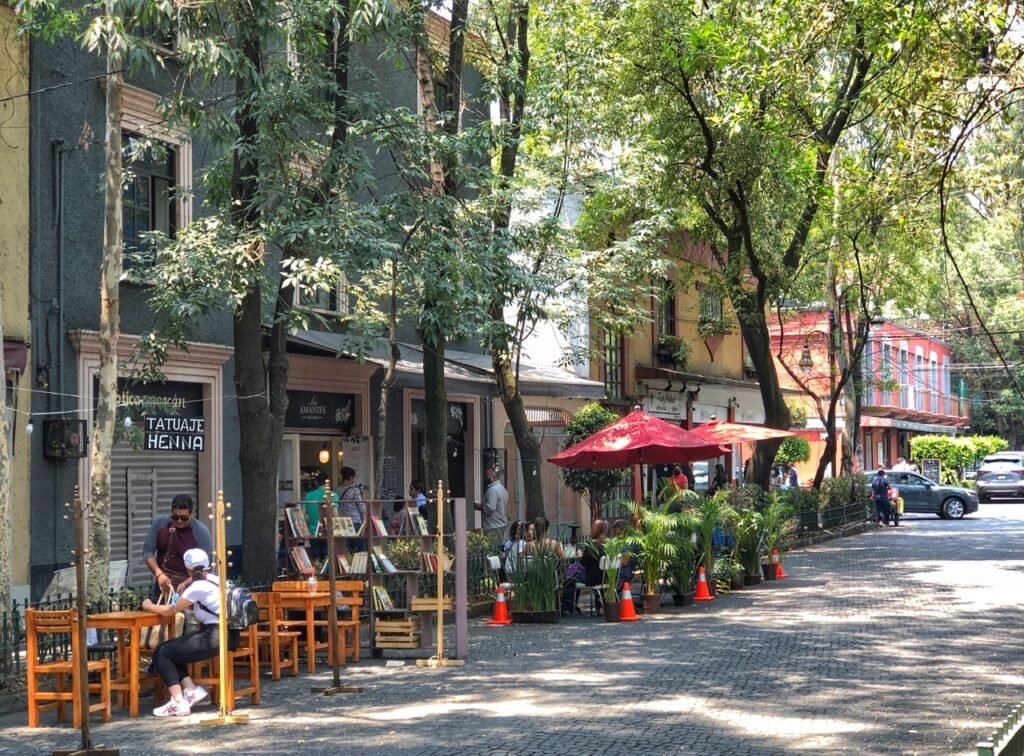
More cafes and street scenes.
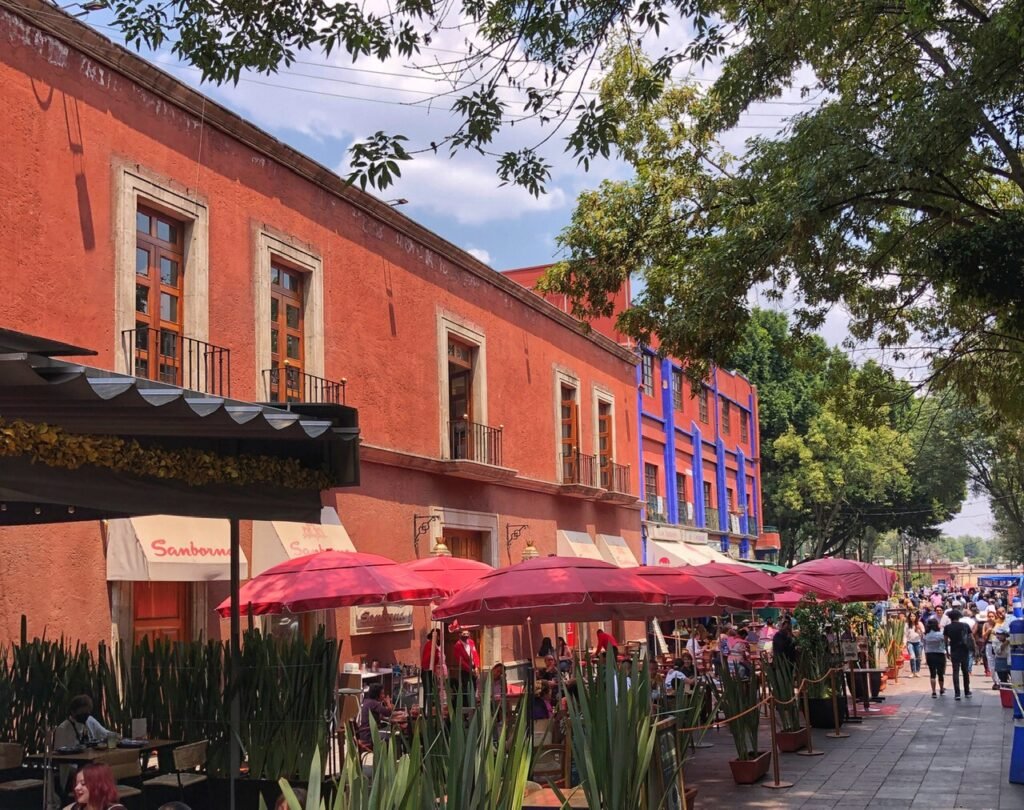
Near the main plaza, you can see how packed it gets on the weekends! Pretty easy to avoid the crowds if you want to though.
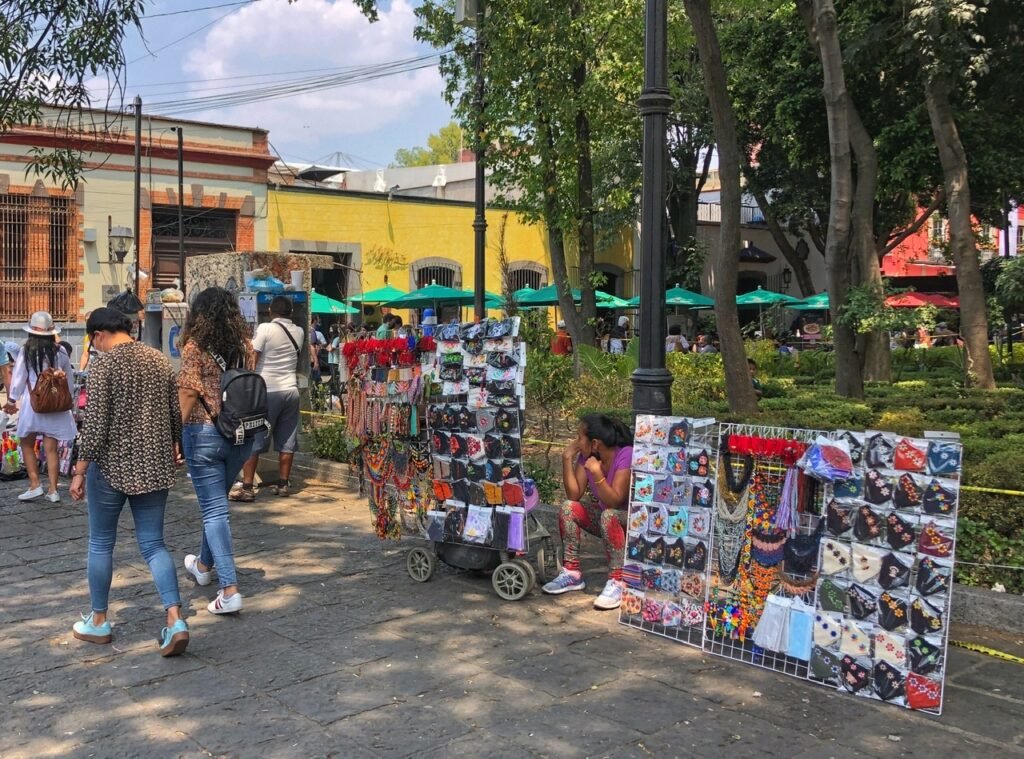
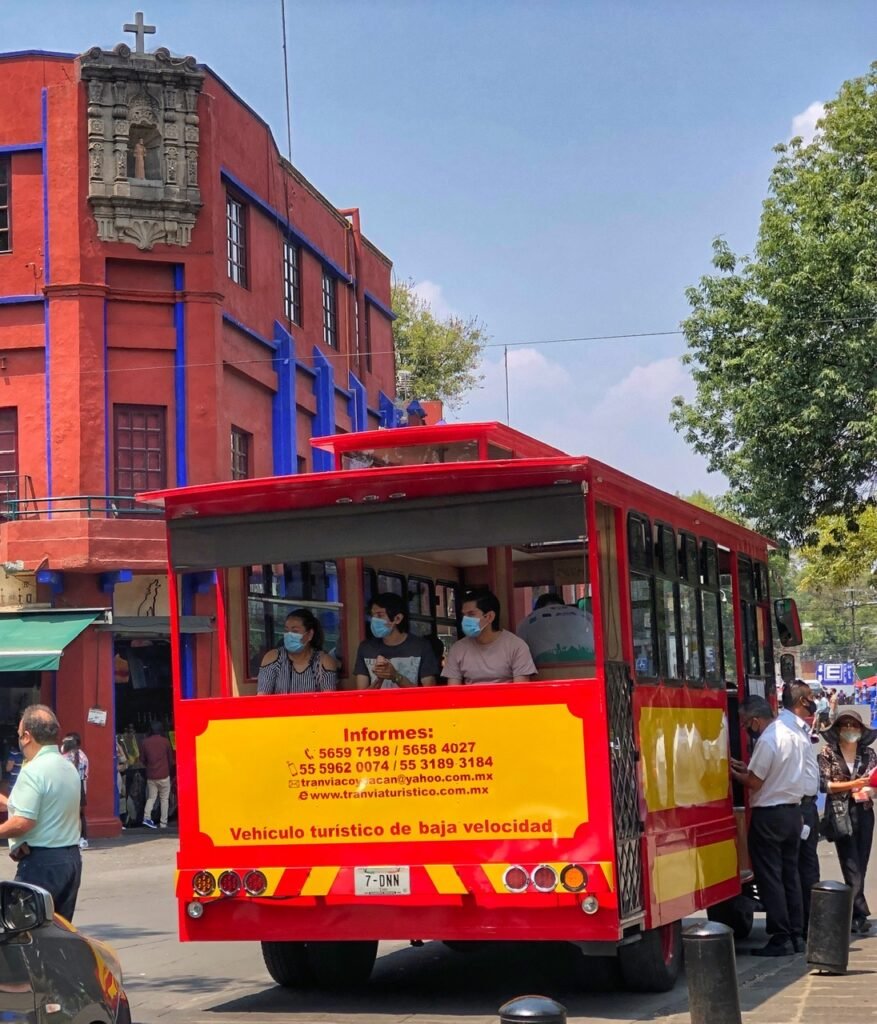
Masks, masks, masks. At least some entrepreneurs have capitalized this year! Just a (responsible) sign of the times! But obviously doesn’t keep people from living life. We’re so happy we haven’t let it stop us either.

The beautiful, yet slightly dilapidated Parroquia San Juan Bautista. This baroque church & former convent was founded early in Cortes’ 16th-century conquest of Aztec Mexico.
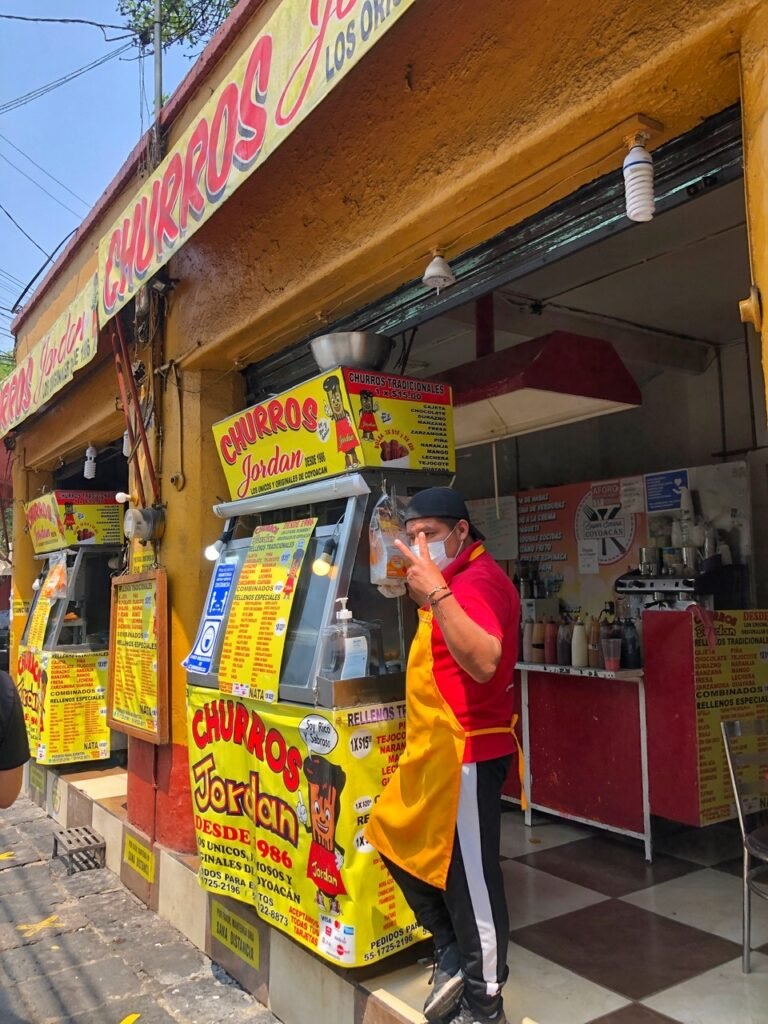
All this churro guy wants is peace. Us too Chico ??
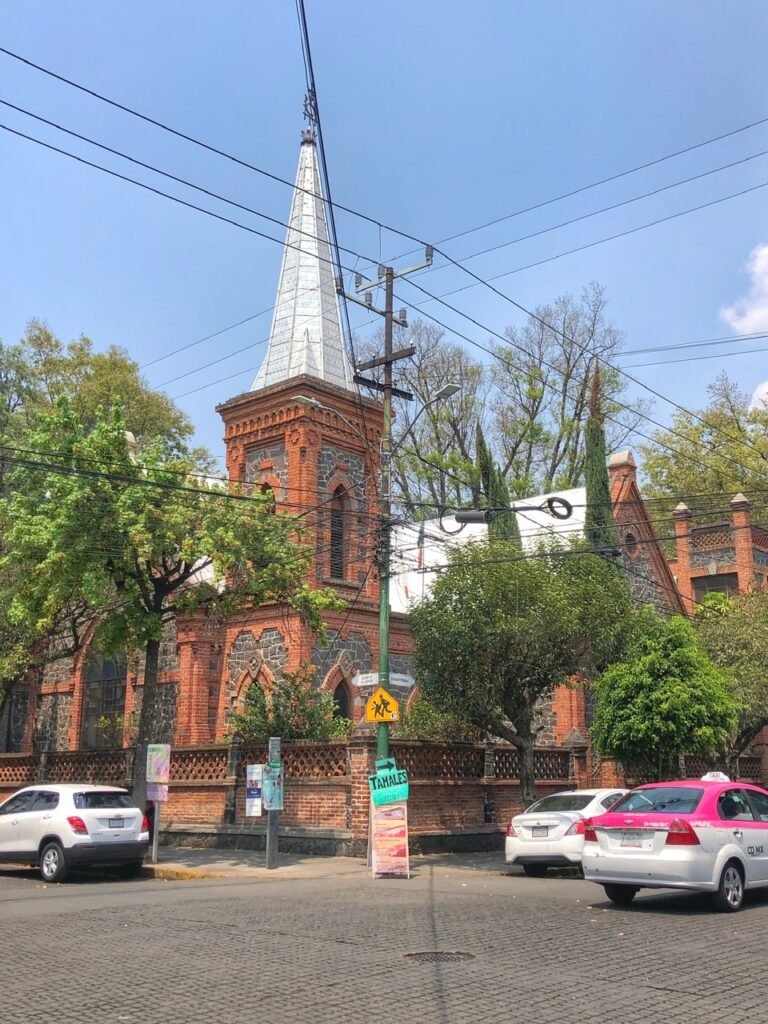
God clearly dropped this church off in the wrong country. Germany maybe?!
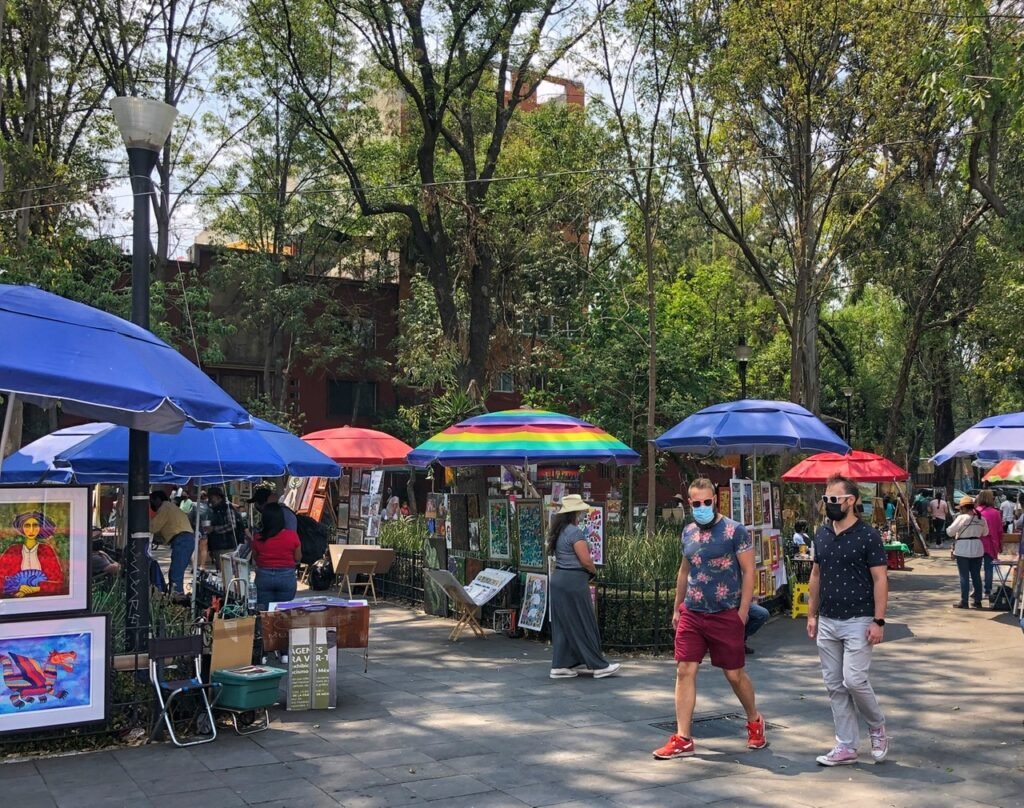
This park was full of local artists and vendors. So great to see!
Our Housesit with Bellota in Mexico City
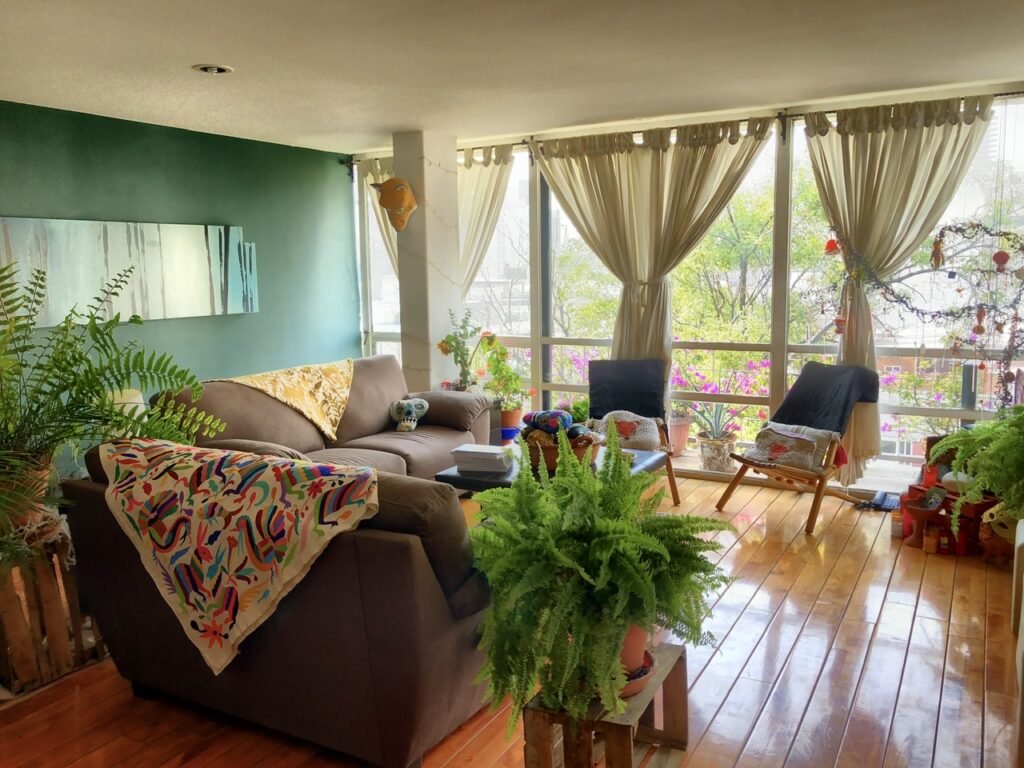
We seriously love housesitting. In Mexico City it gave us the opportunity watch Bellota for a week in a Polanco neighborhood high rise. The American expats we sat for had so many plants. We fell quickly in love with the natural light and the environment. In fact, it’s a lot like how we decorated when we had a house and made us feel quite at home.

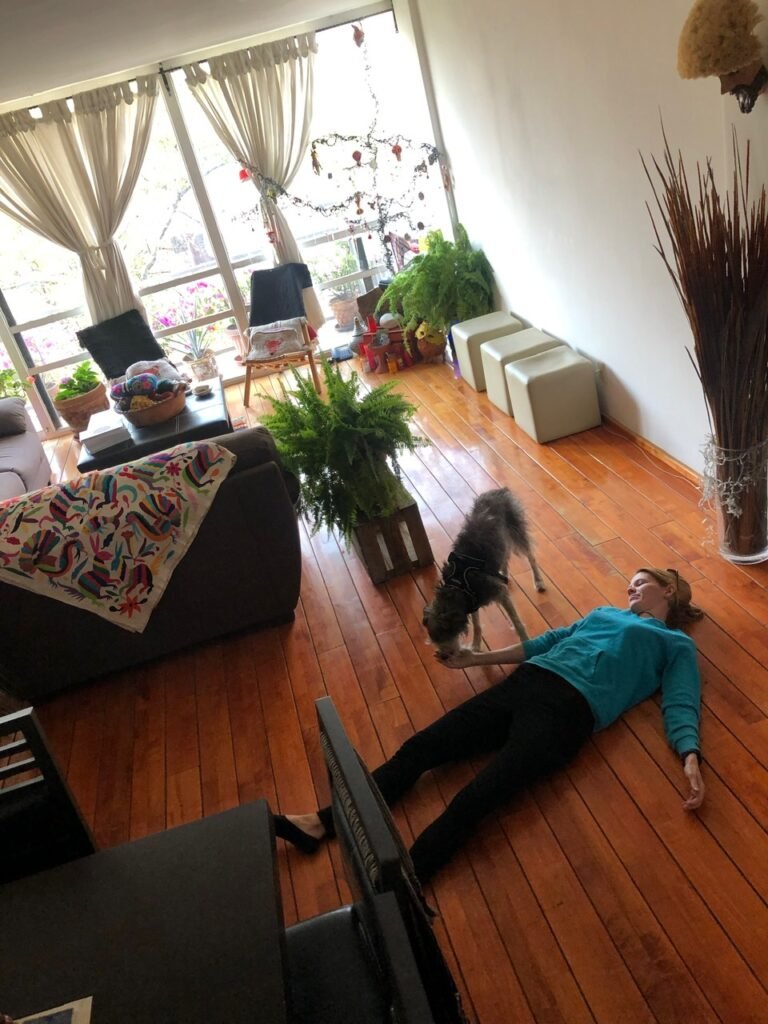

Our new friend for two weeks was Bellota, which means acorn. She was only a year old and fittingly, was just learning the art of chasing squirrels. Poor thing had a rough start to life and was found in a trash can as a puppy. ![]() Understandably she was little bit skittish at first. Bellota’s mom, suggested we lay down on the floor which worked like a charm! And before long, we were well past the skittish stage.
Understandably she was little bit skittish at first. Bellota’s mom, suggested we lay down on the floor which worked like a charm! And before long, we were well past the skittish stage.
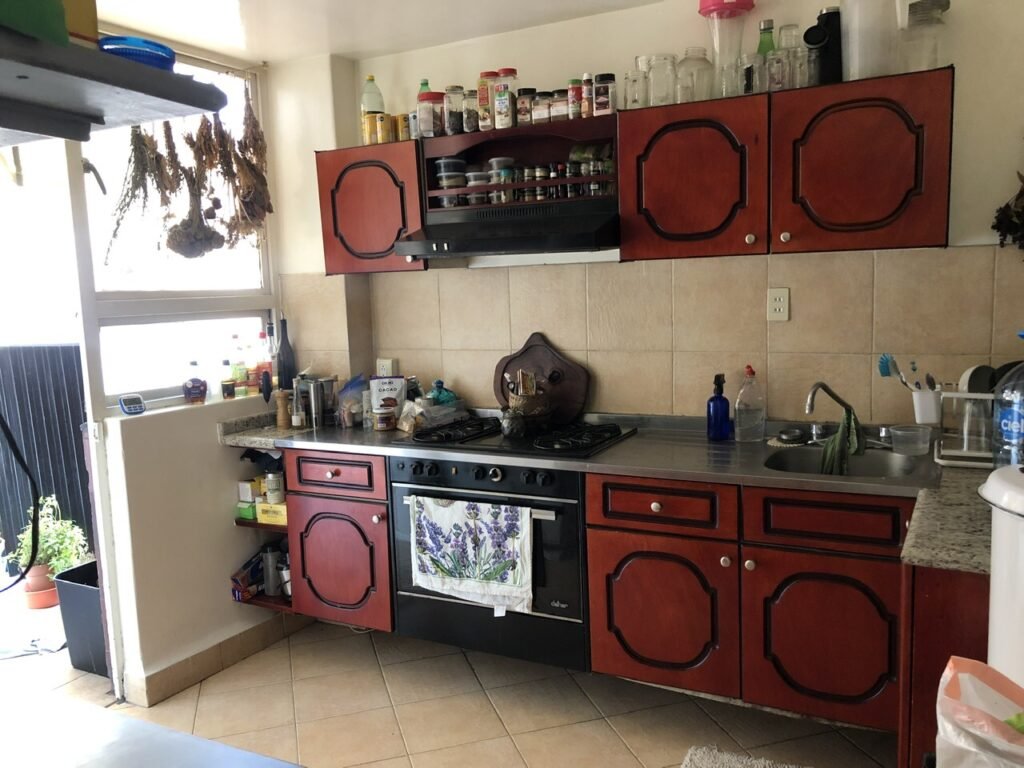
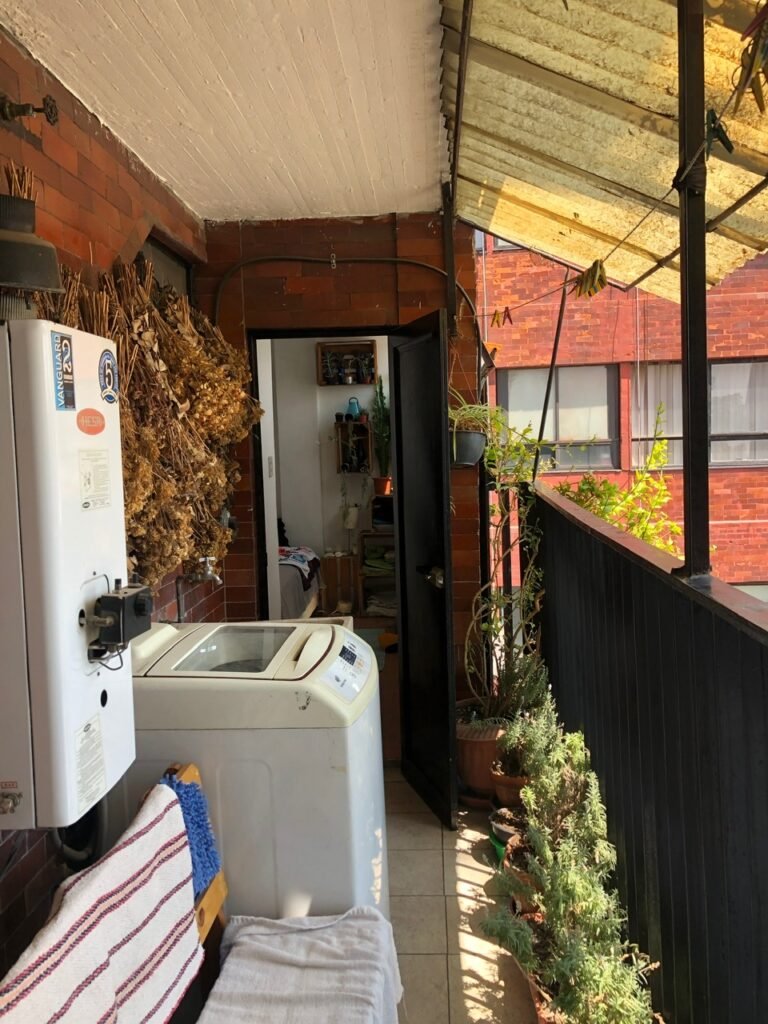

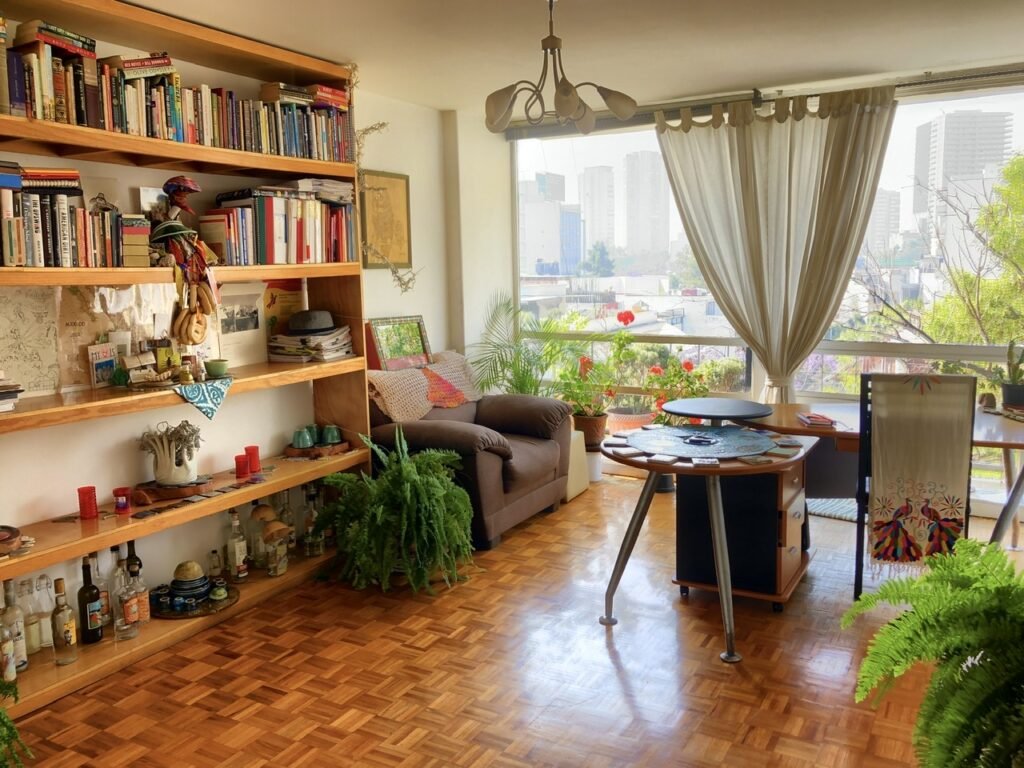
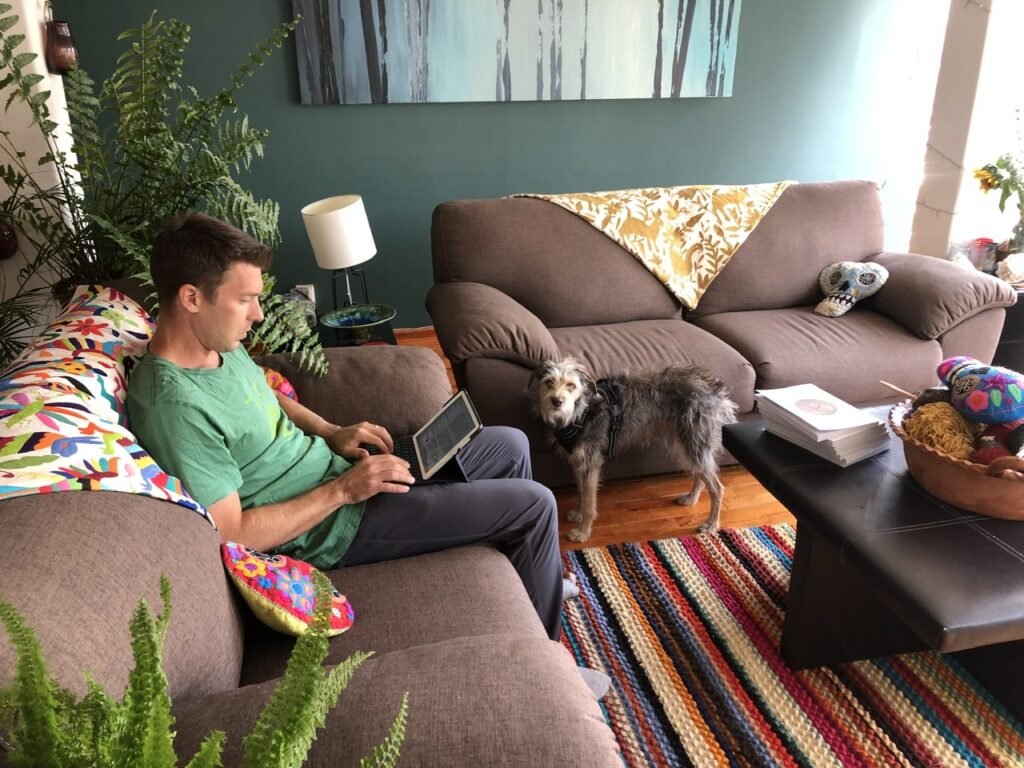
Other photos of the flat. We love our time here very much and were disappointed when the owners had to return a week early from the beach. Would definitely sit for them again in a heartbeat.

